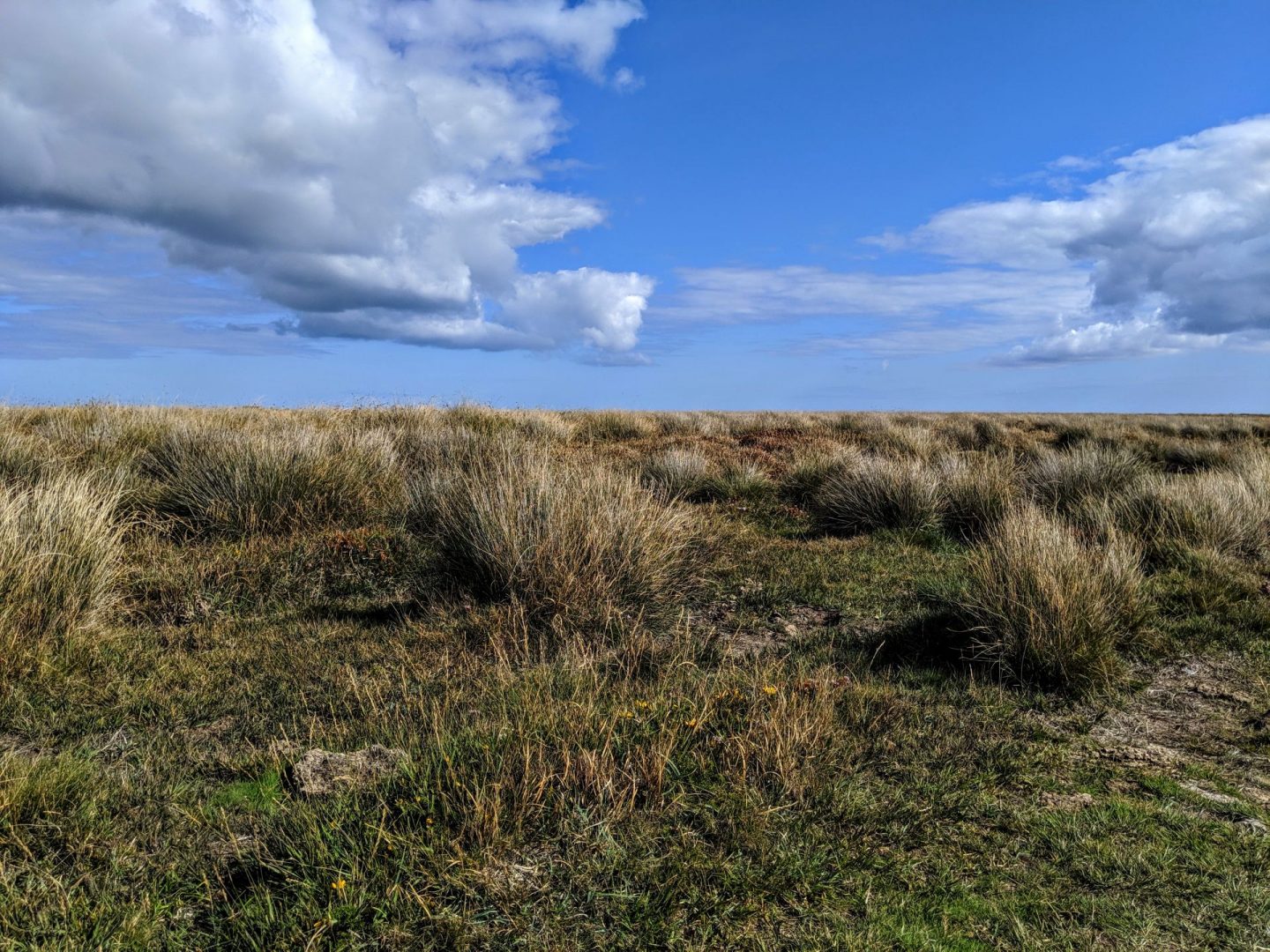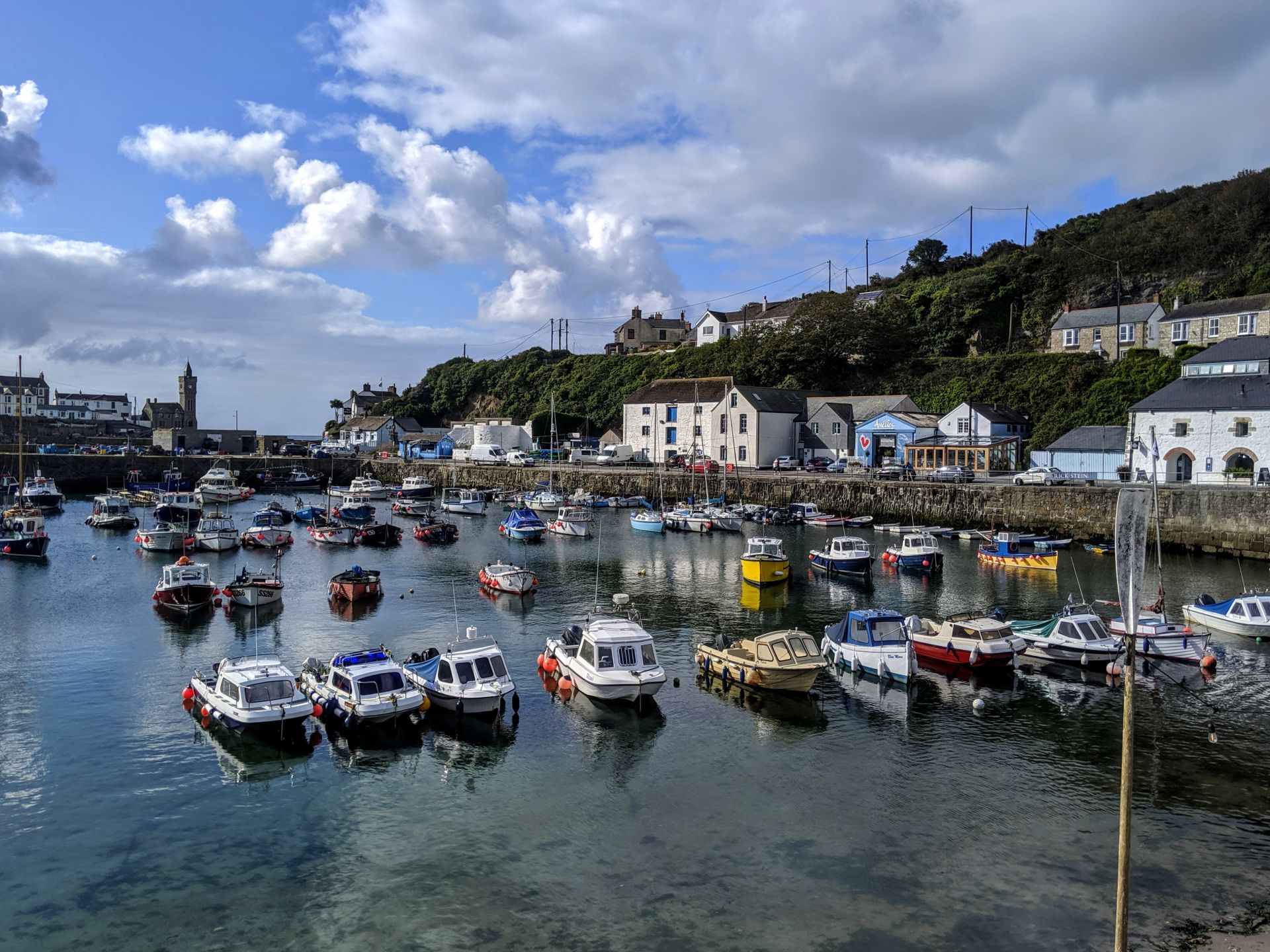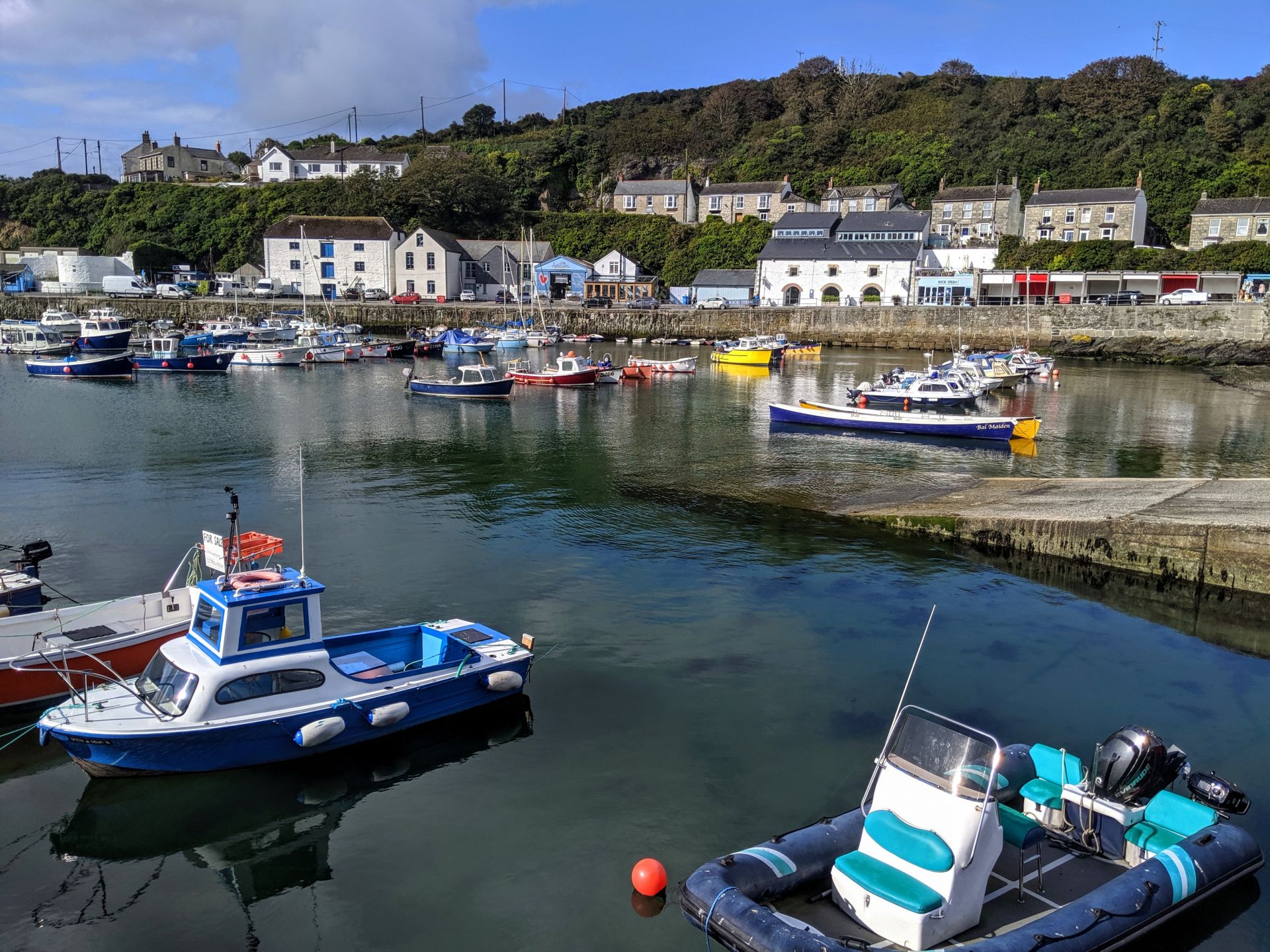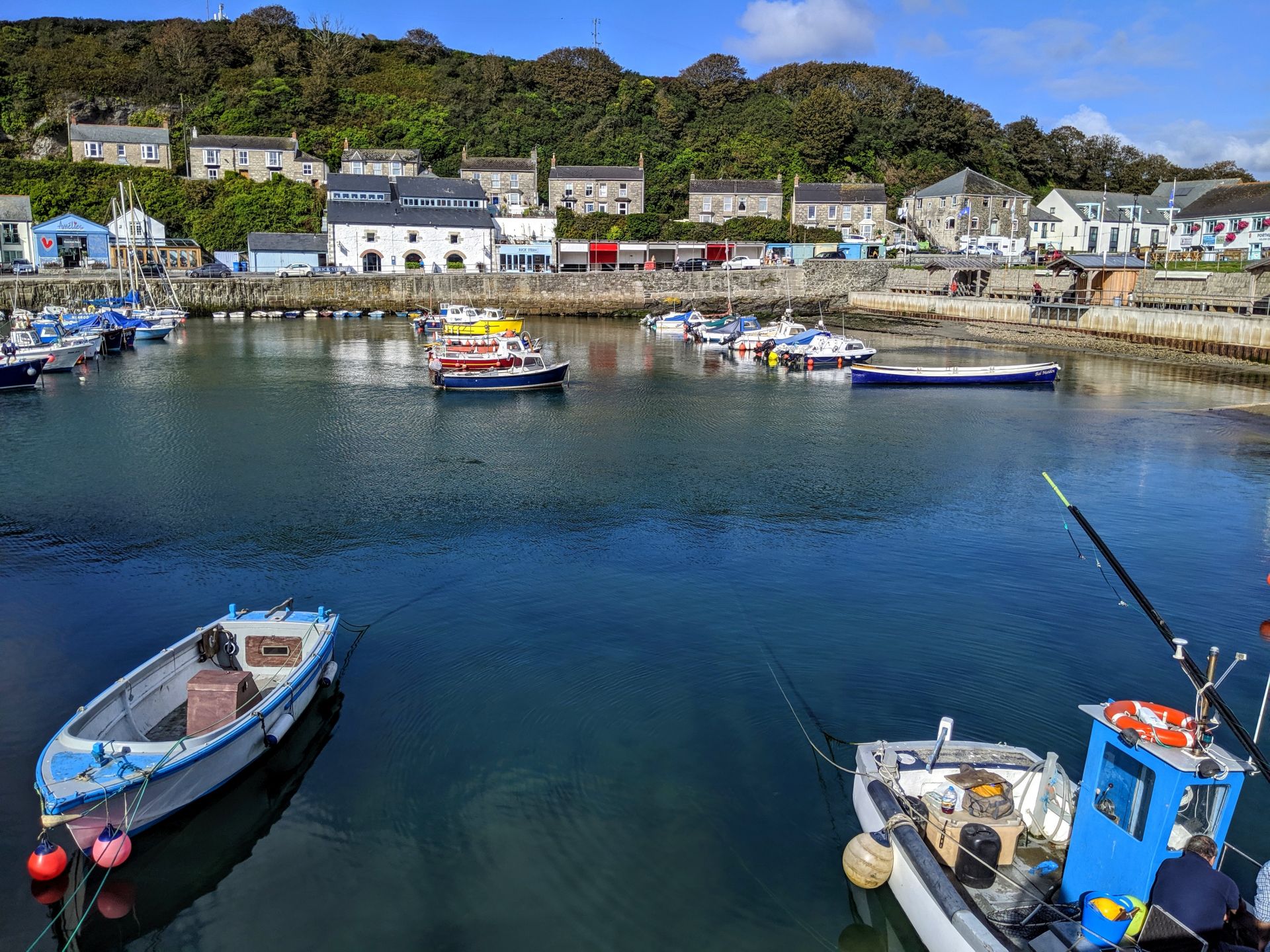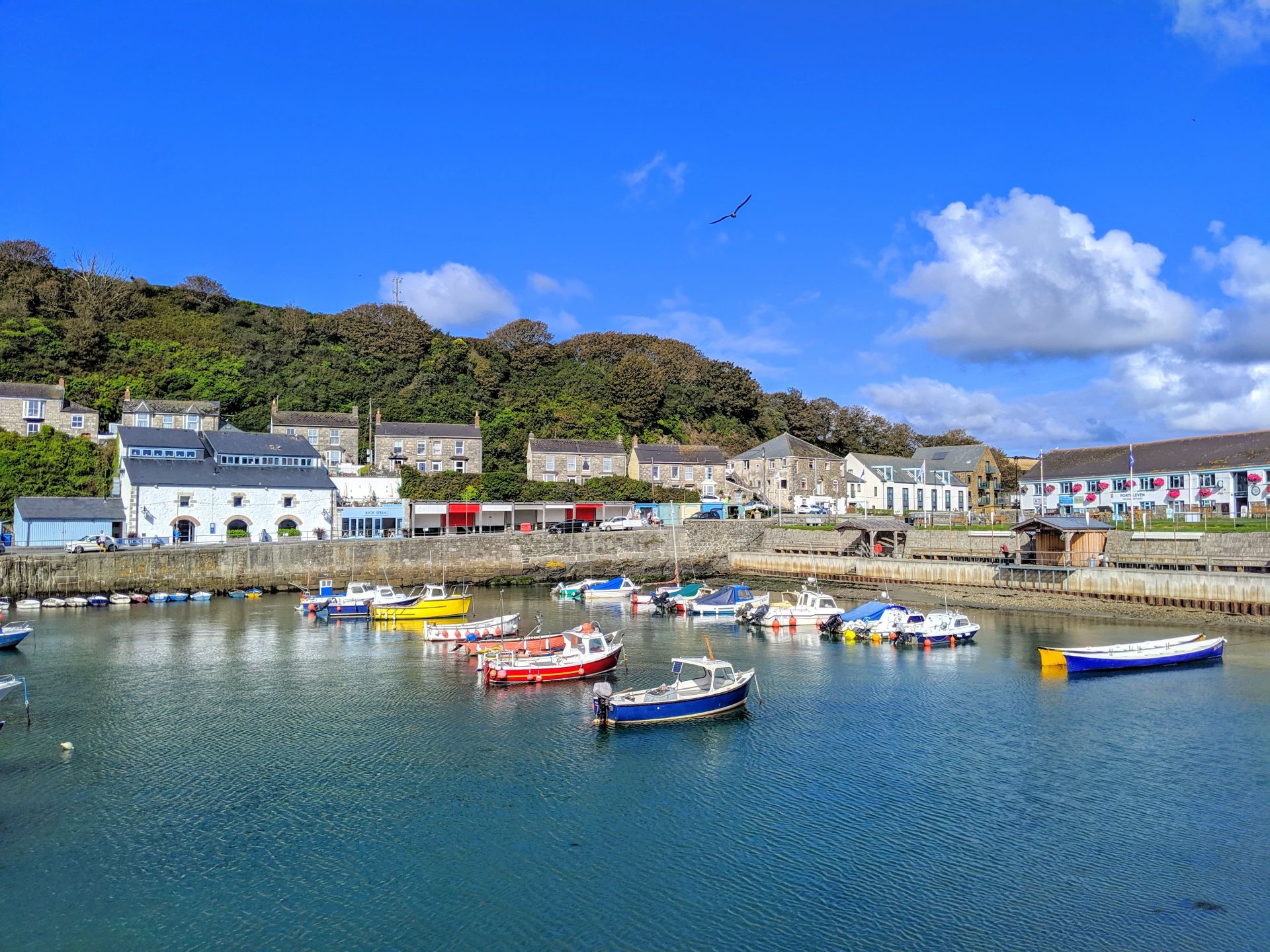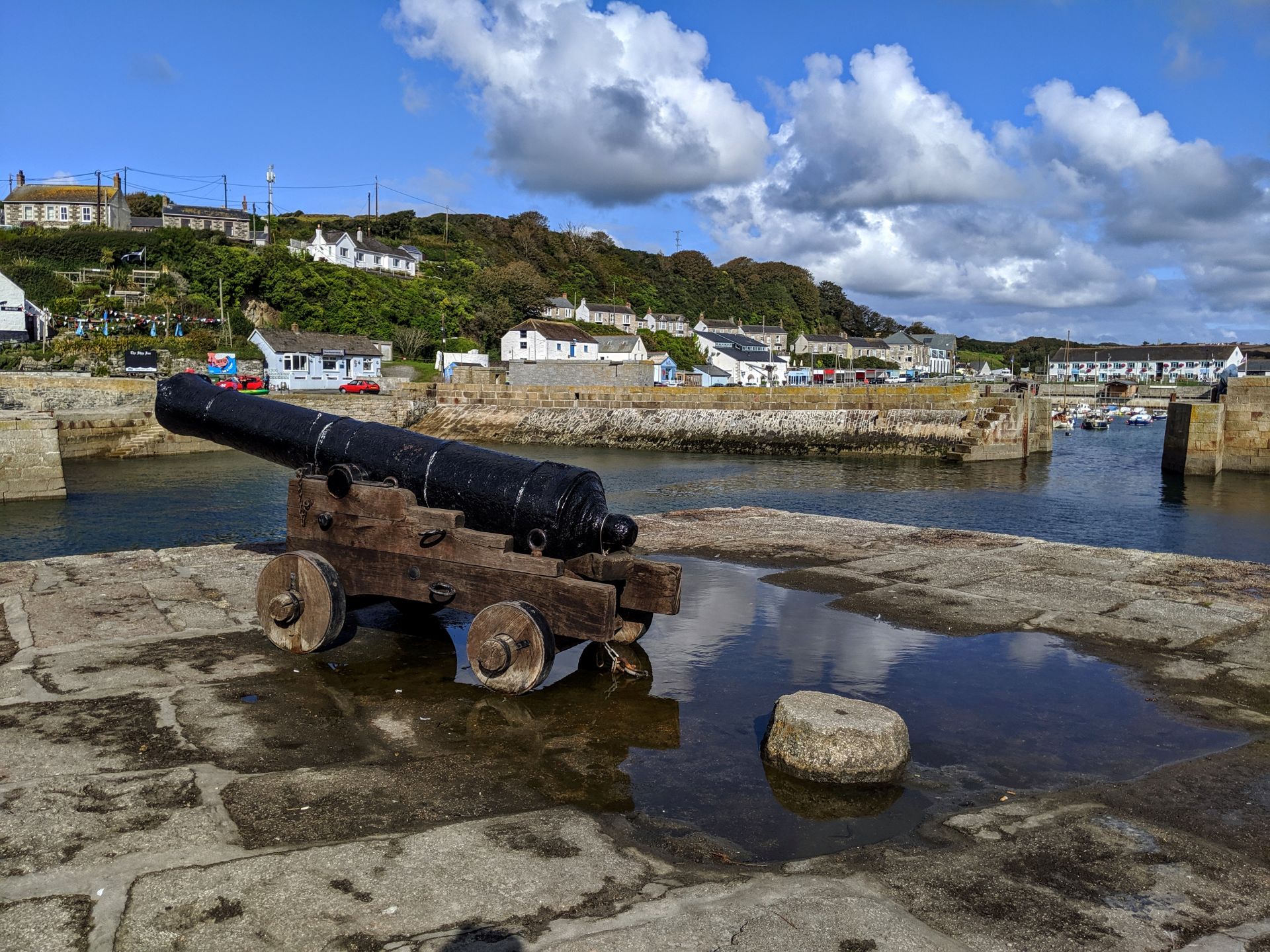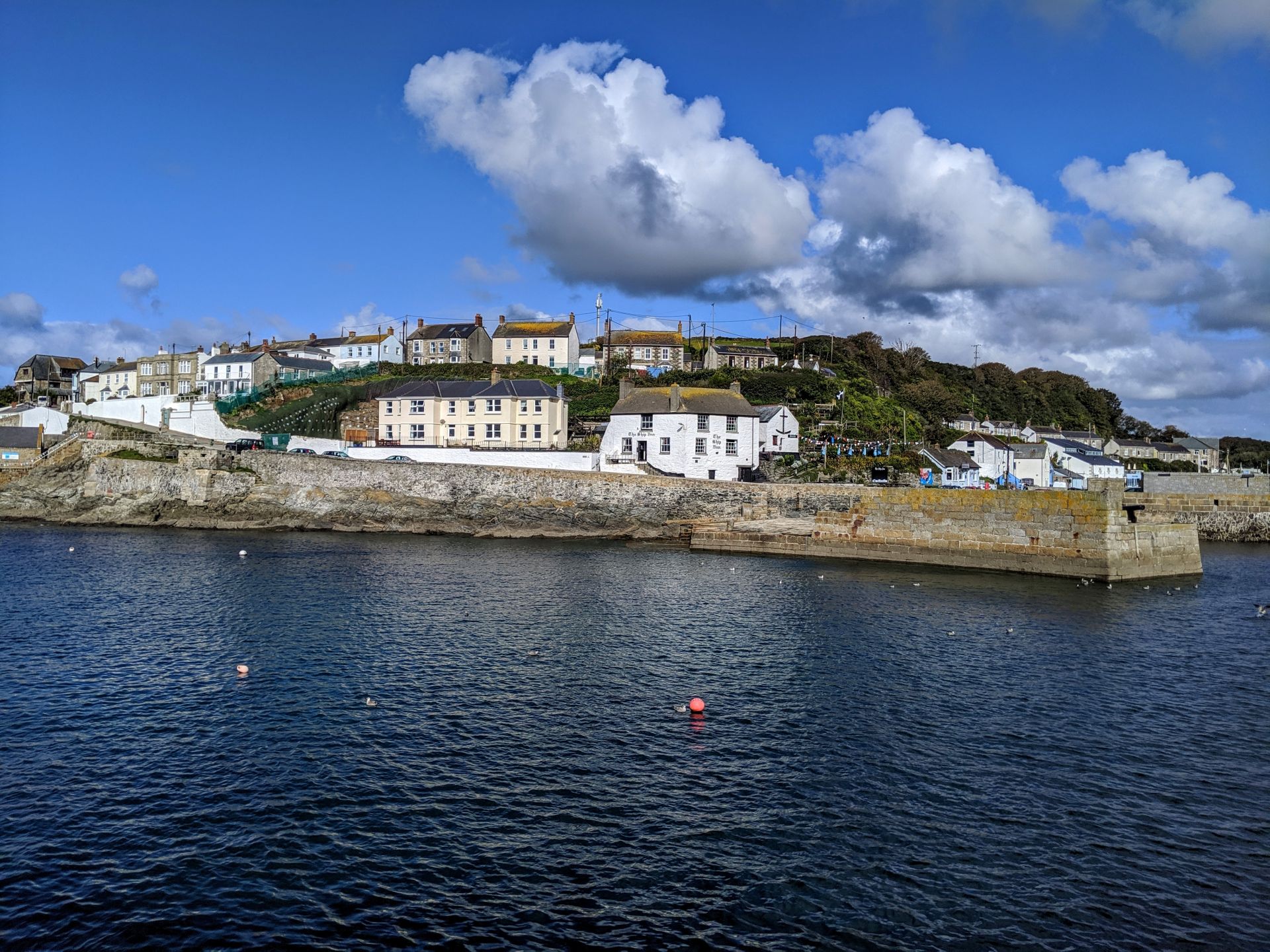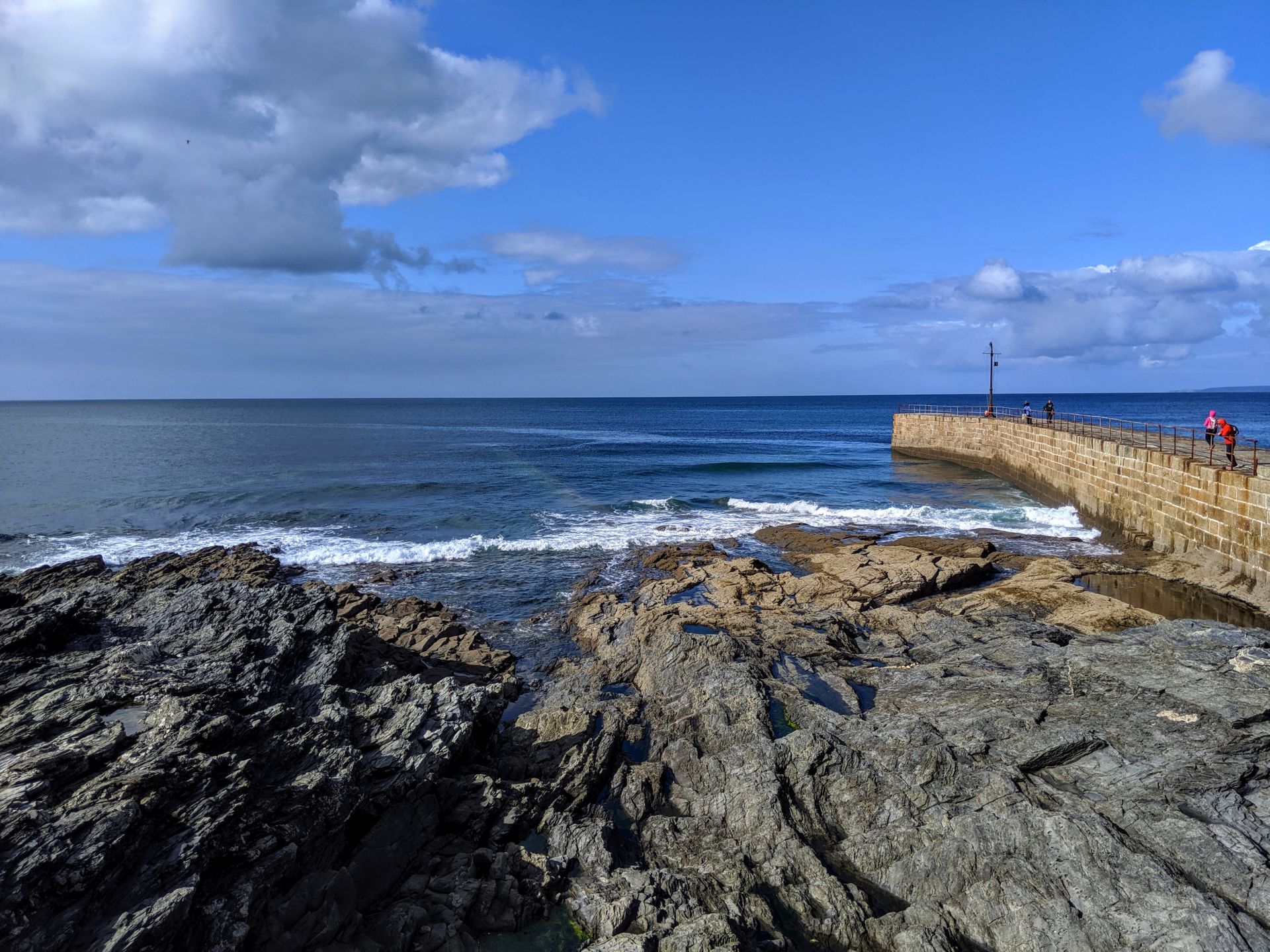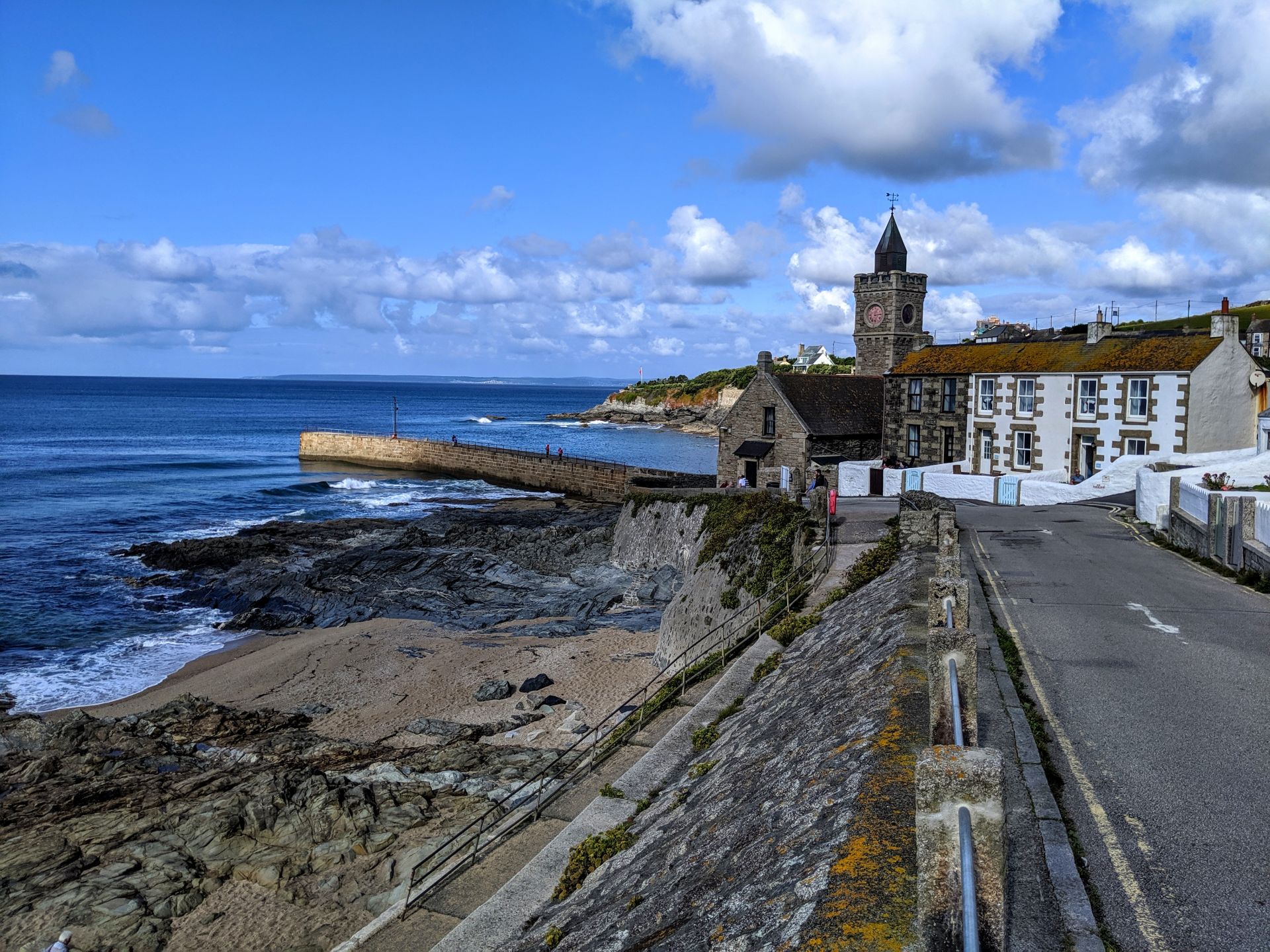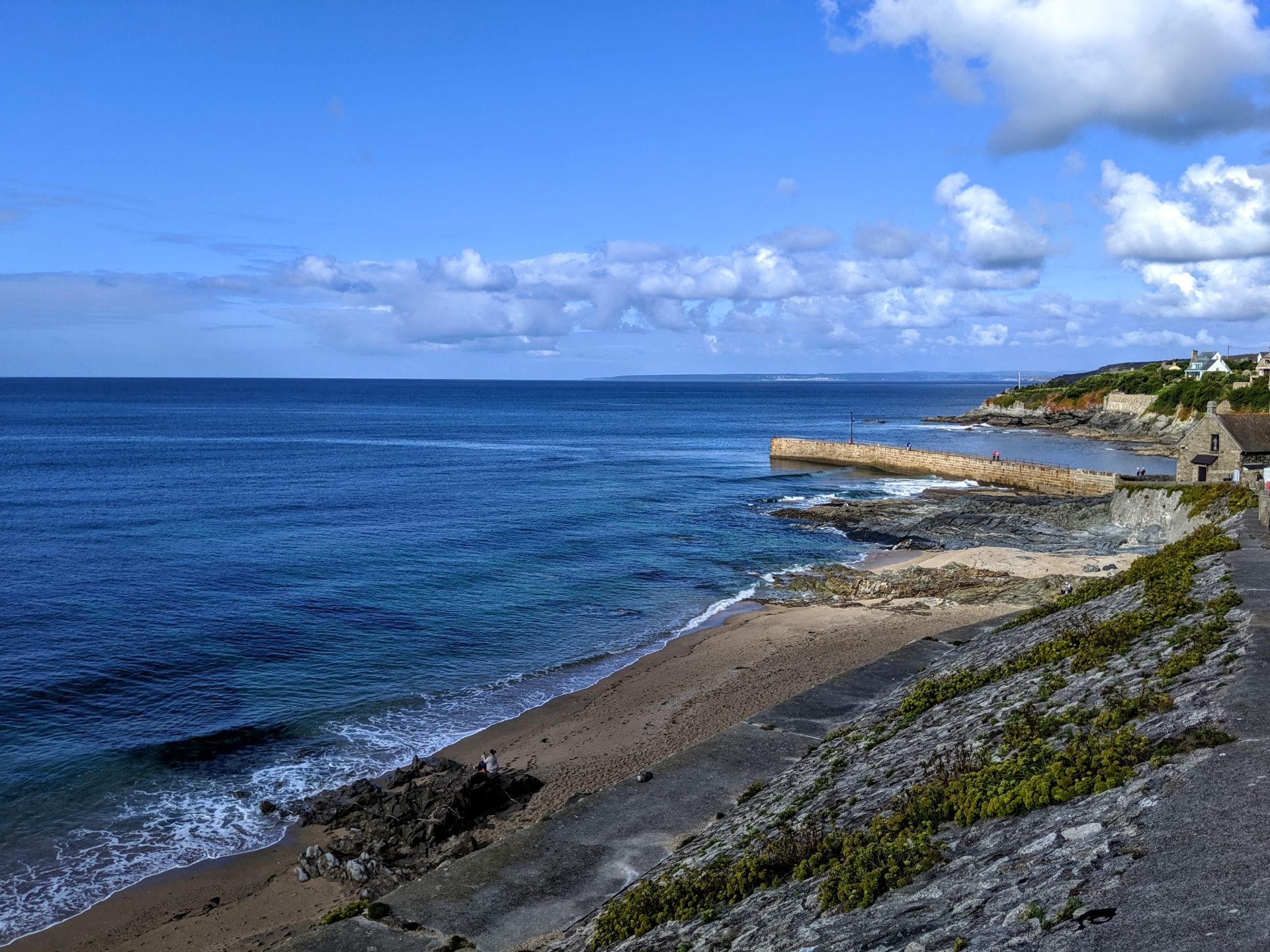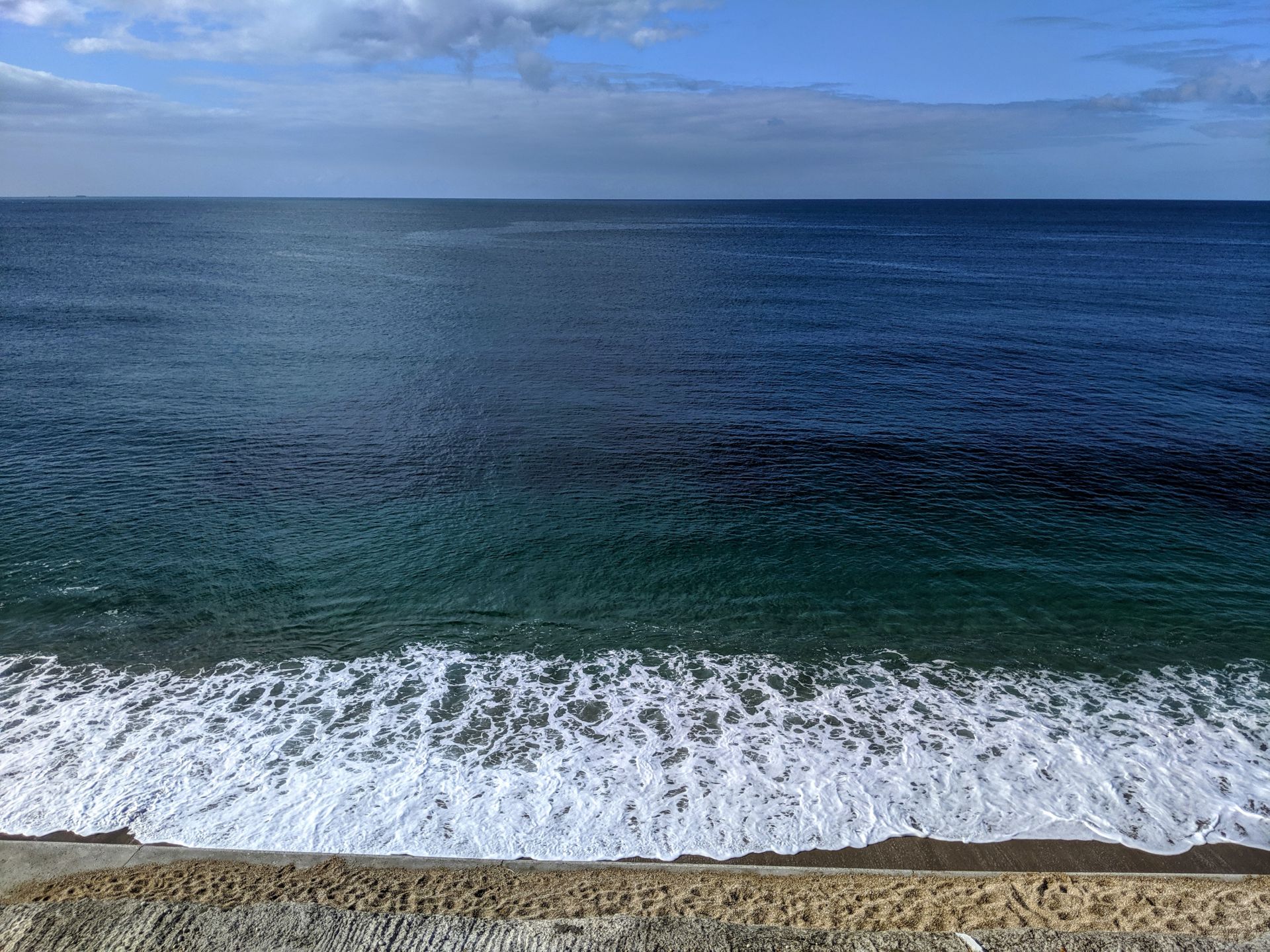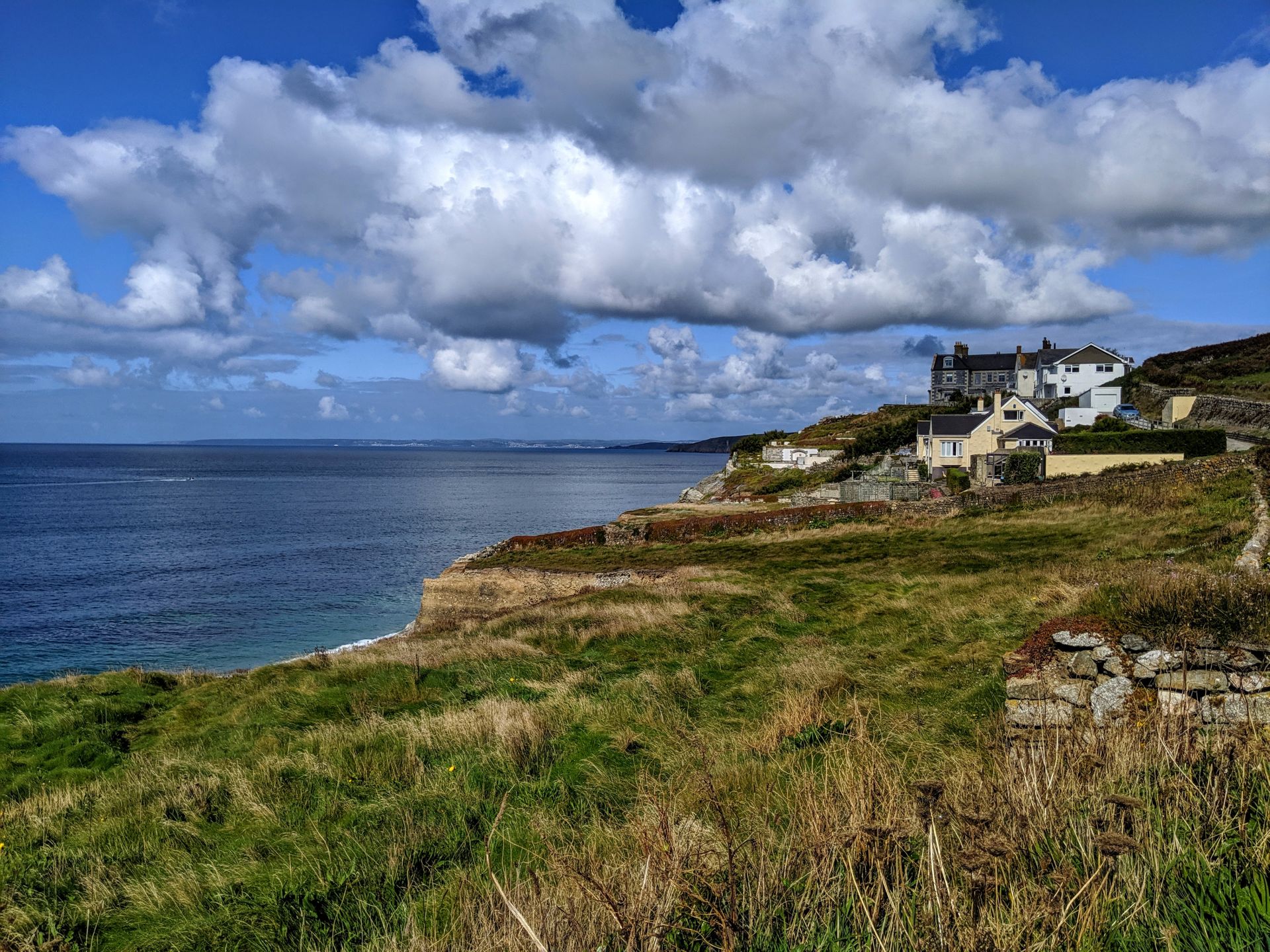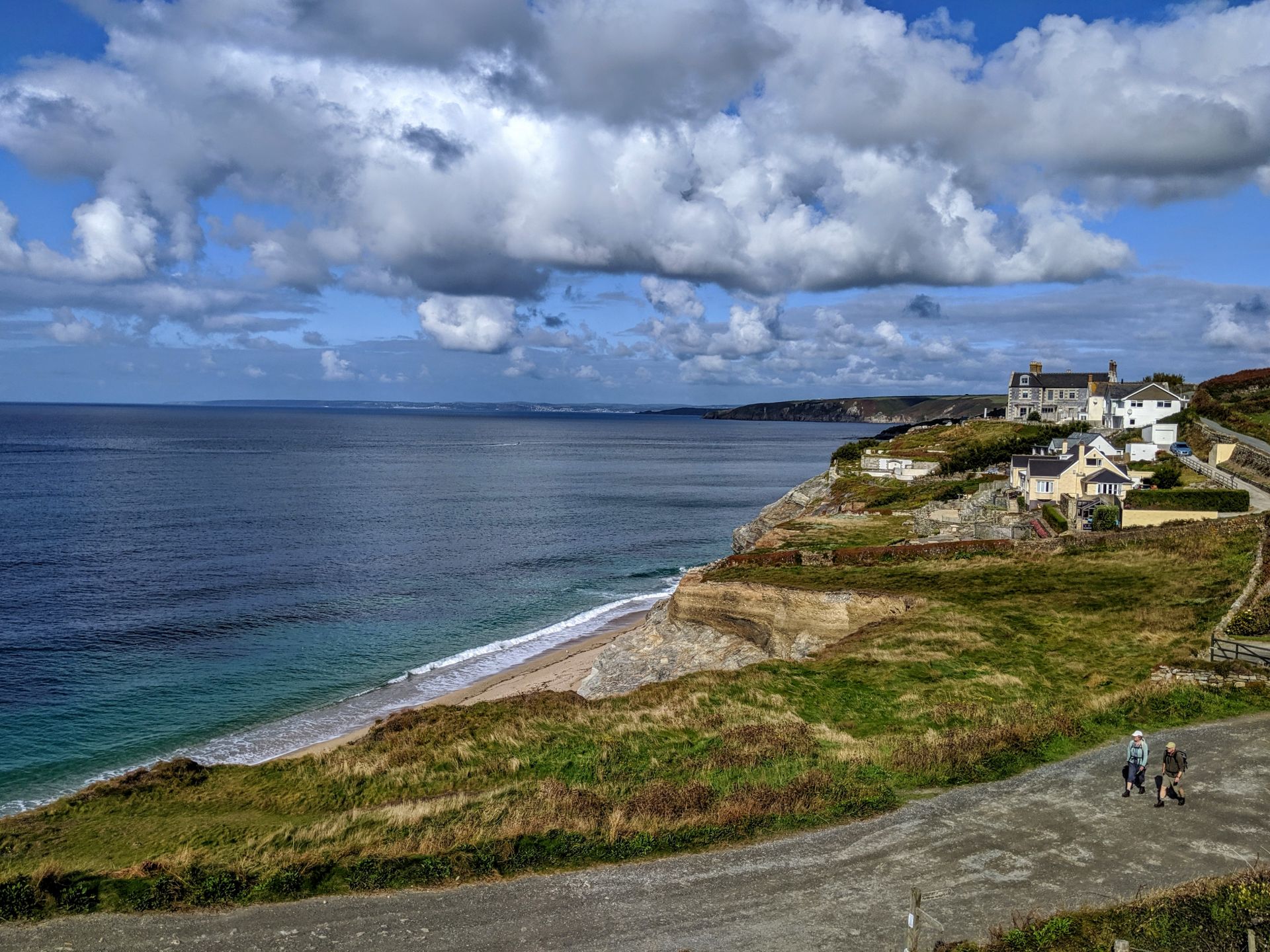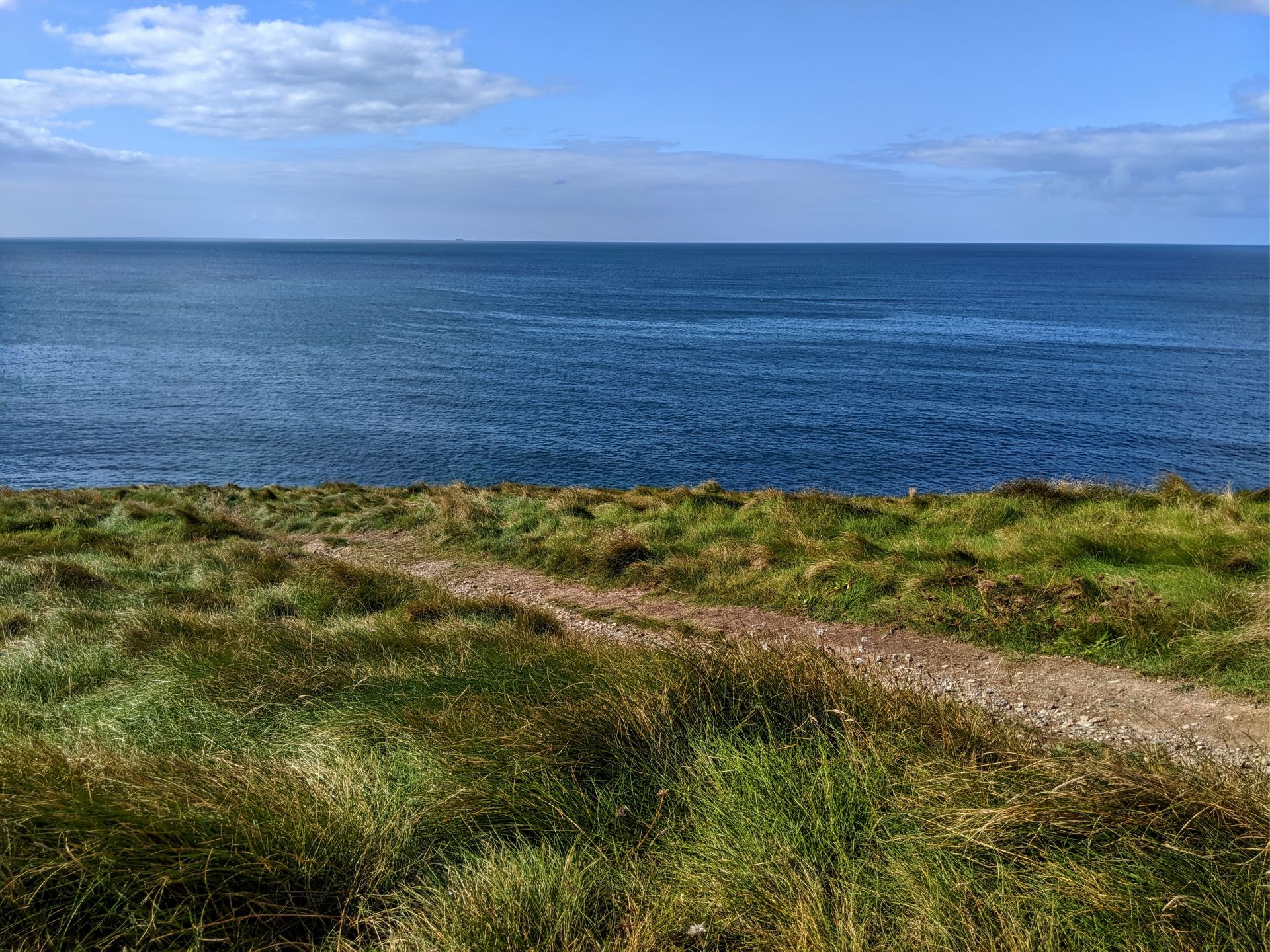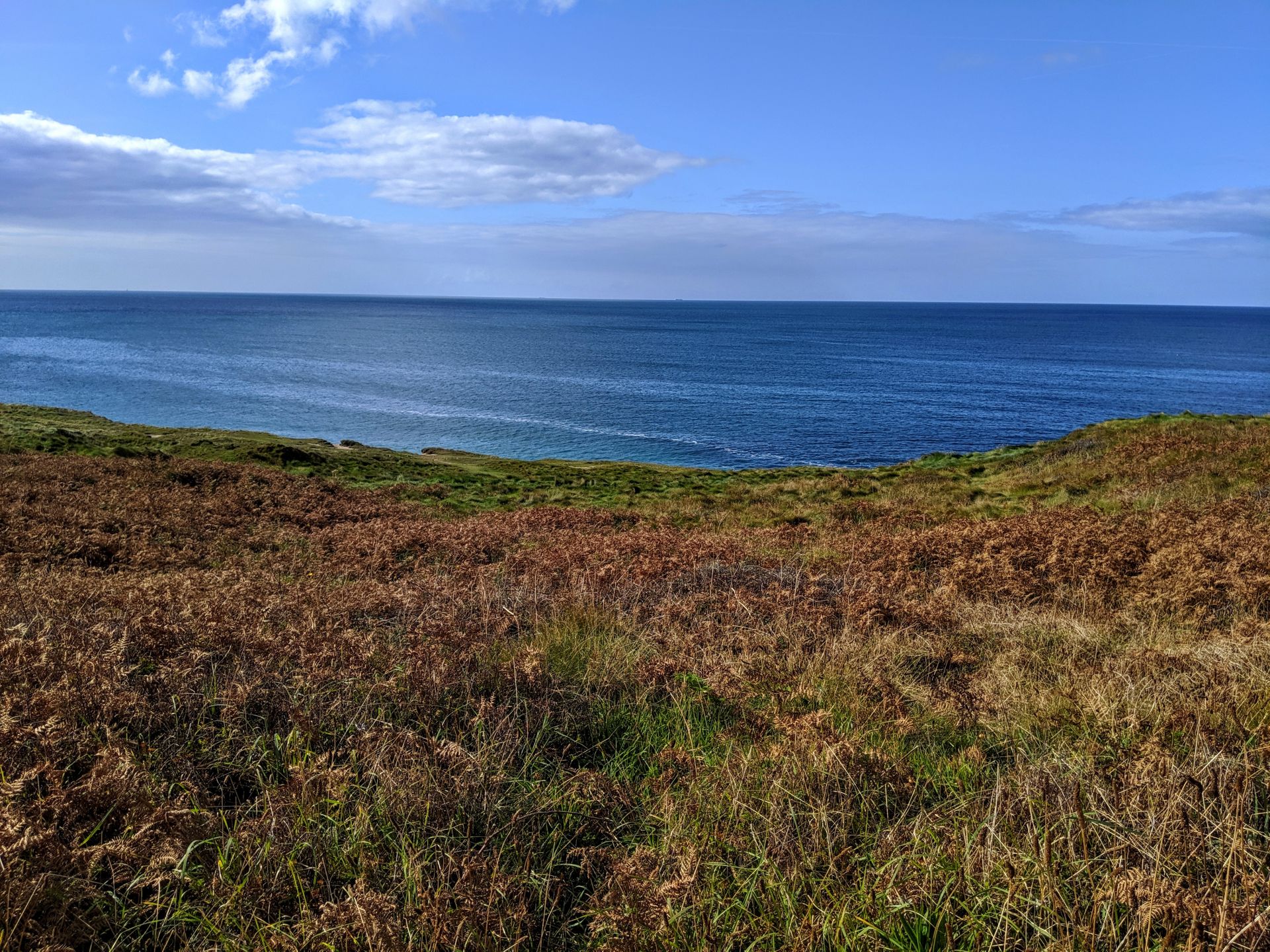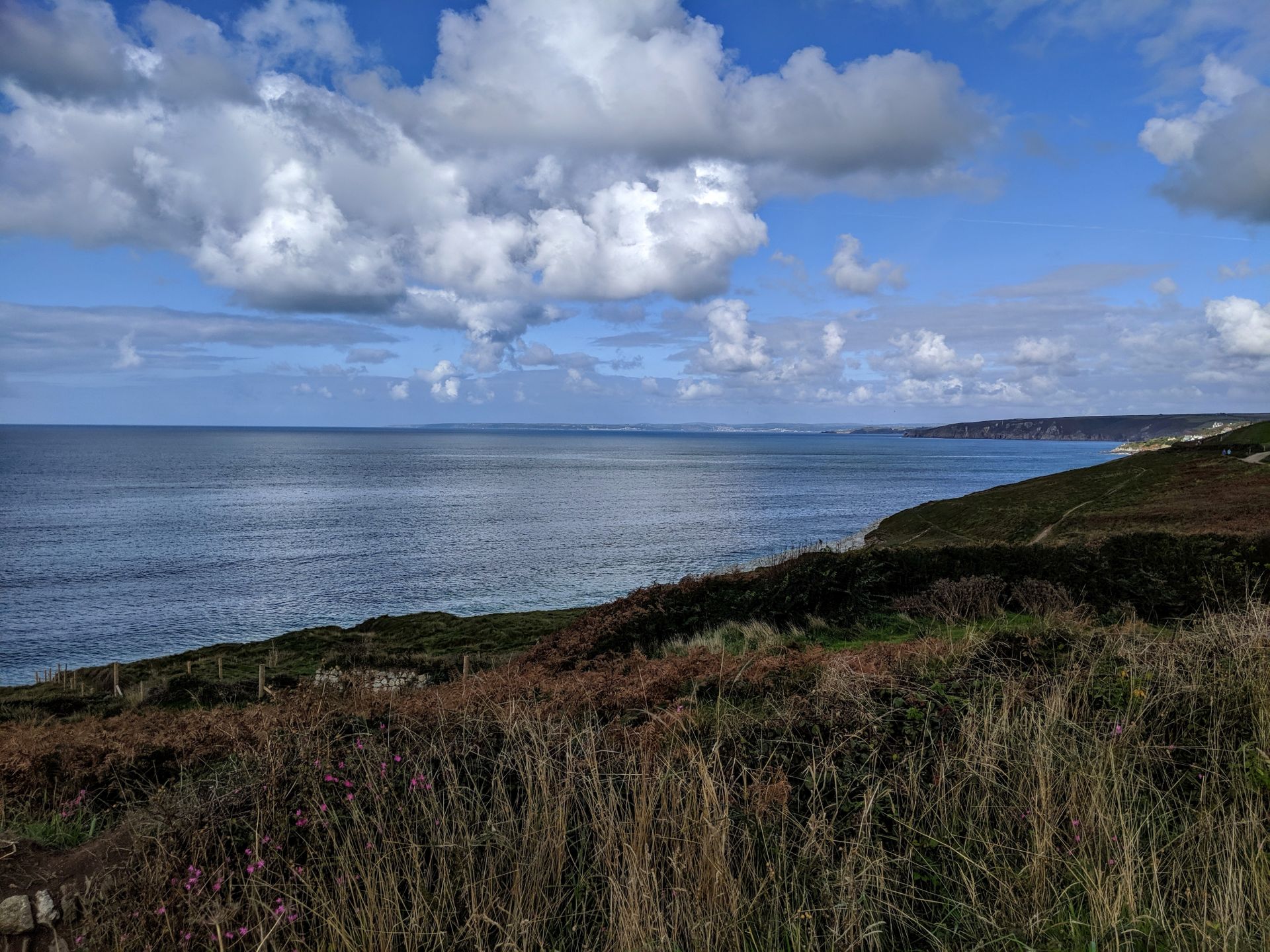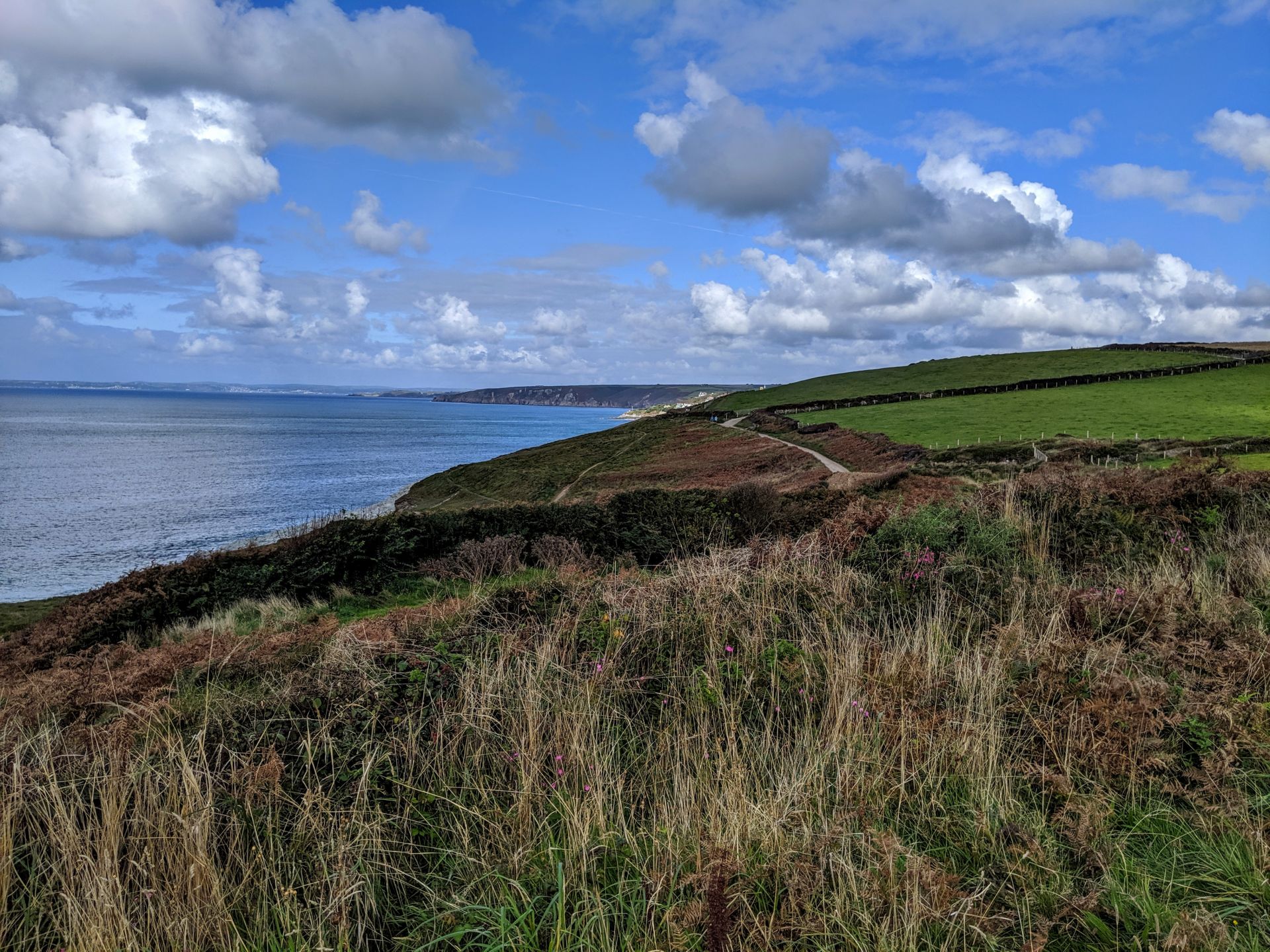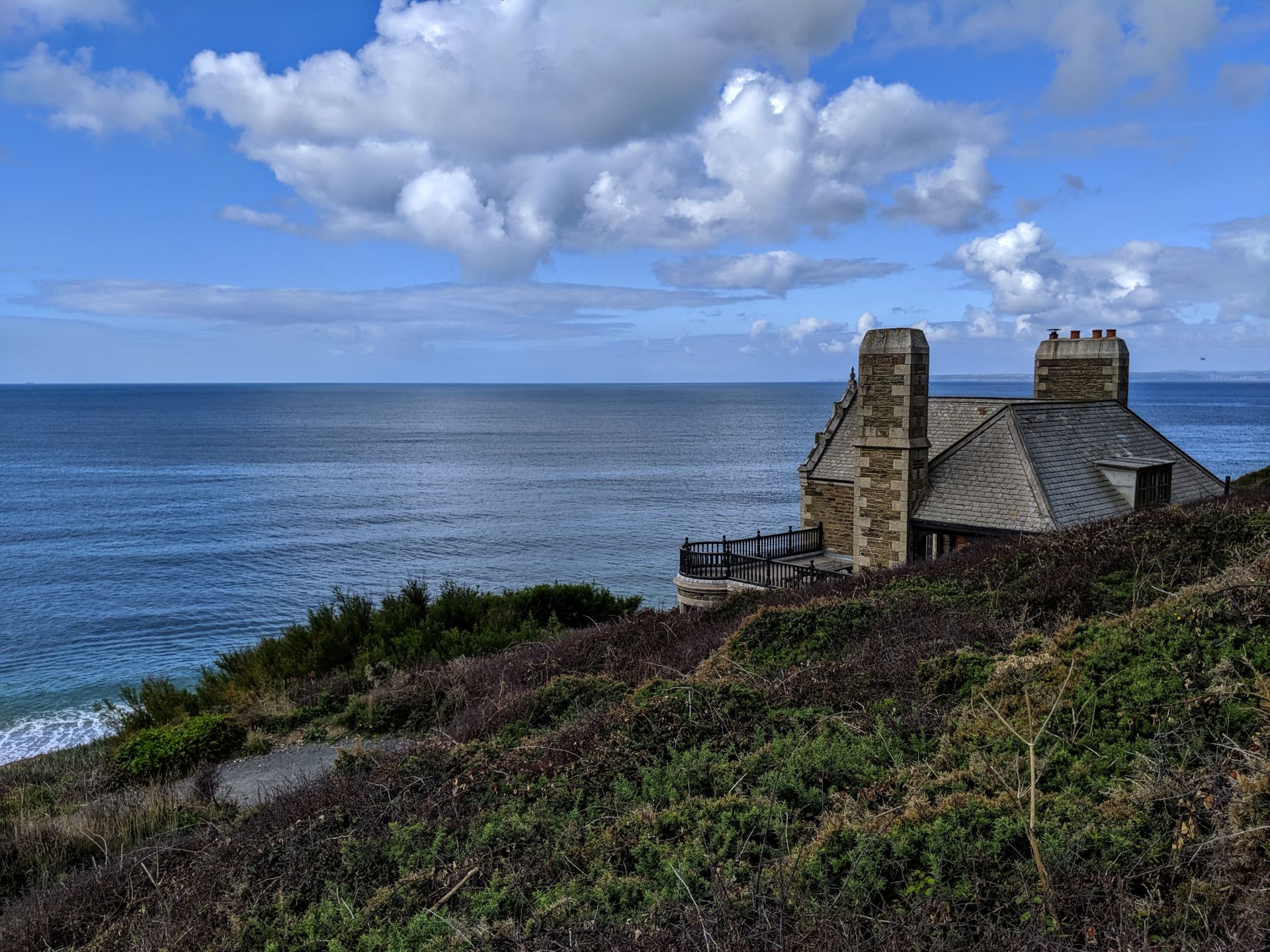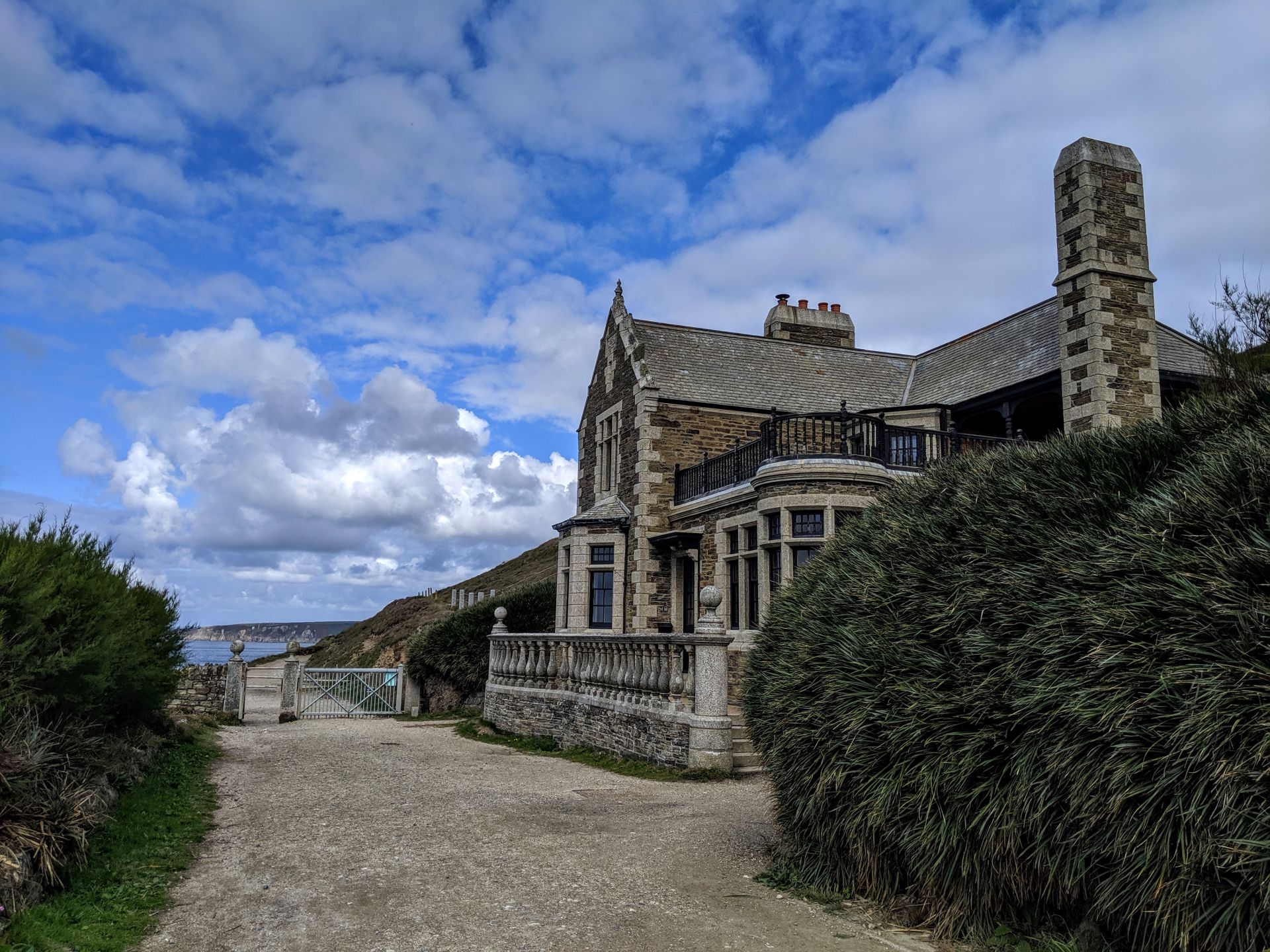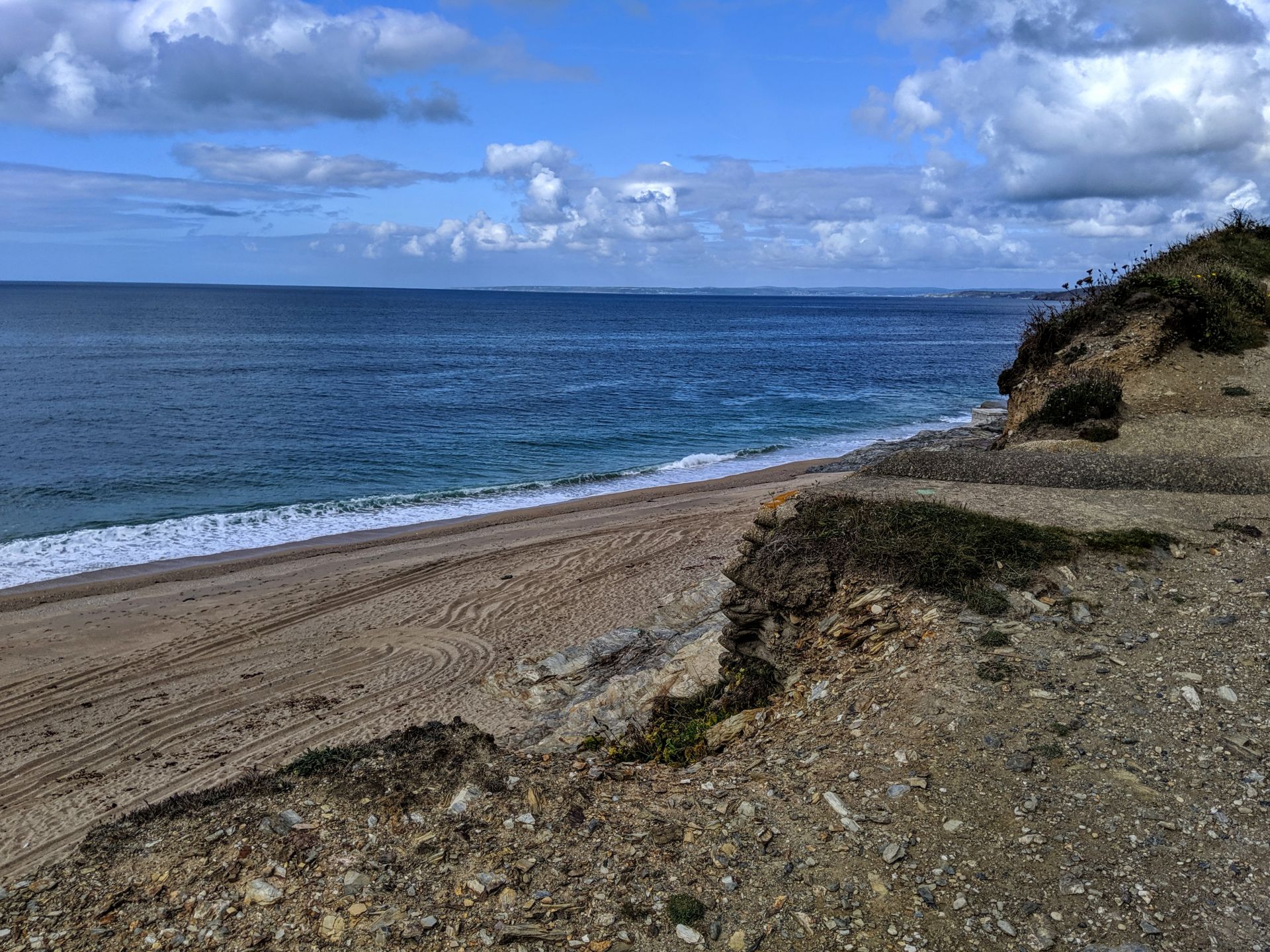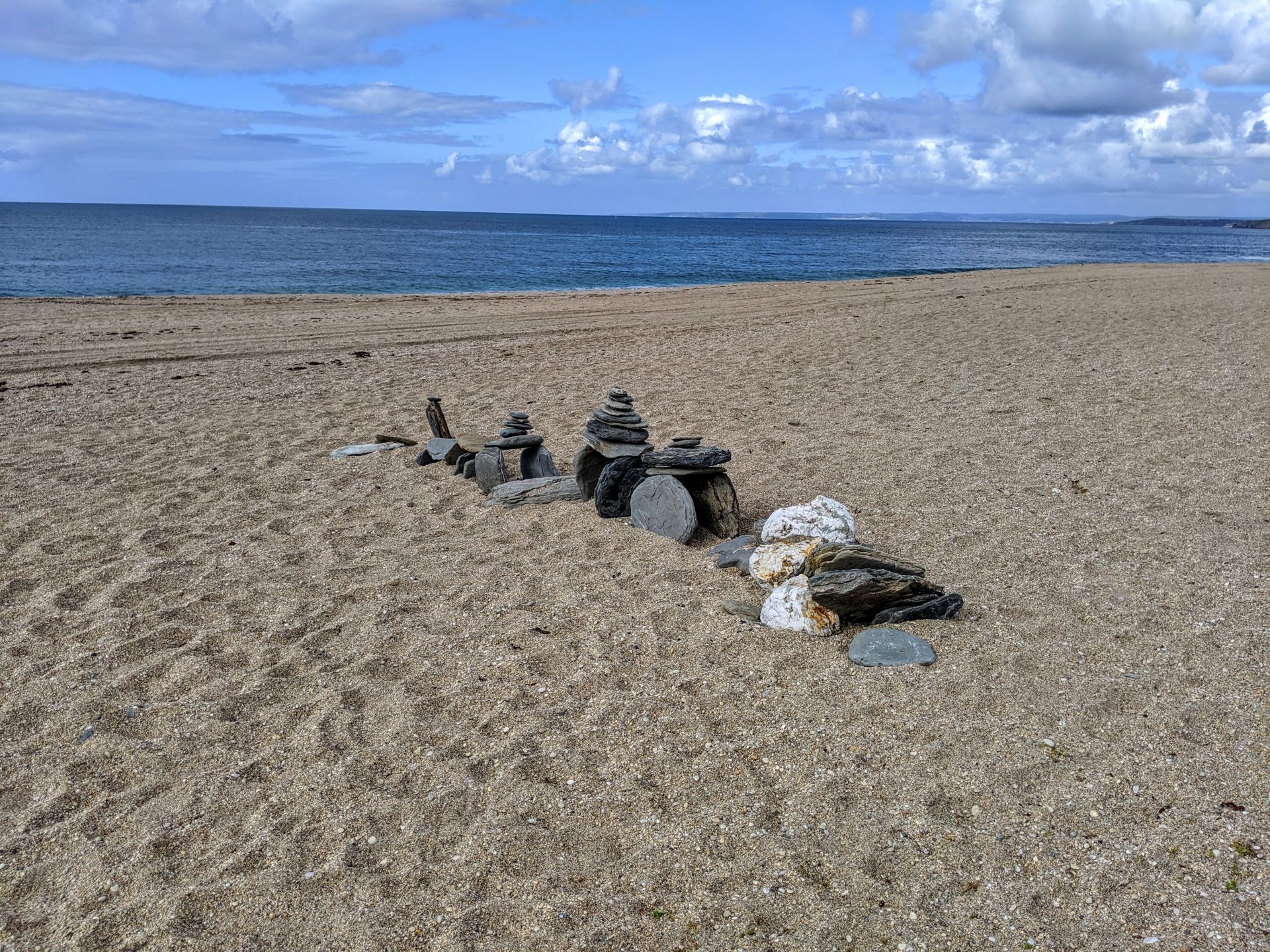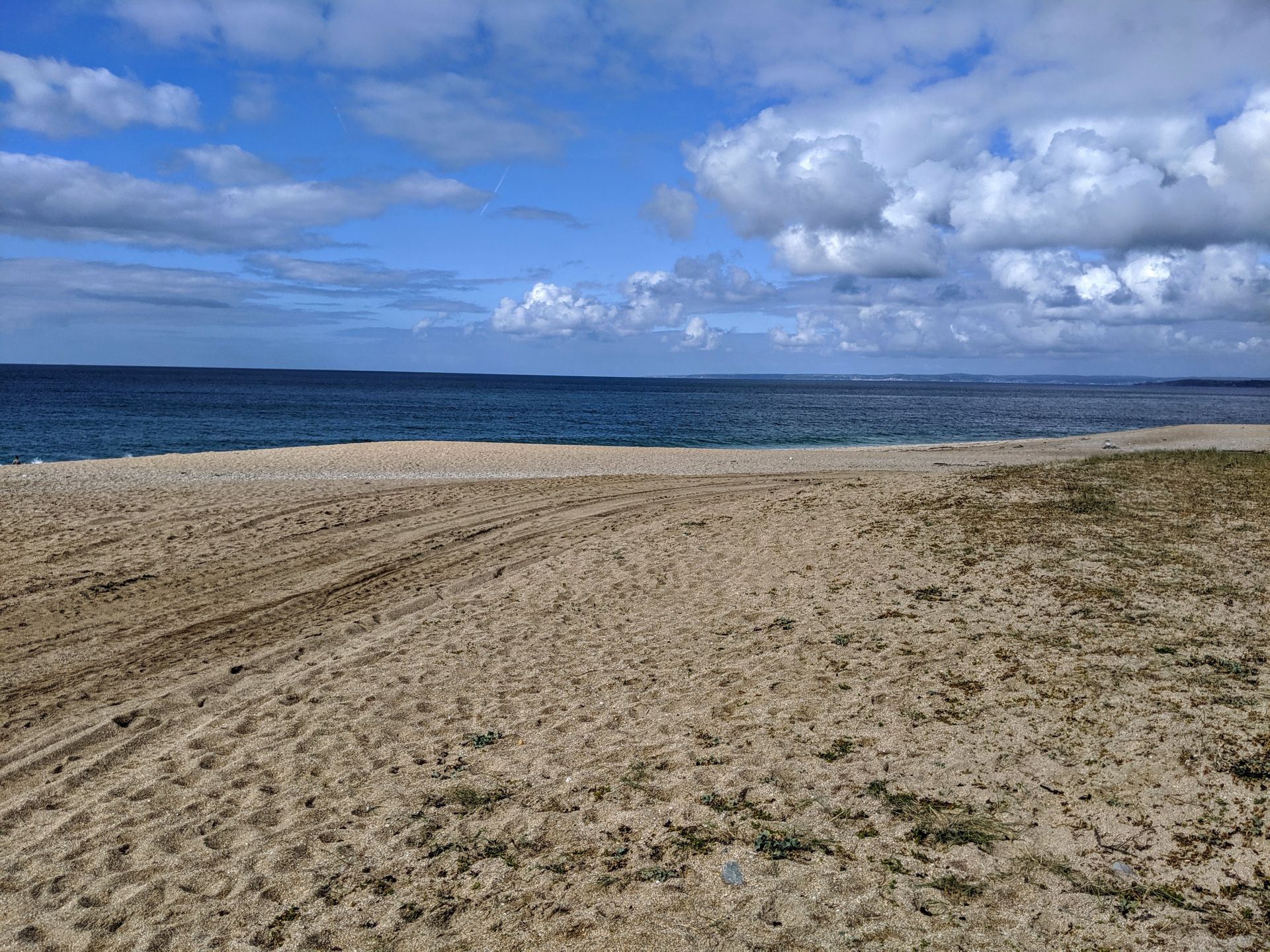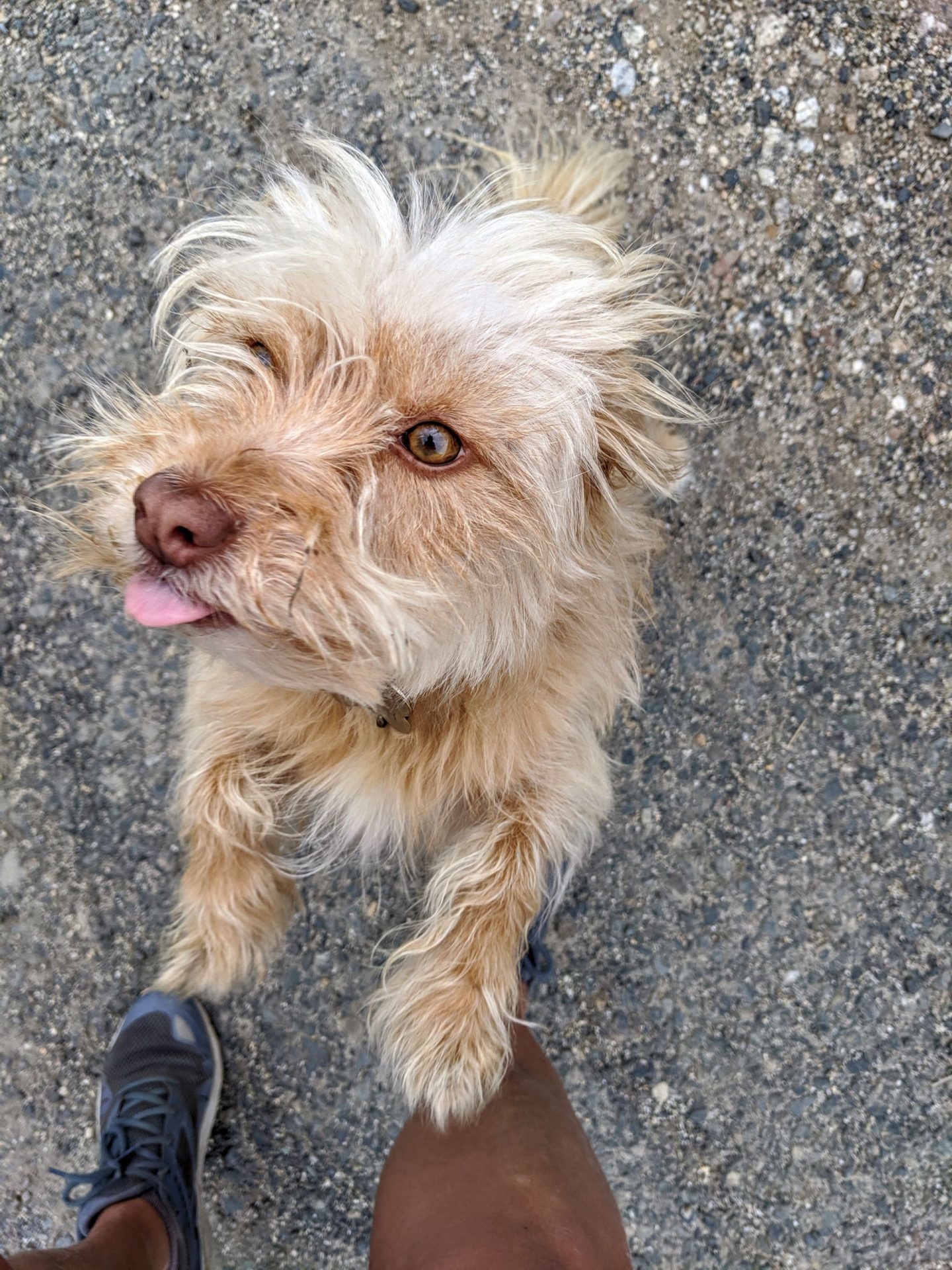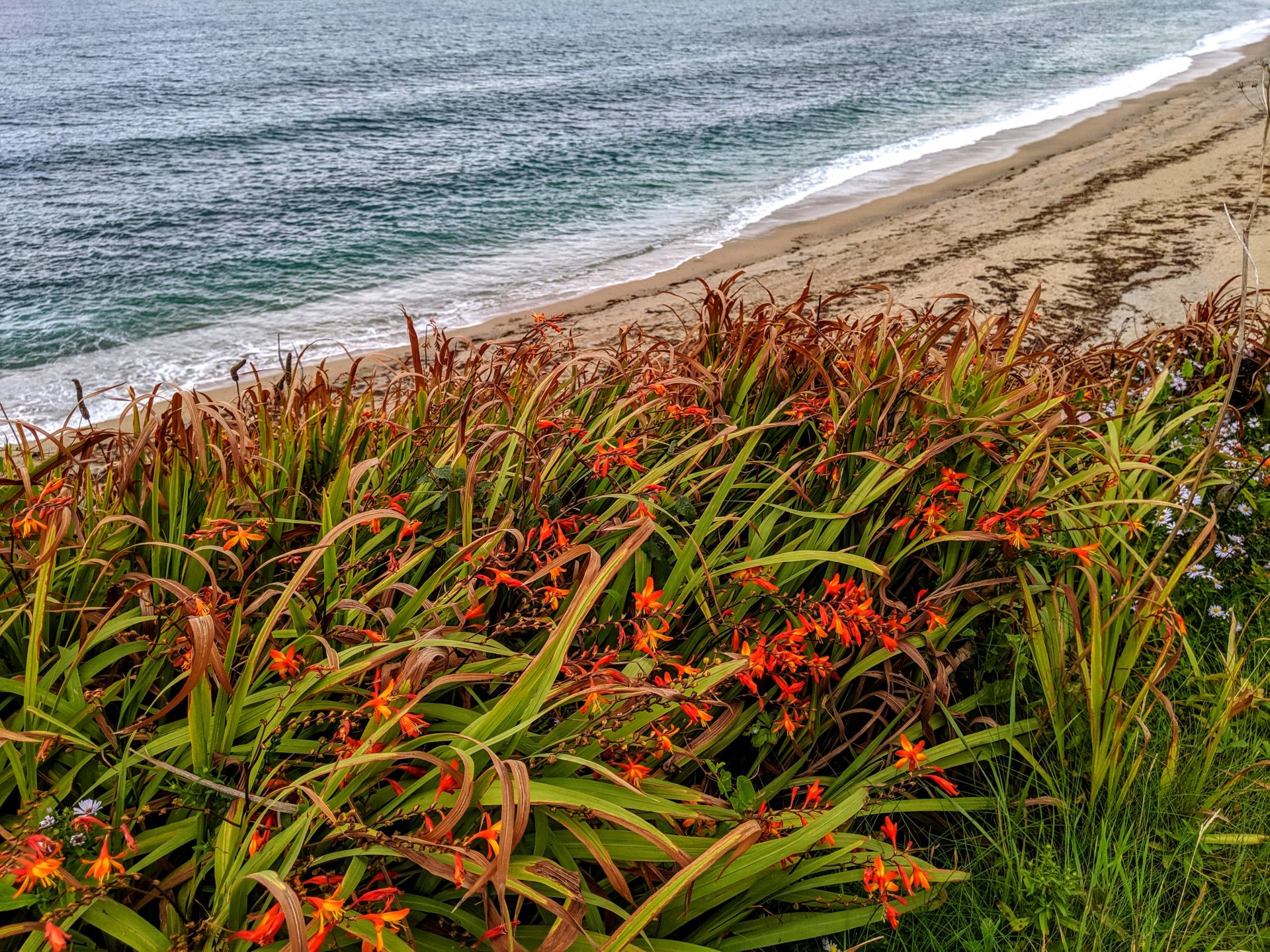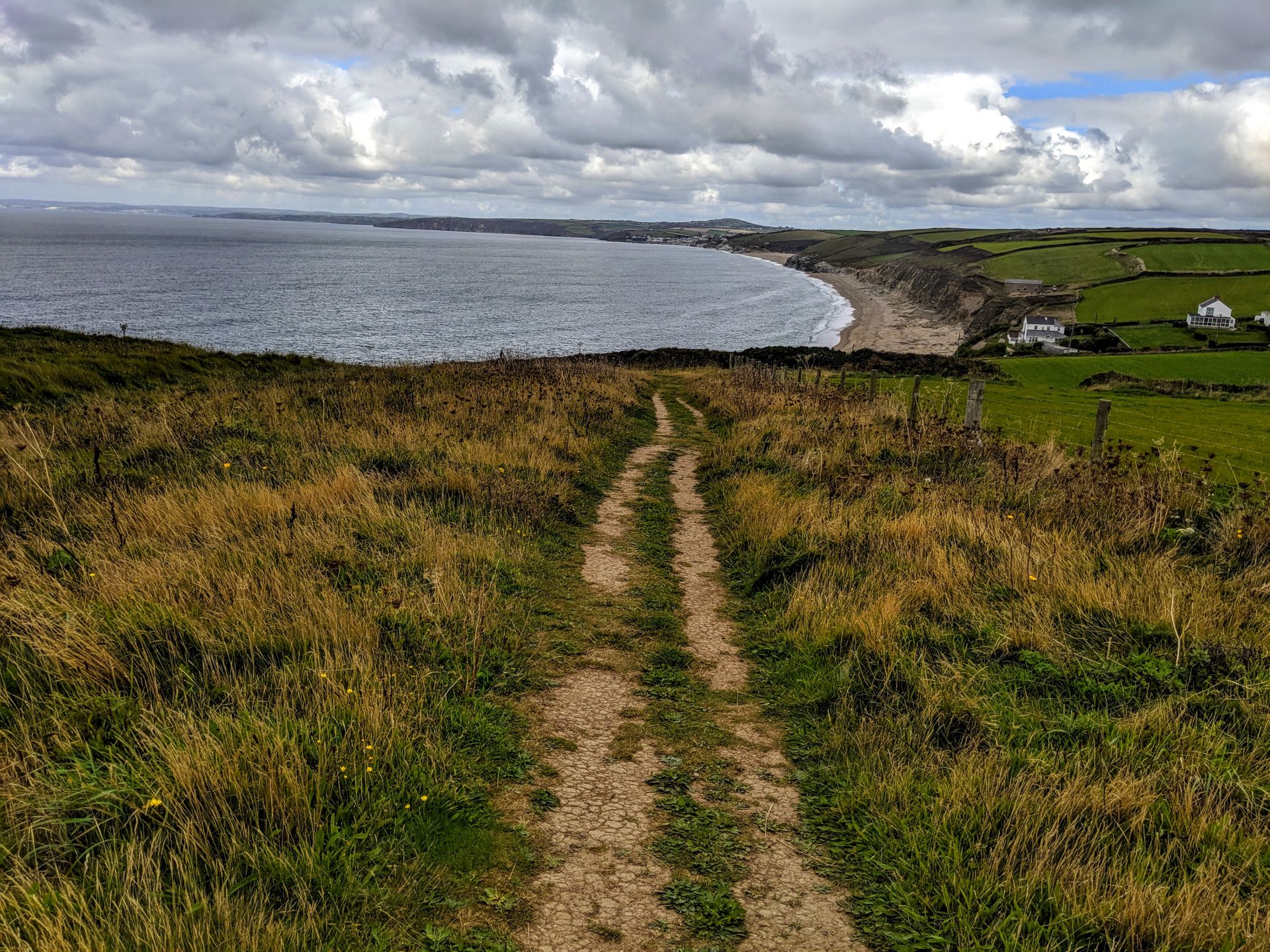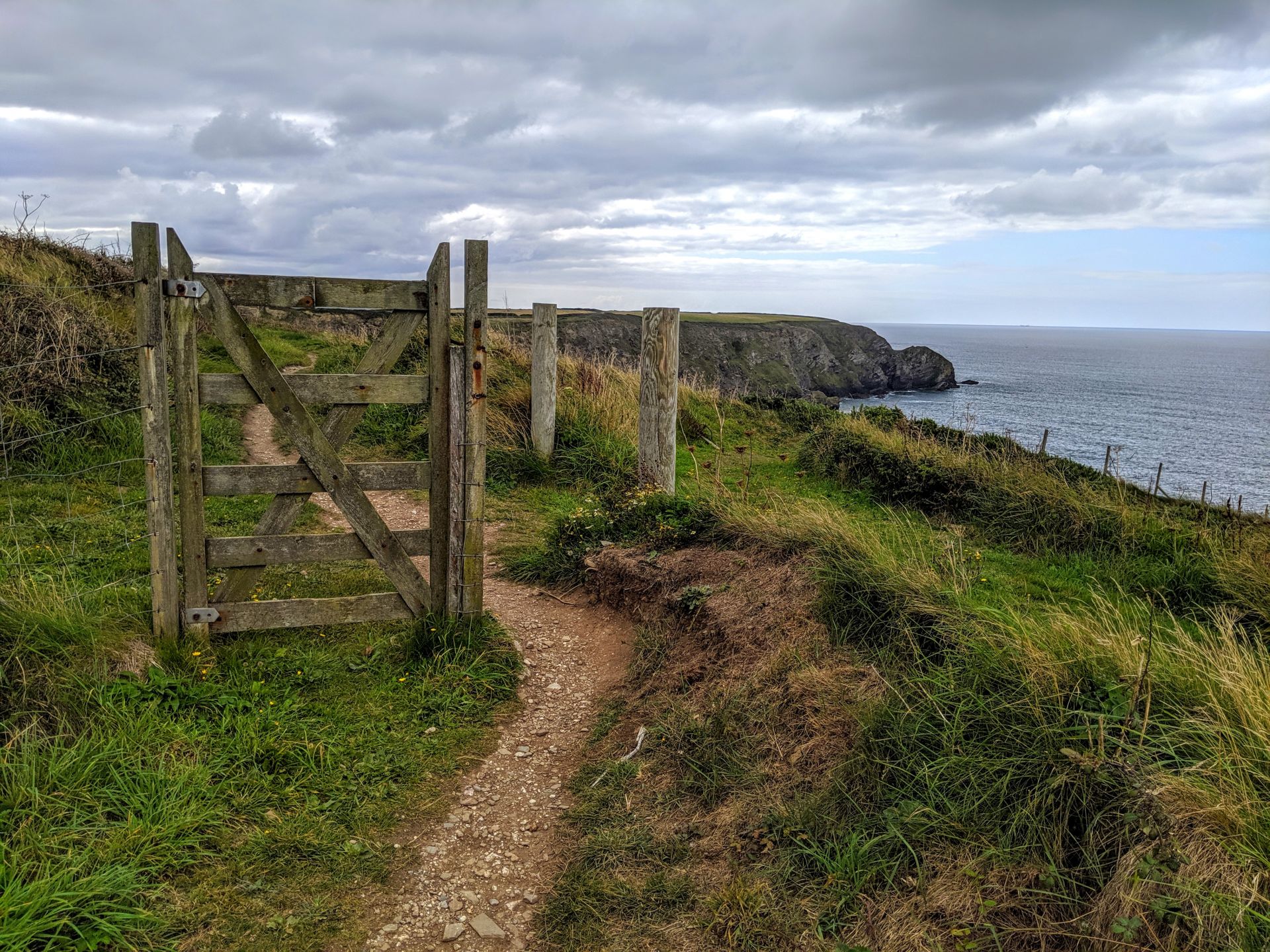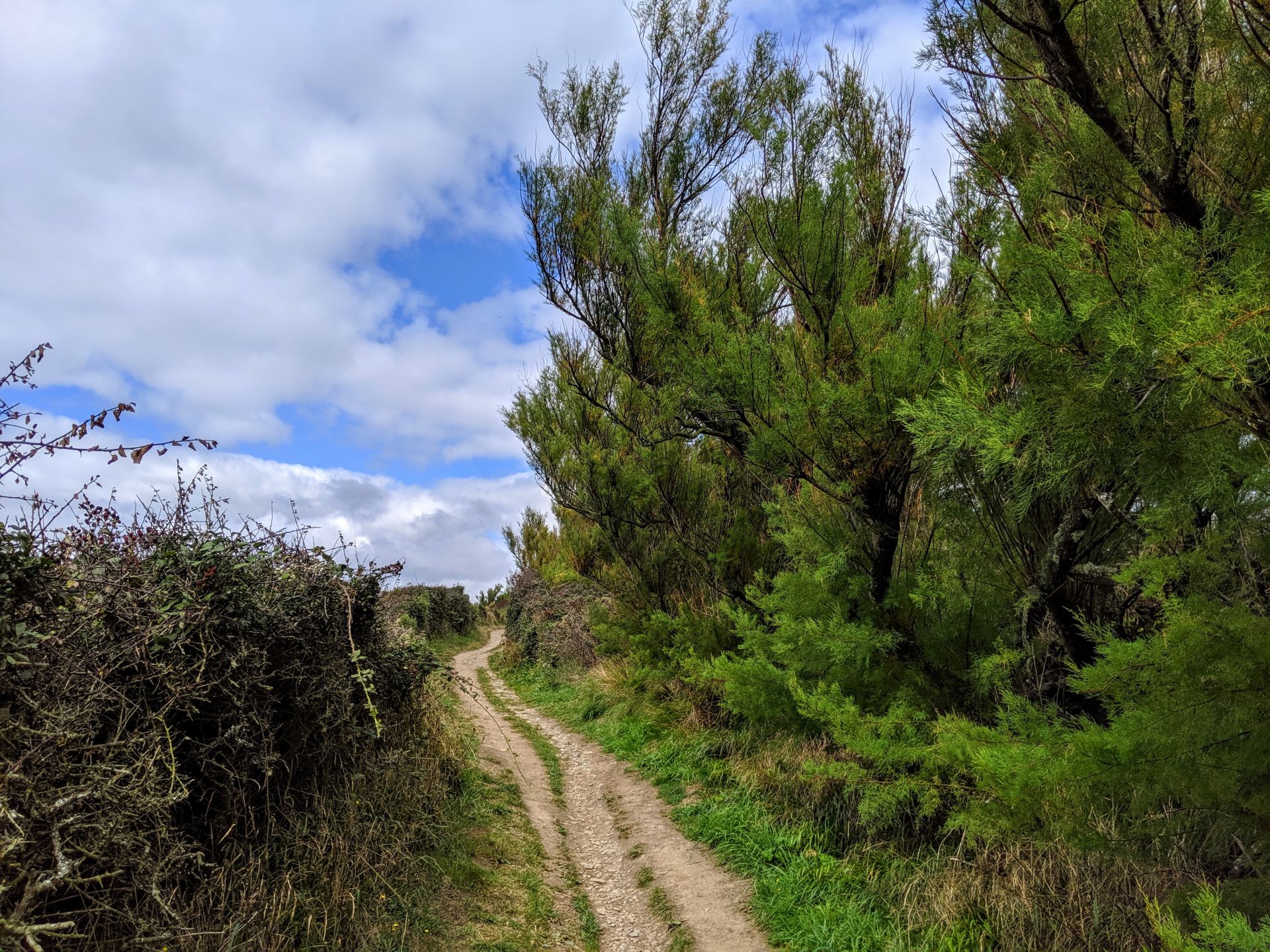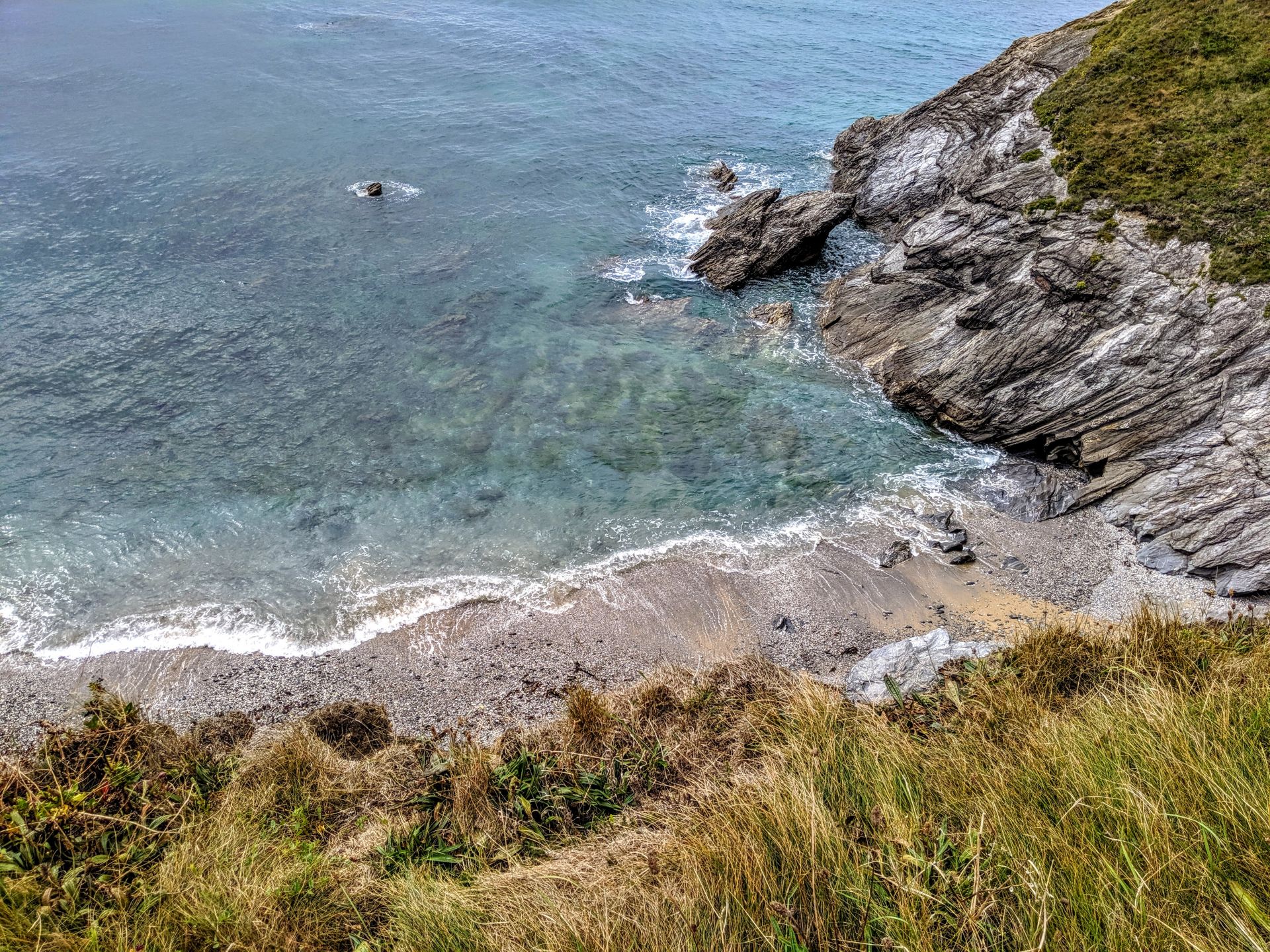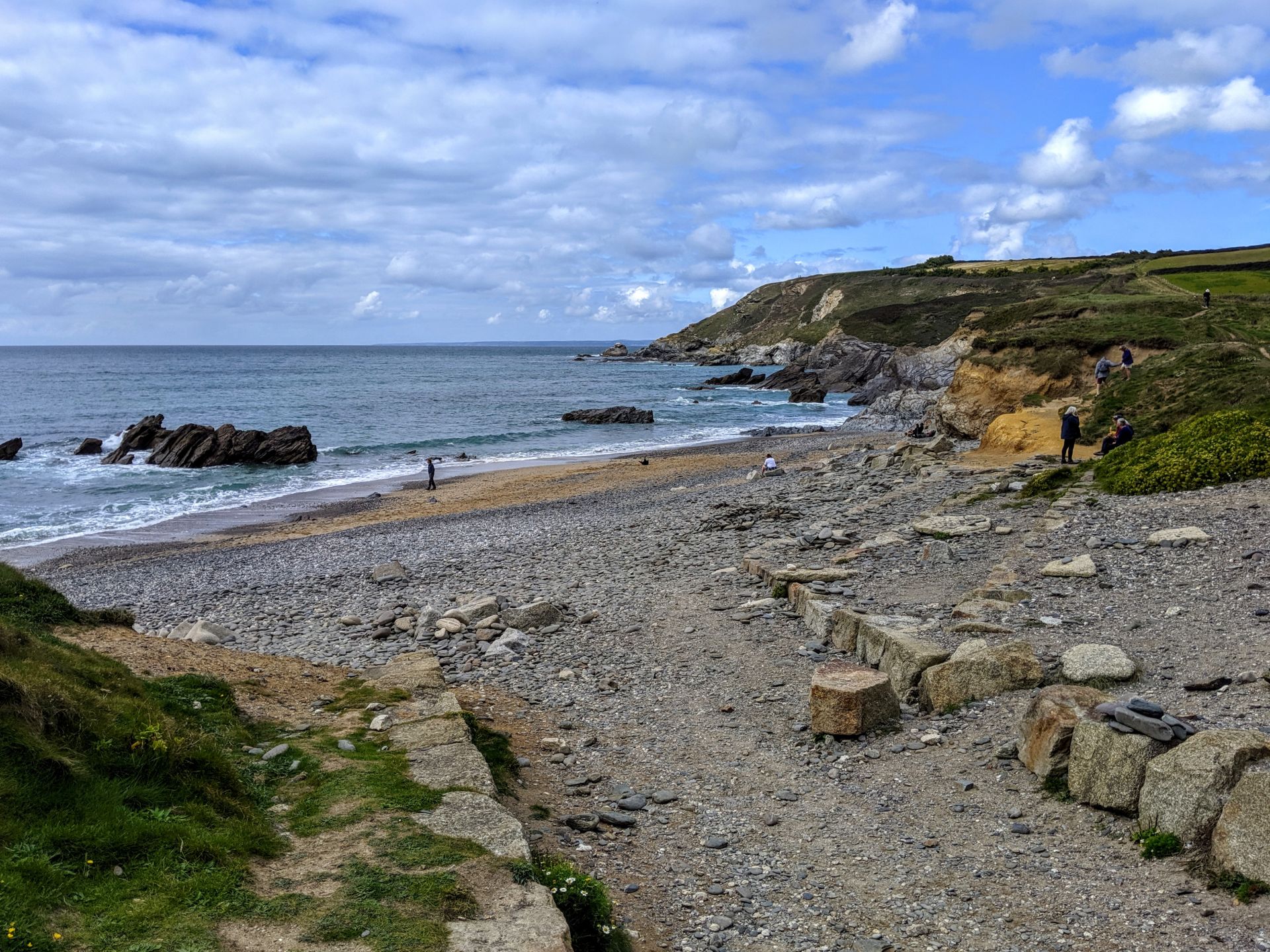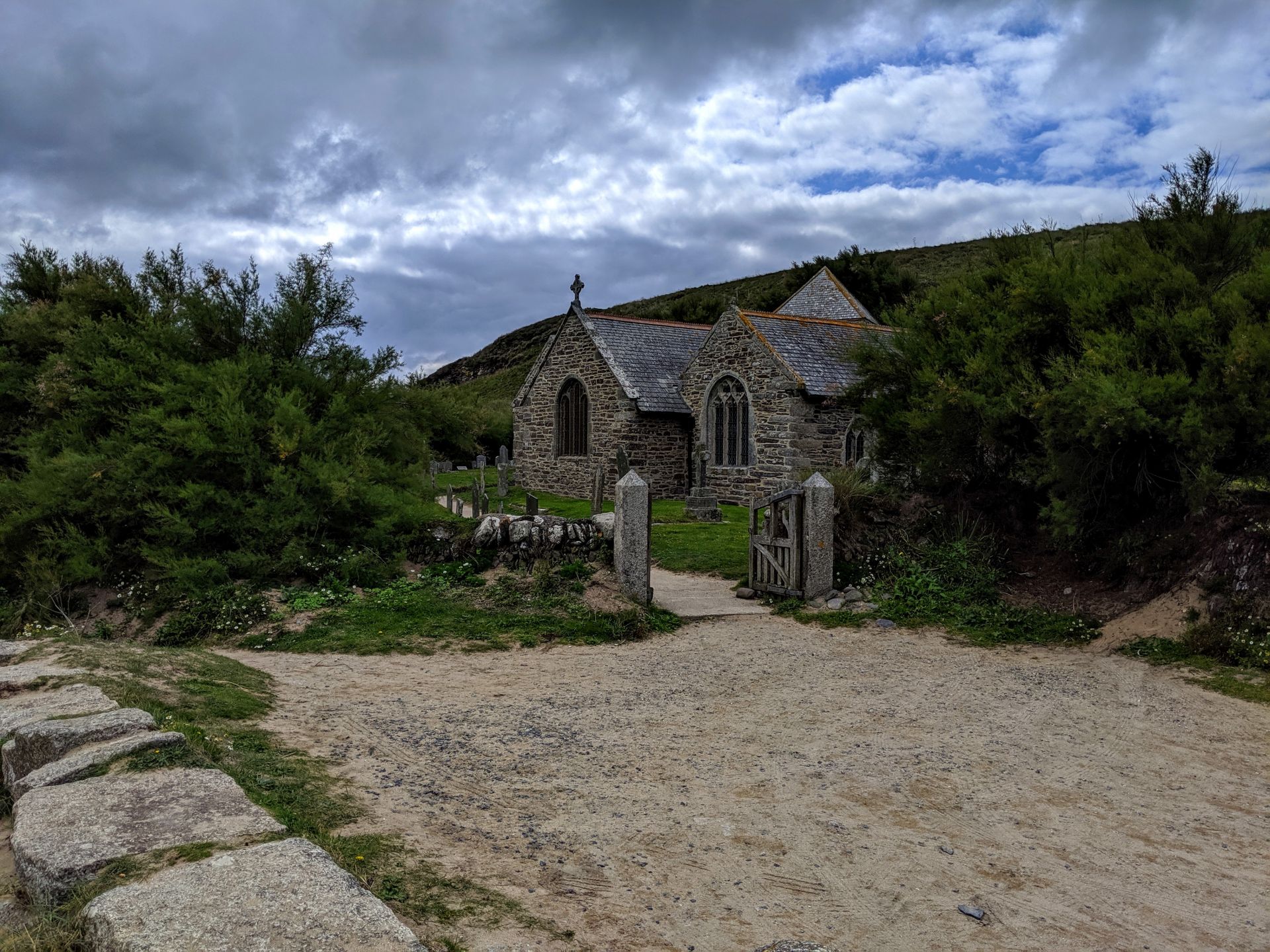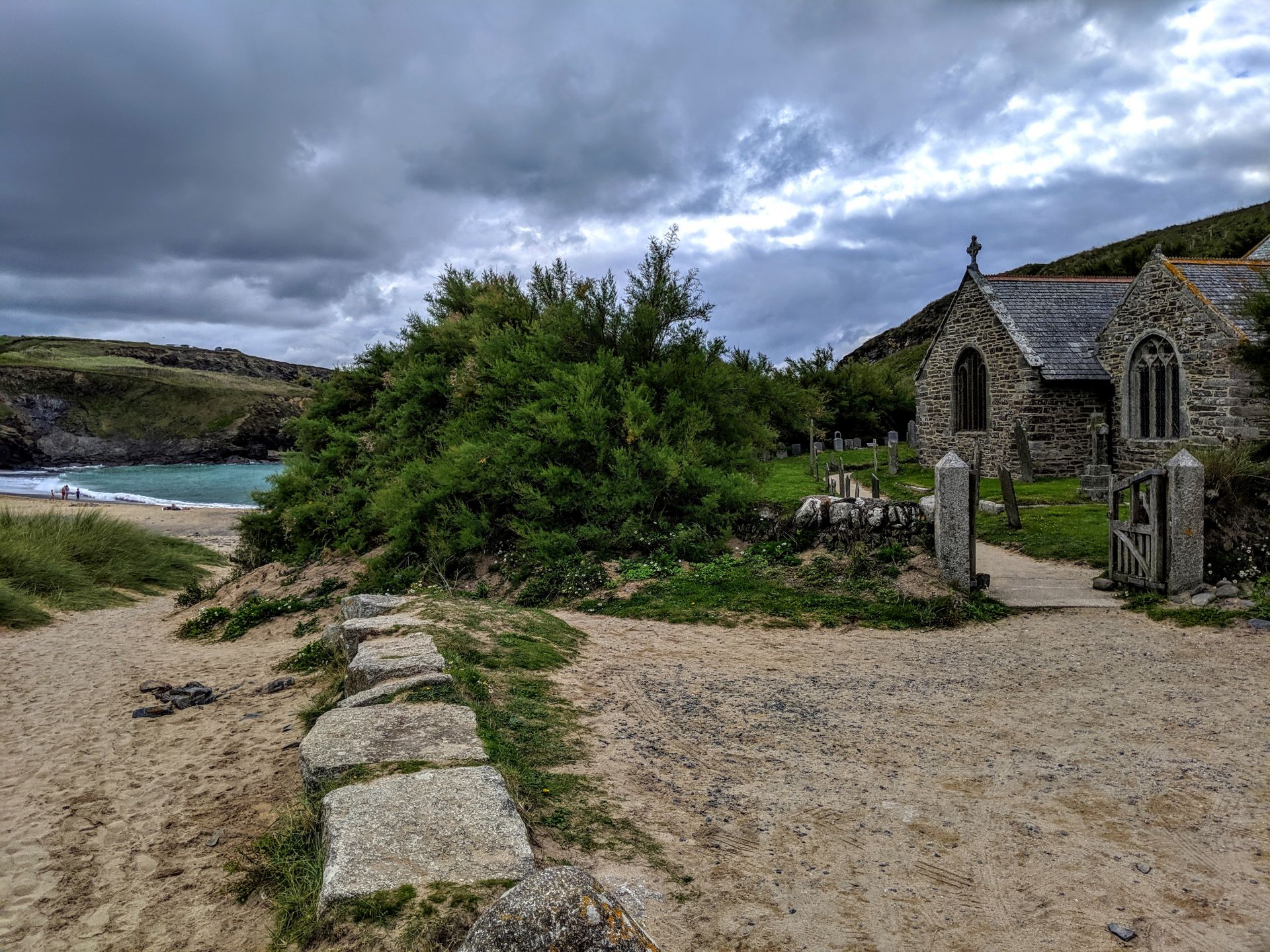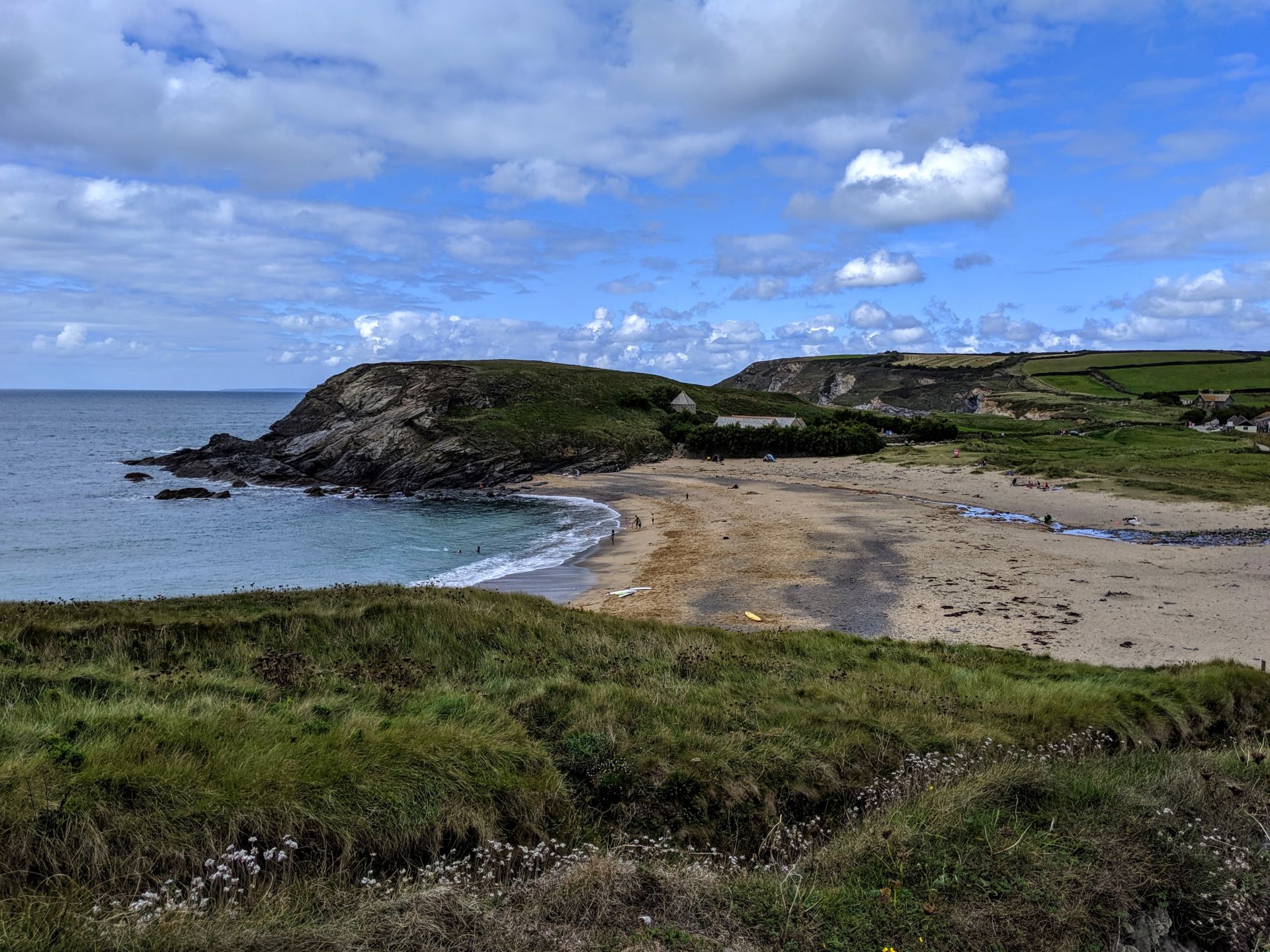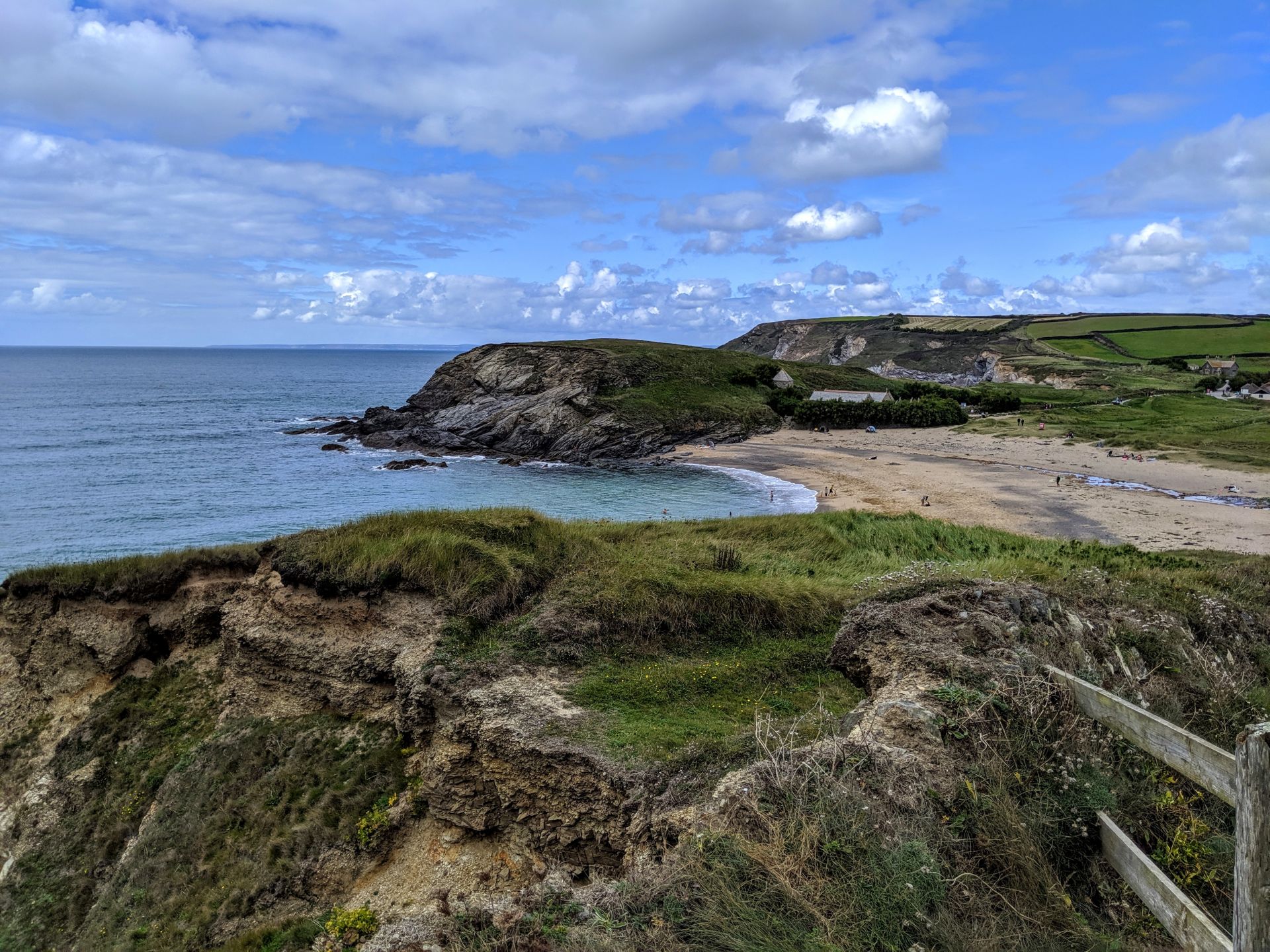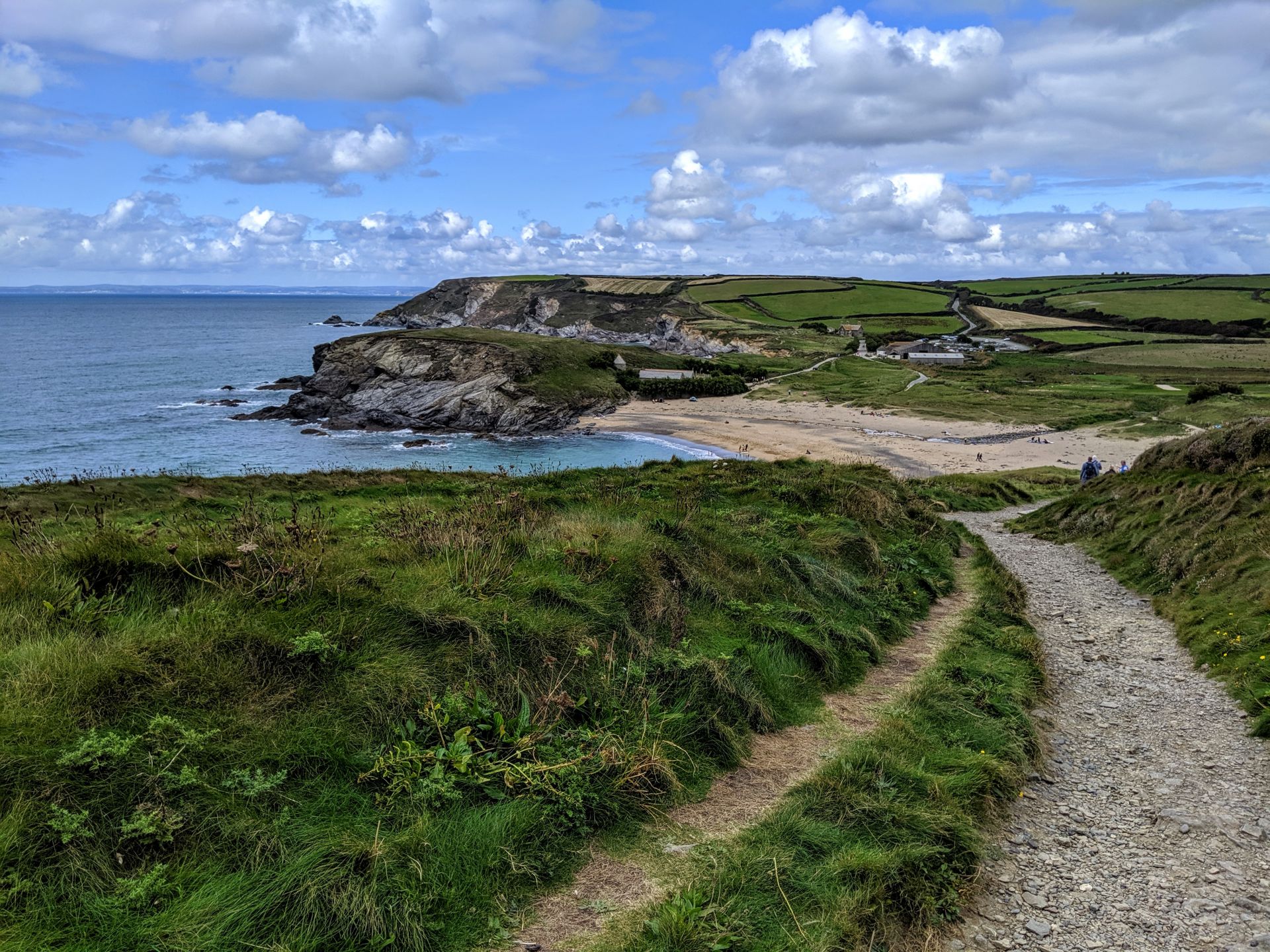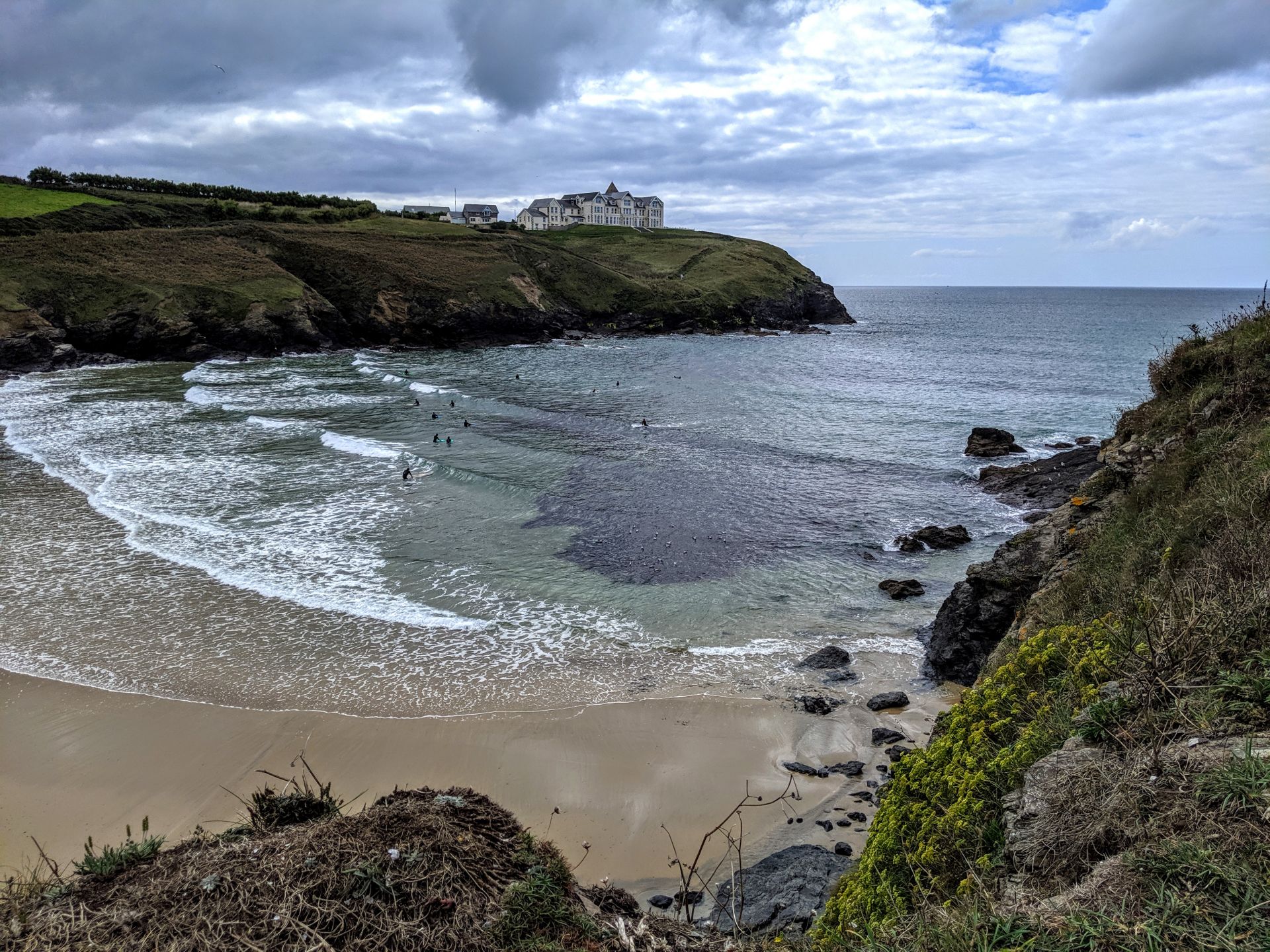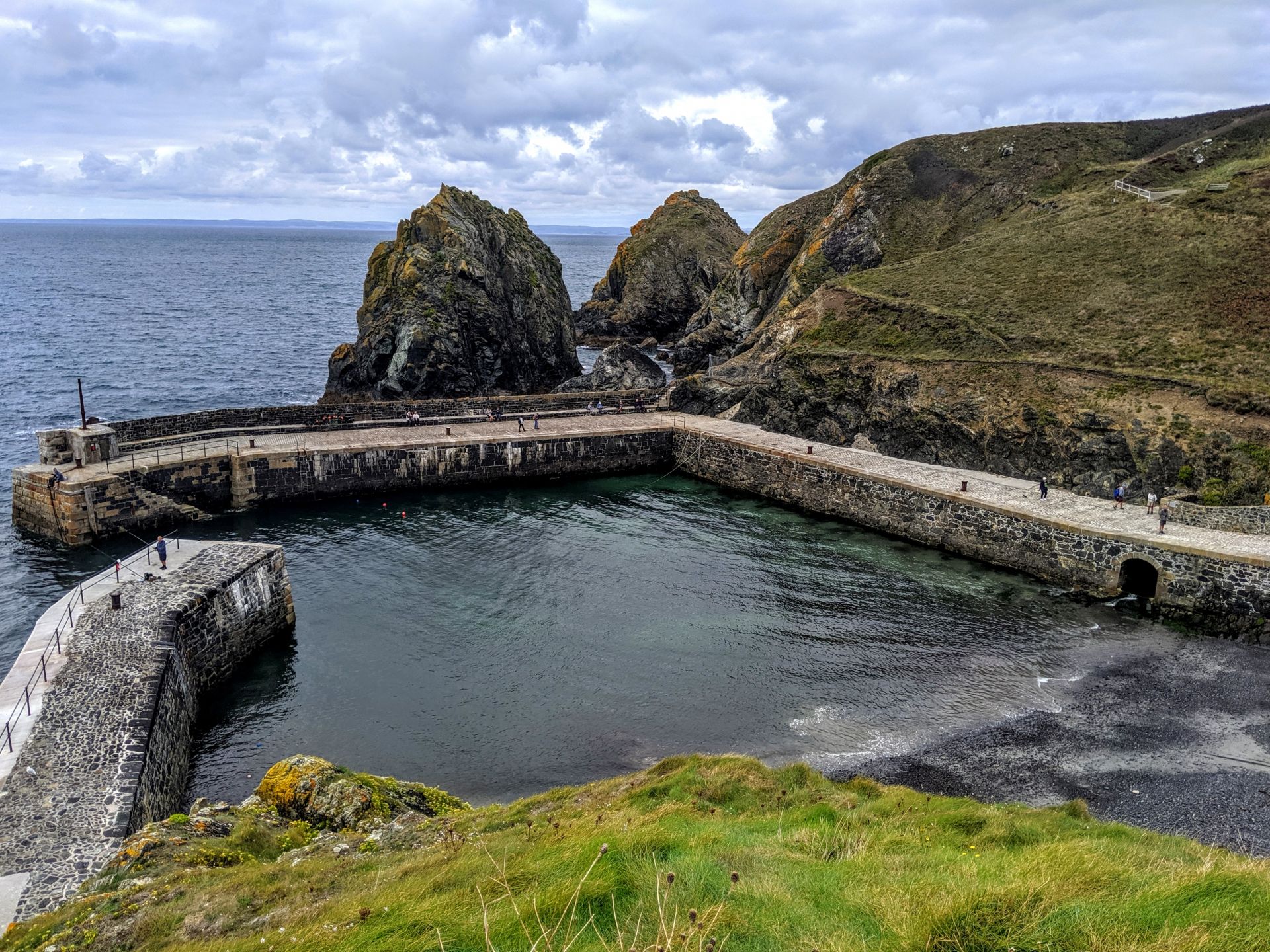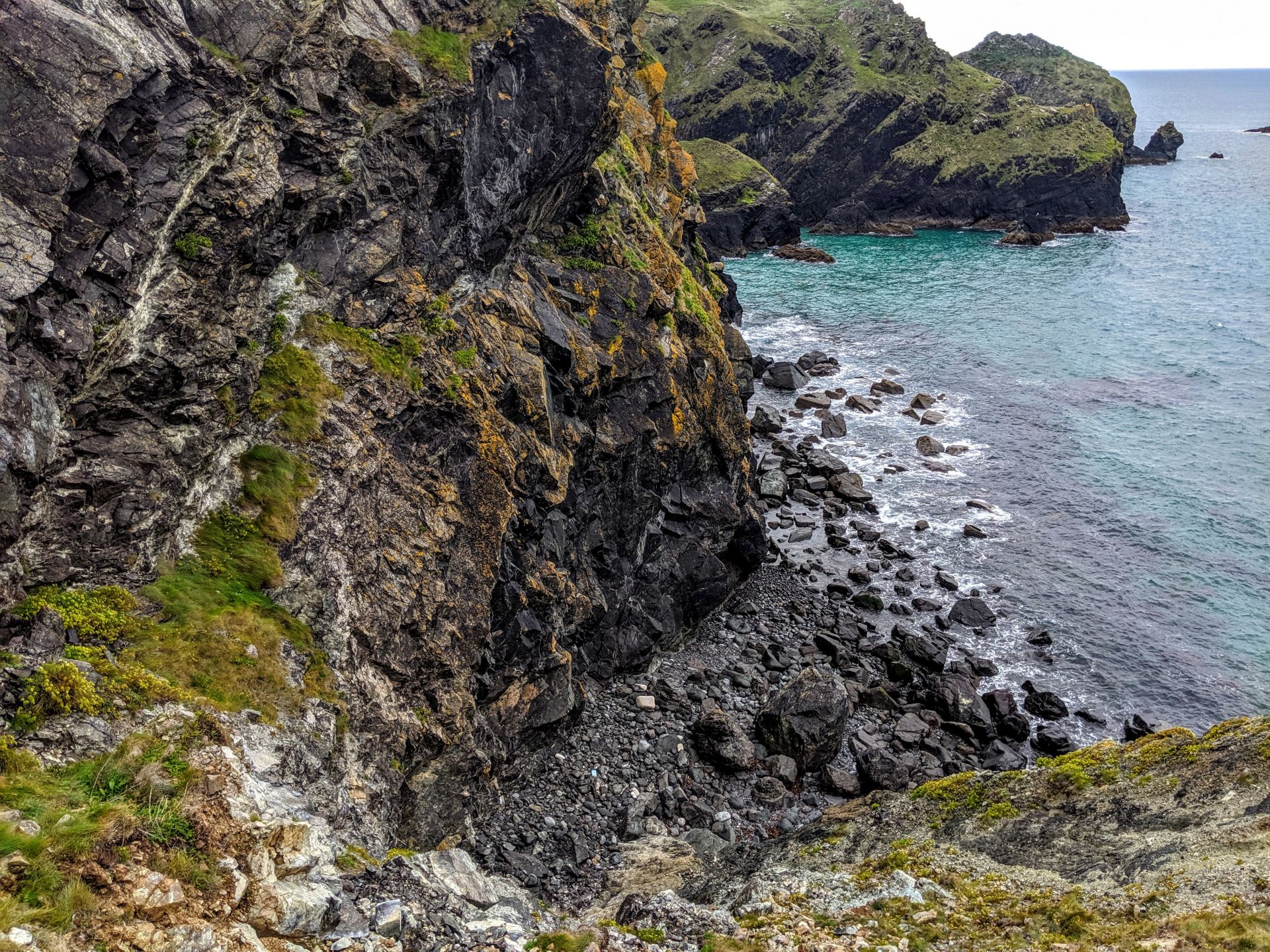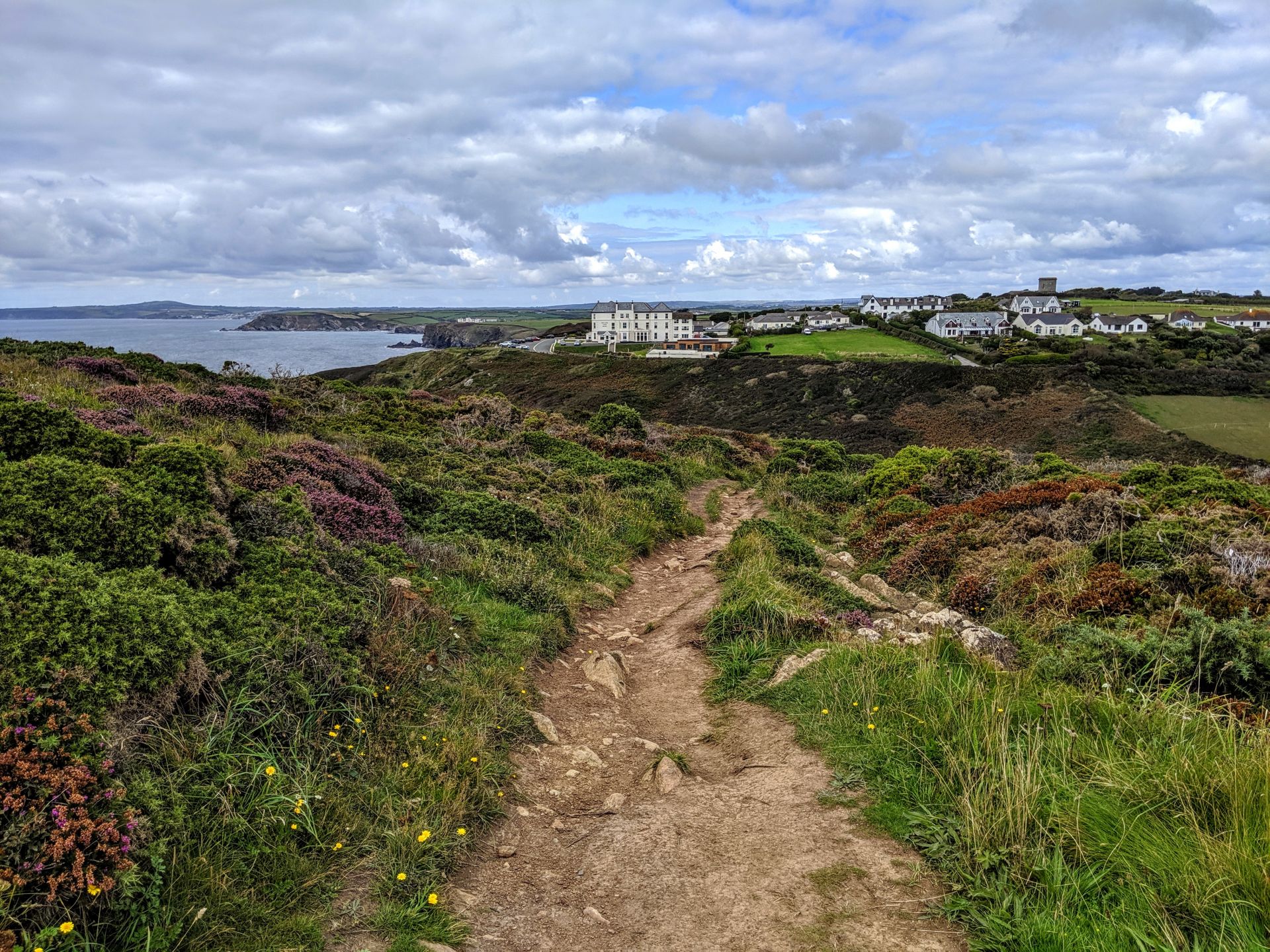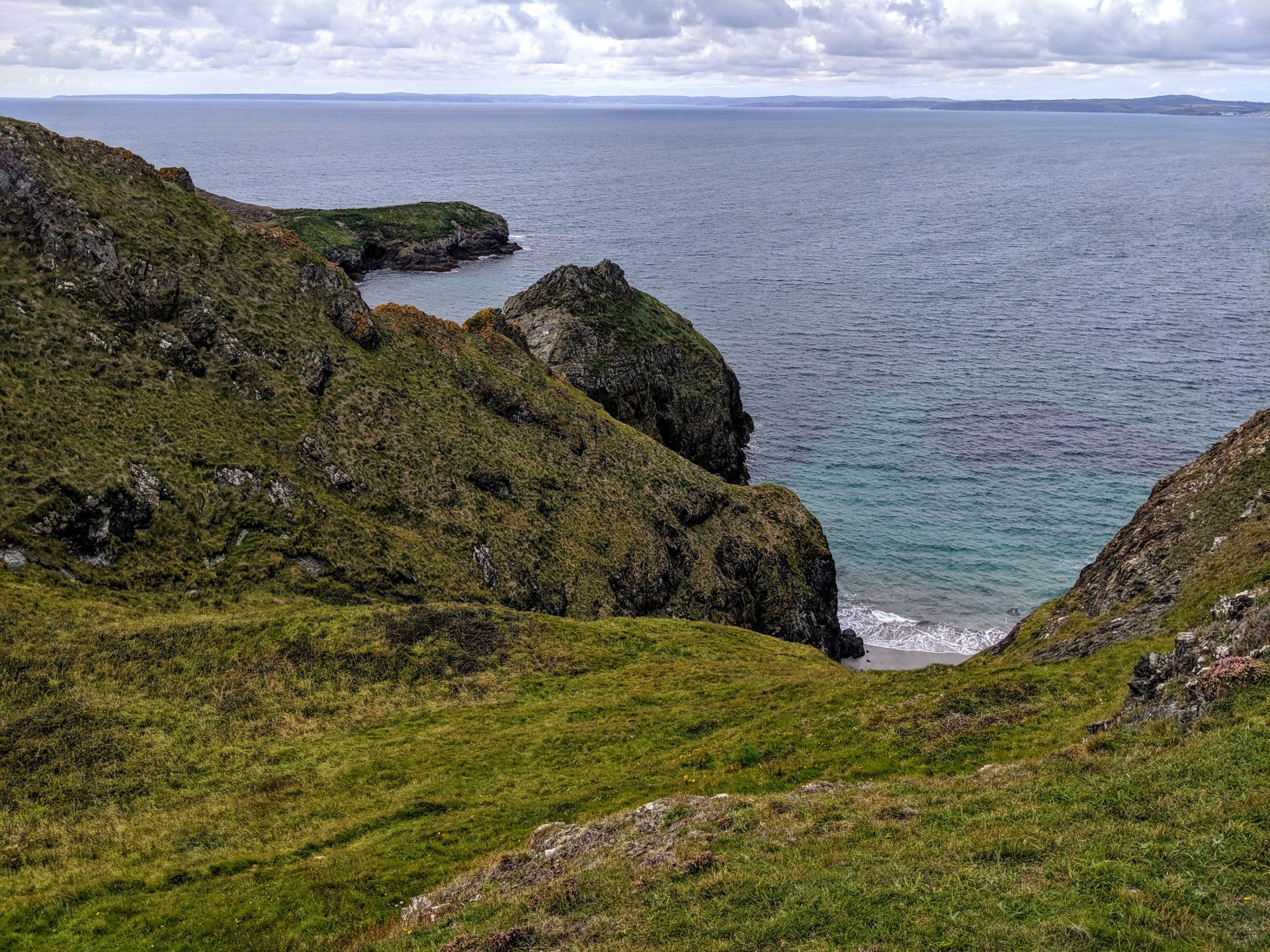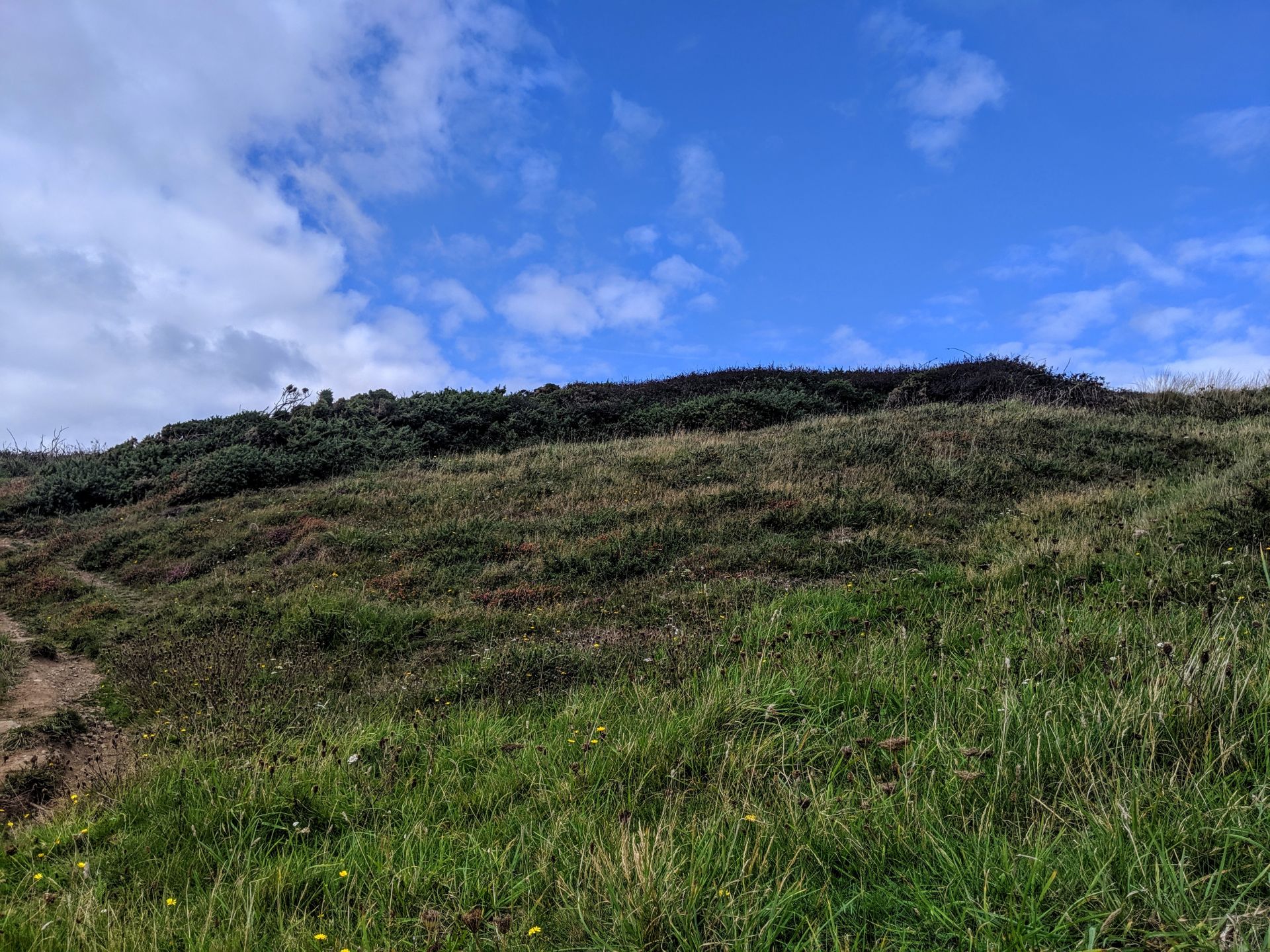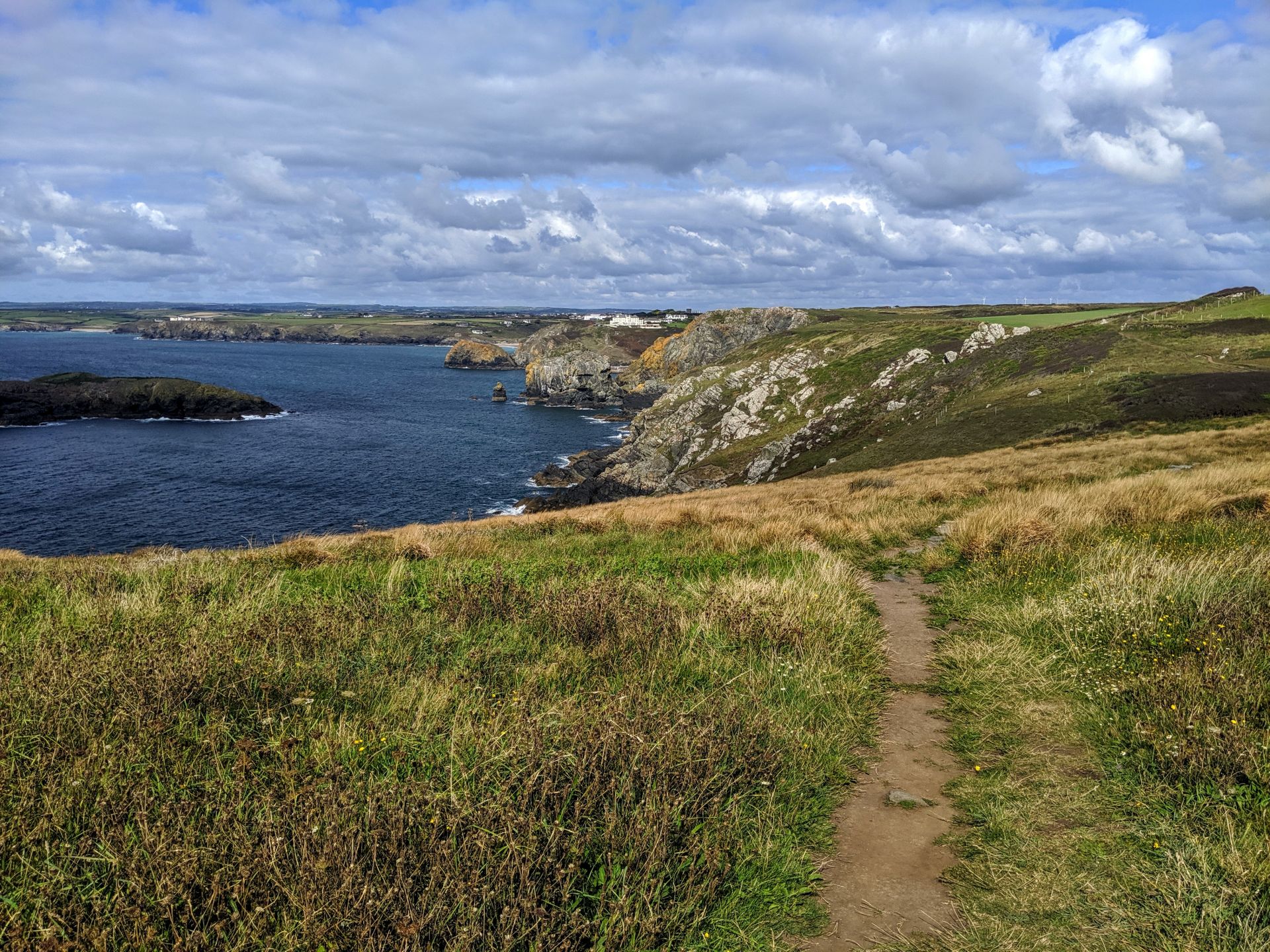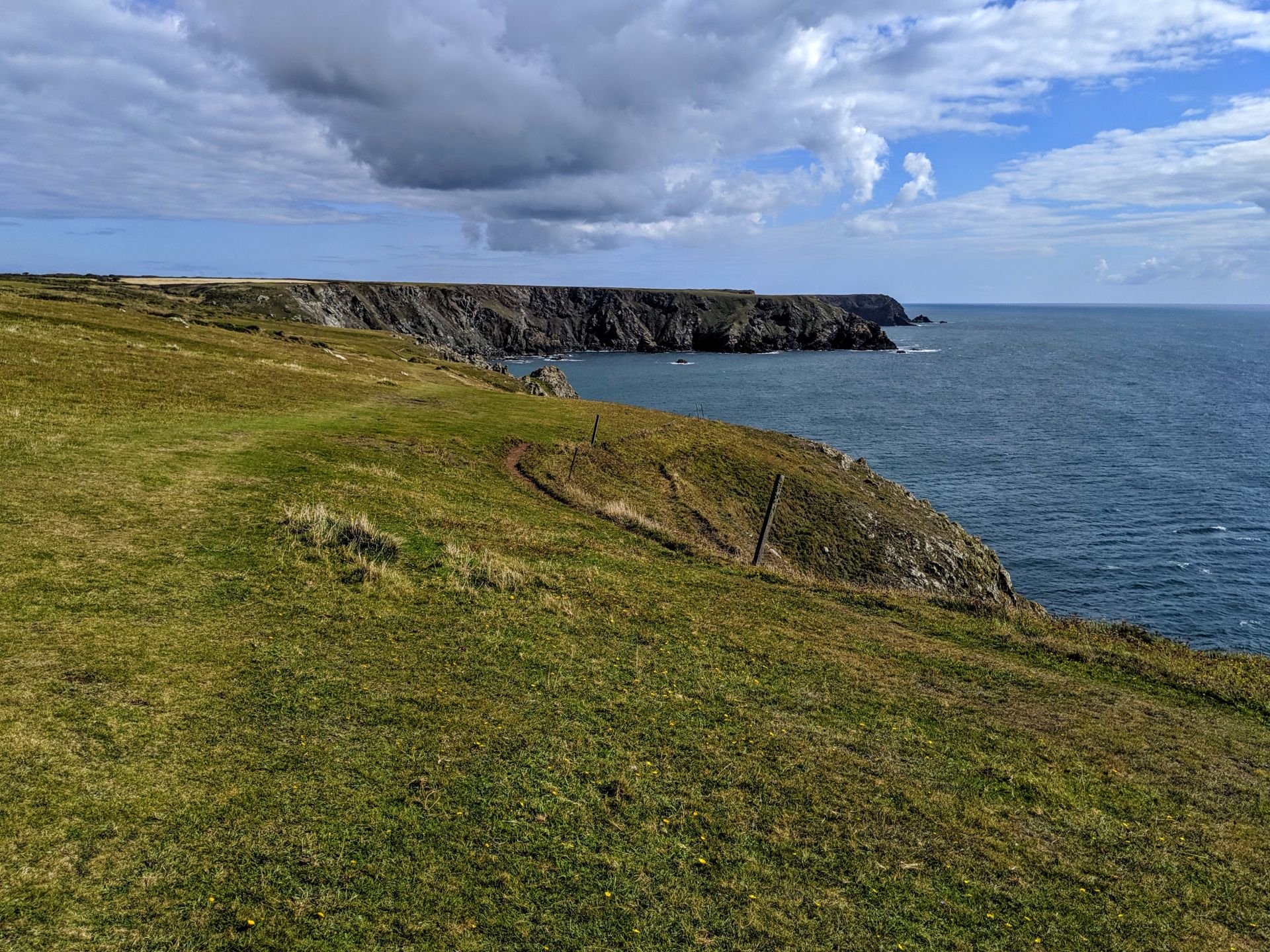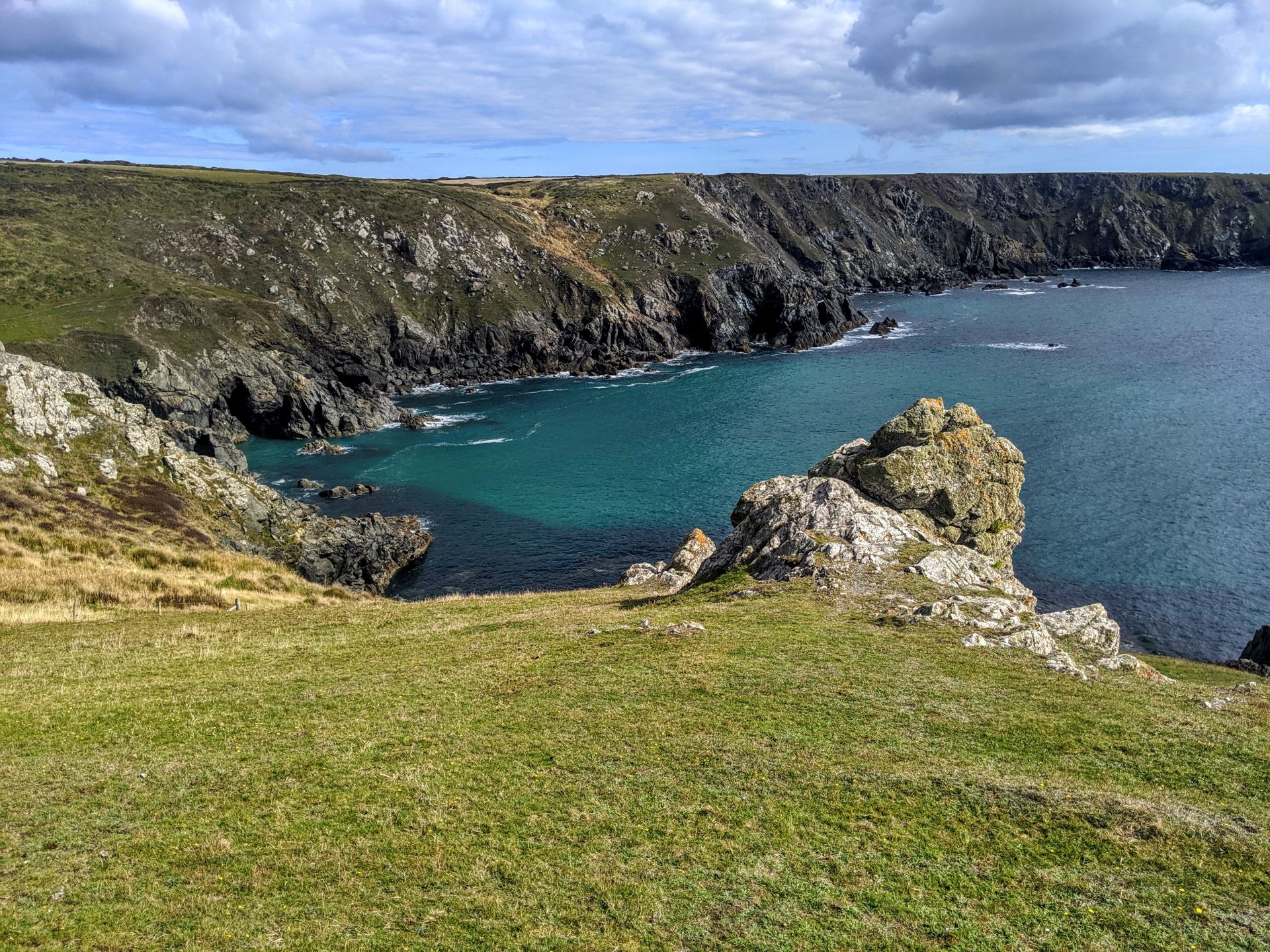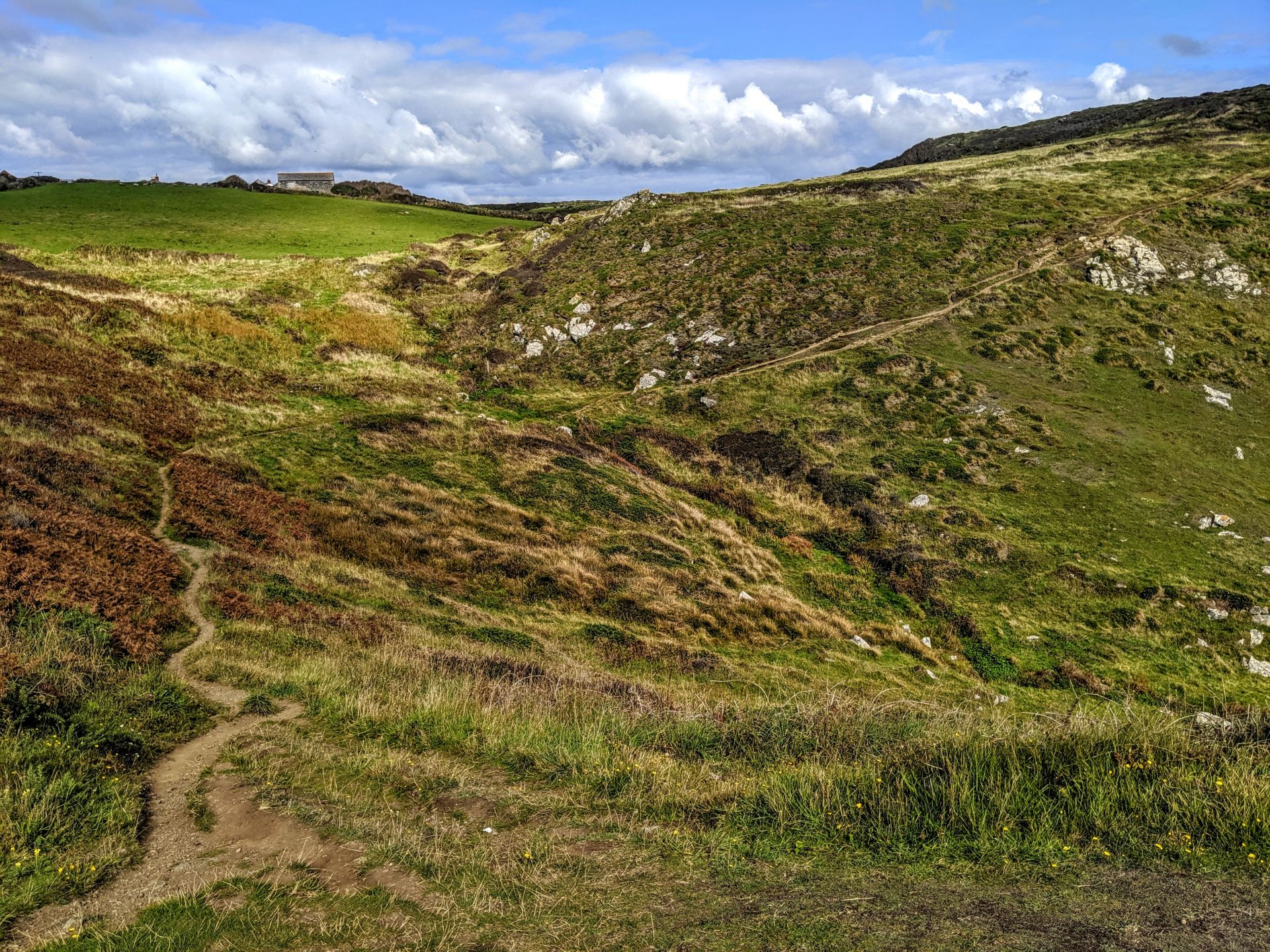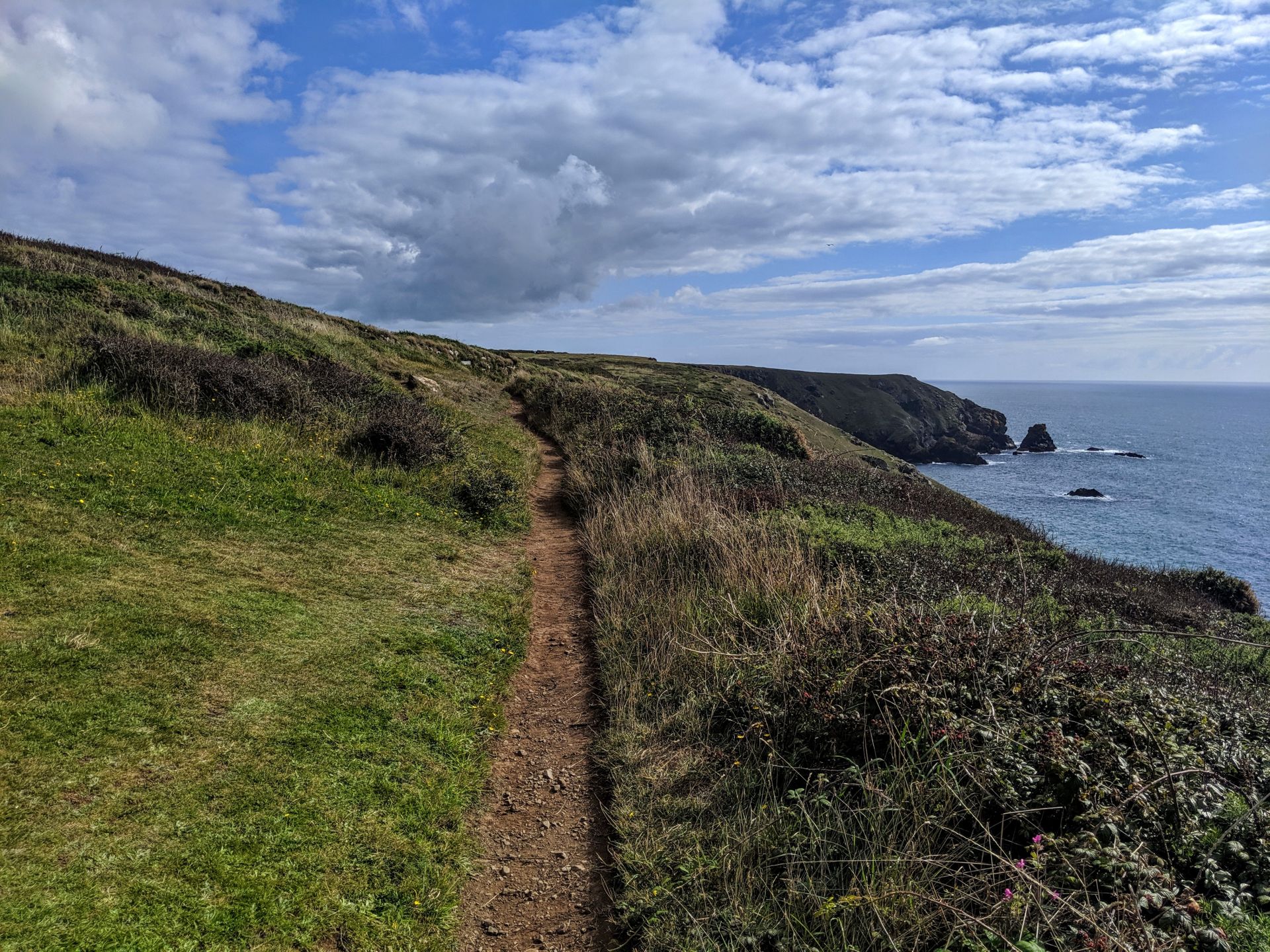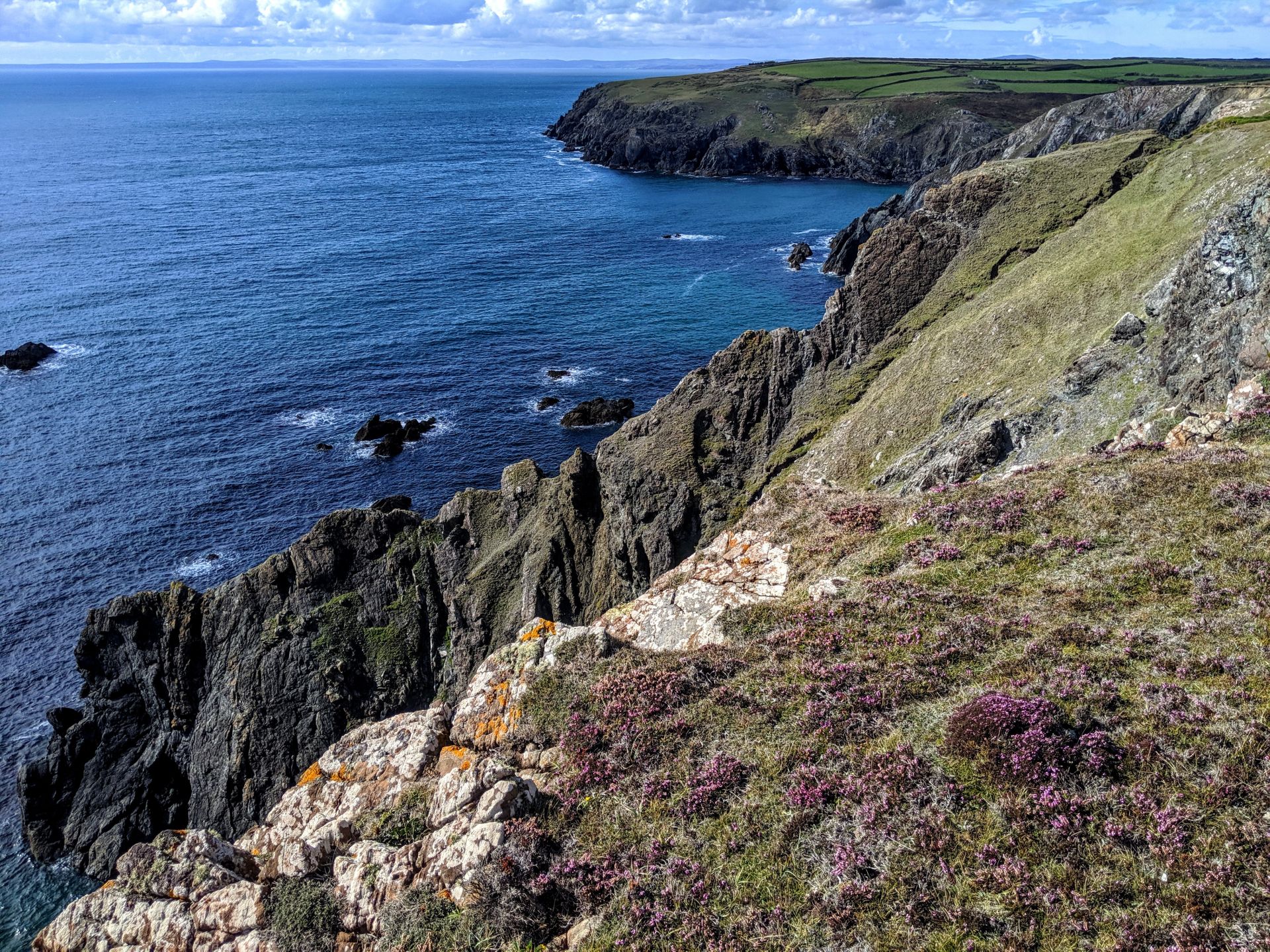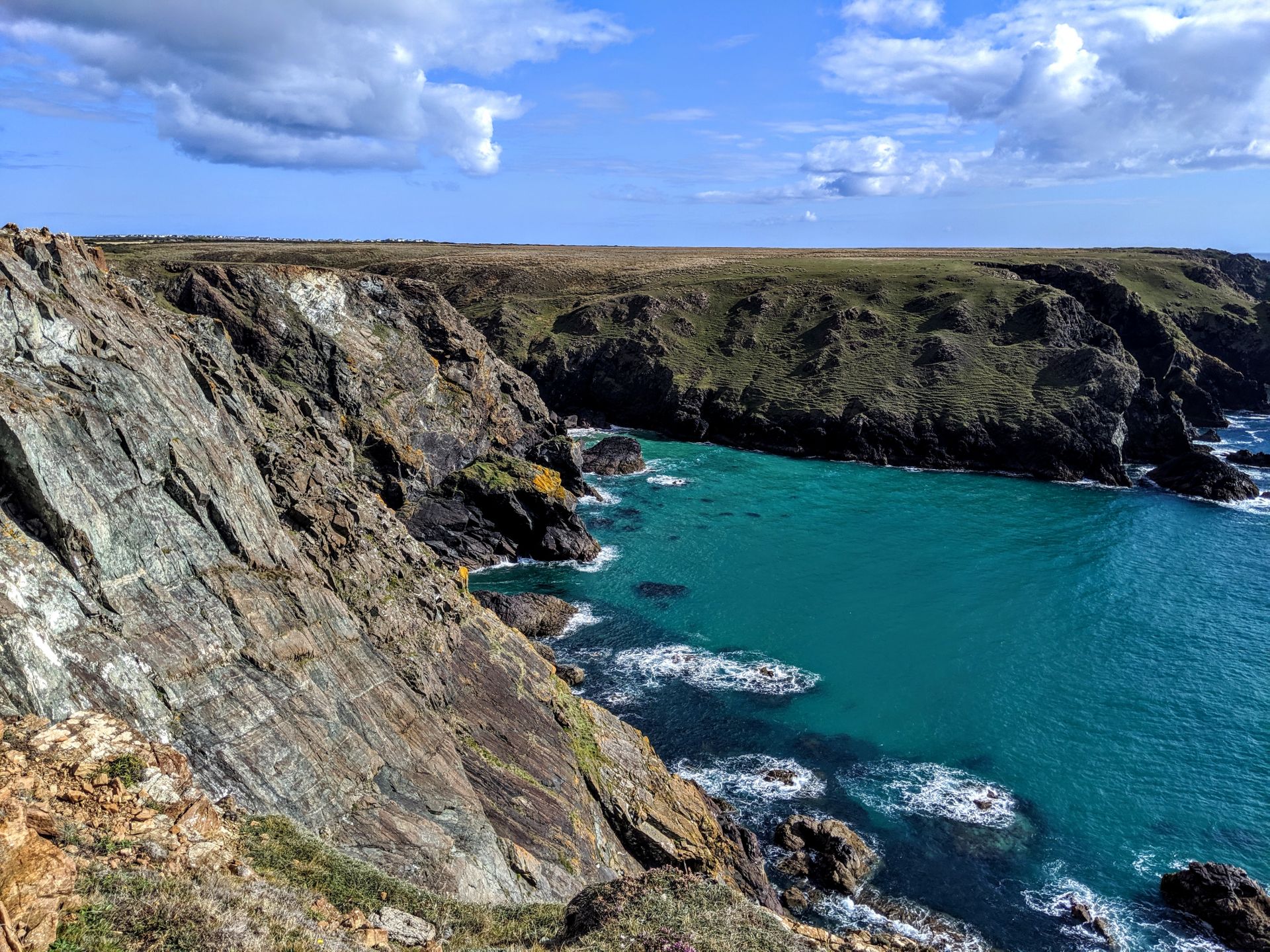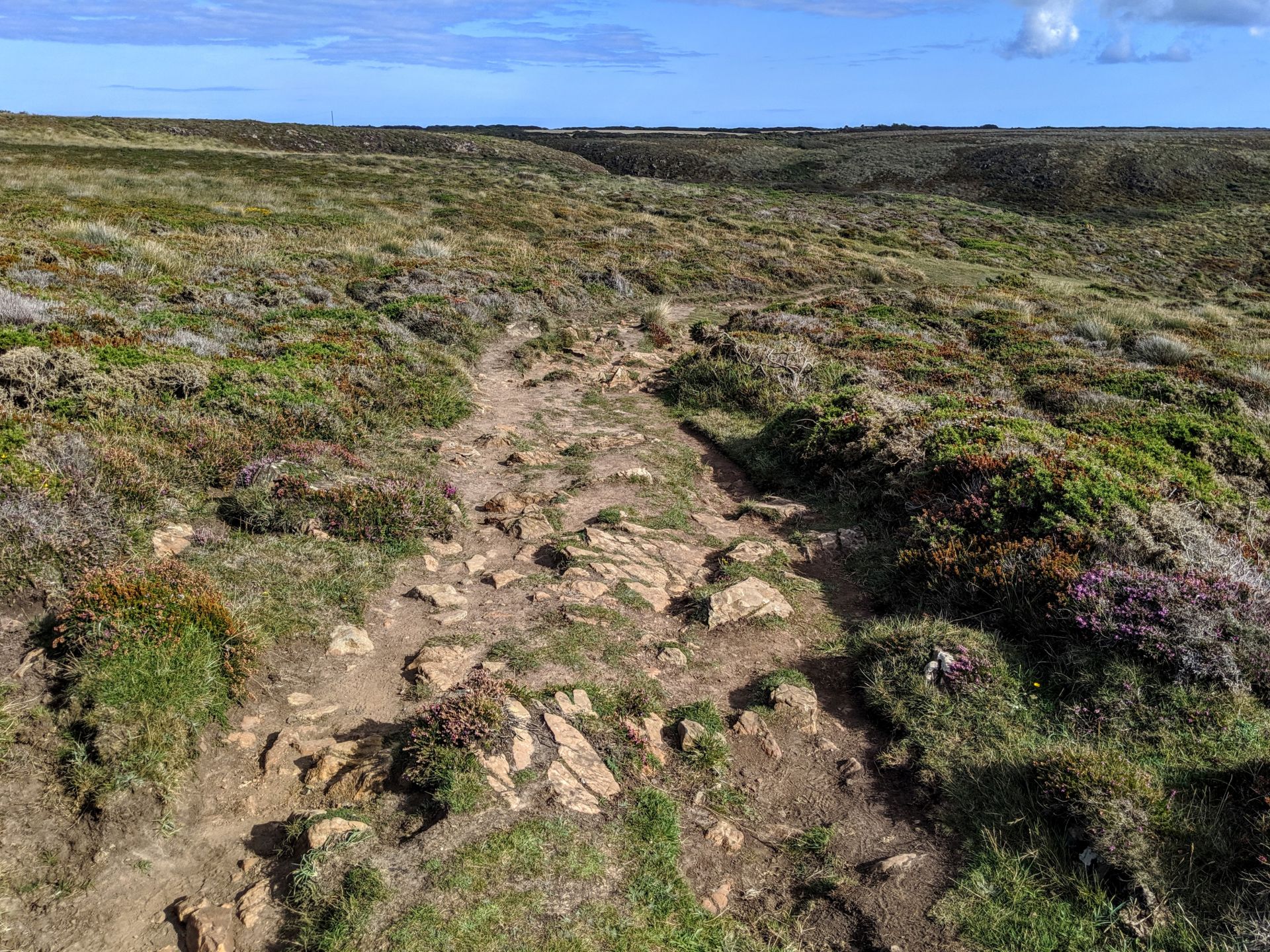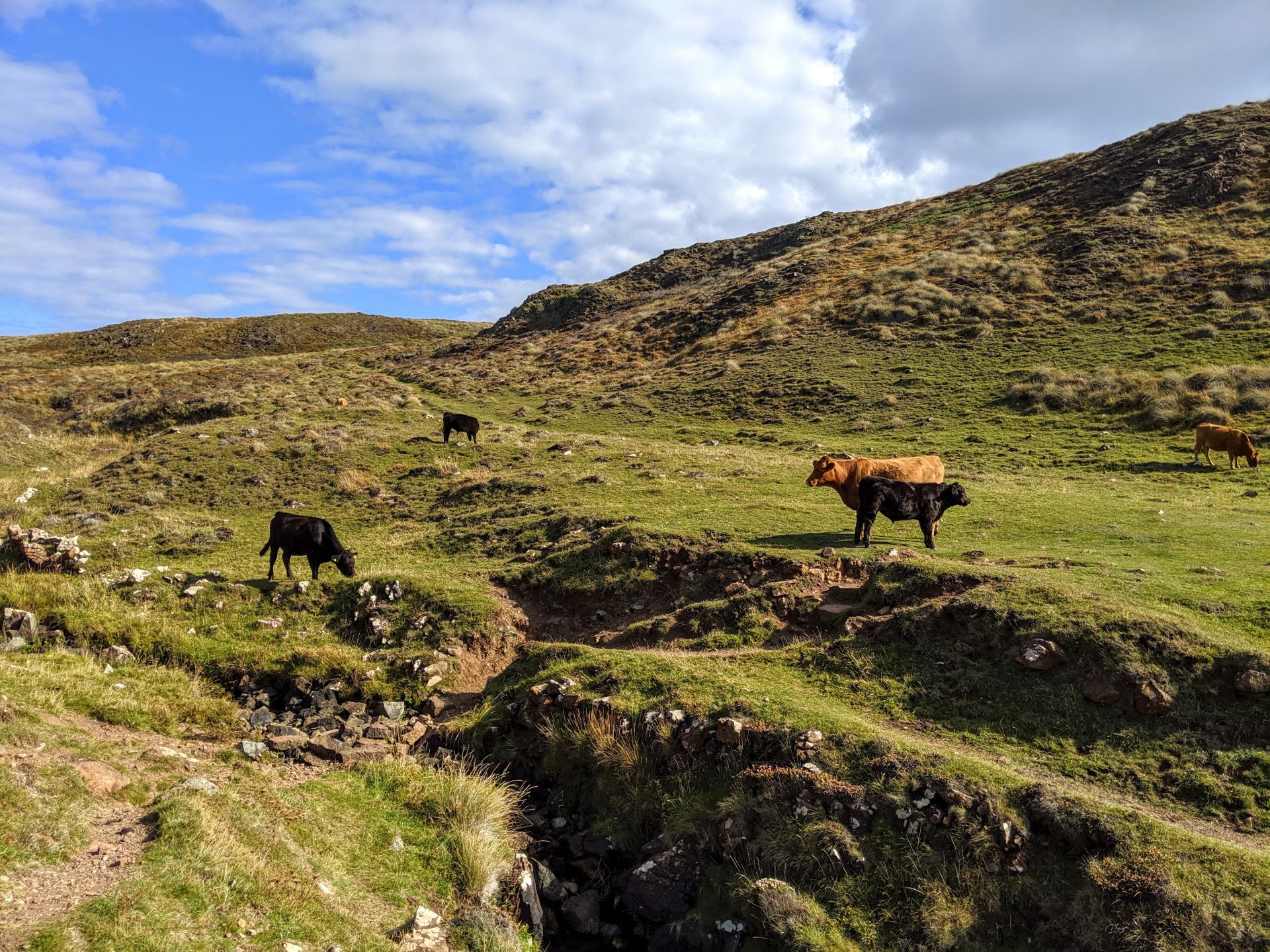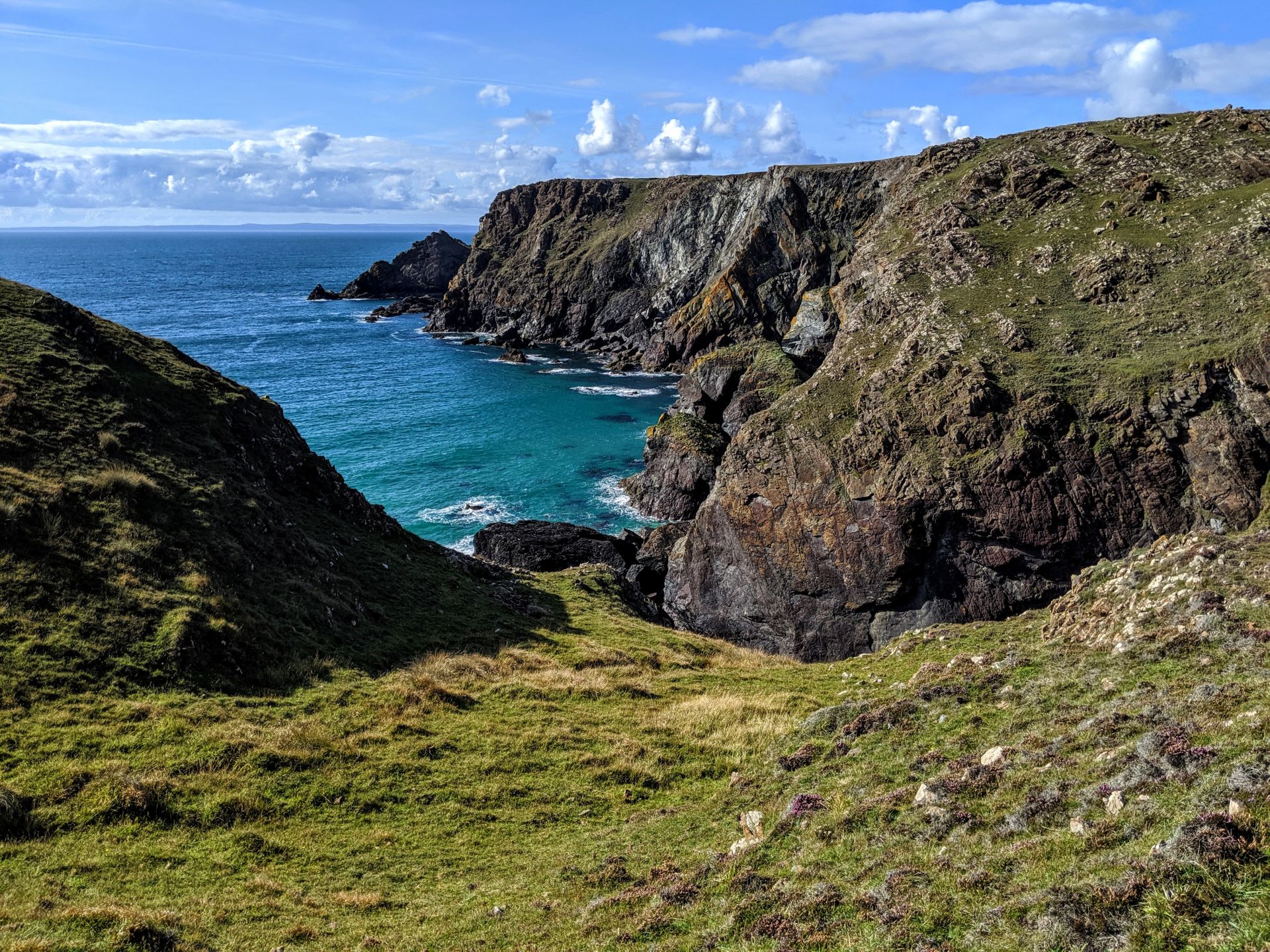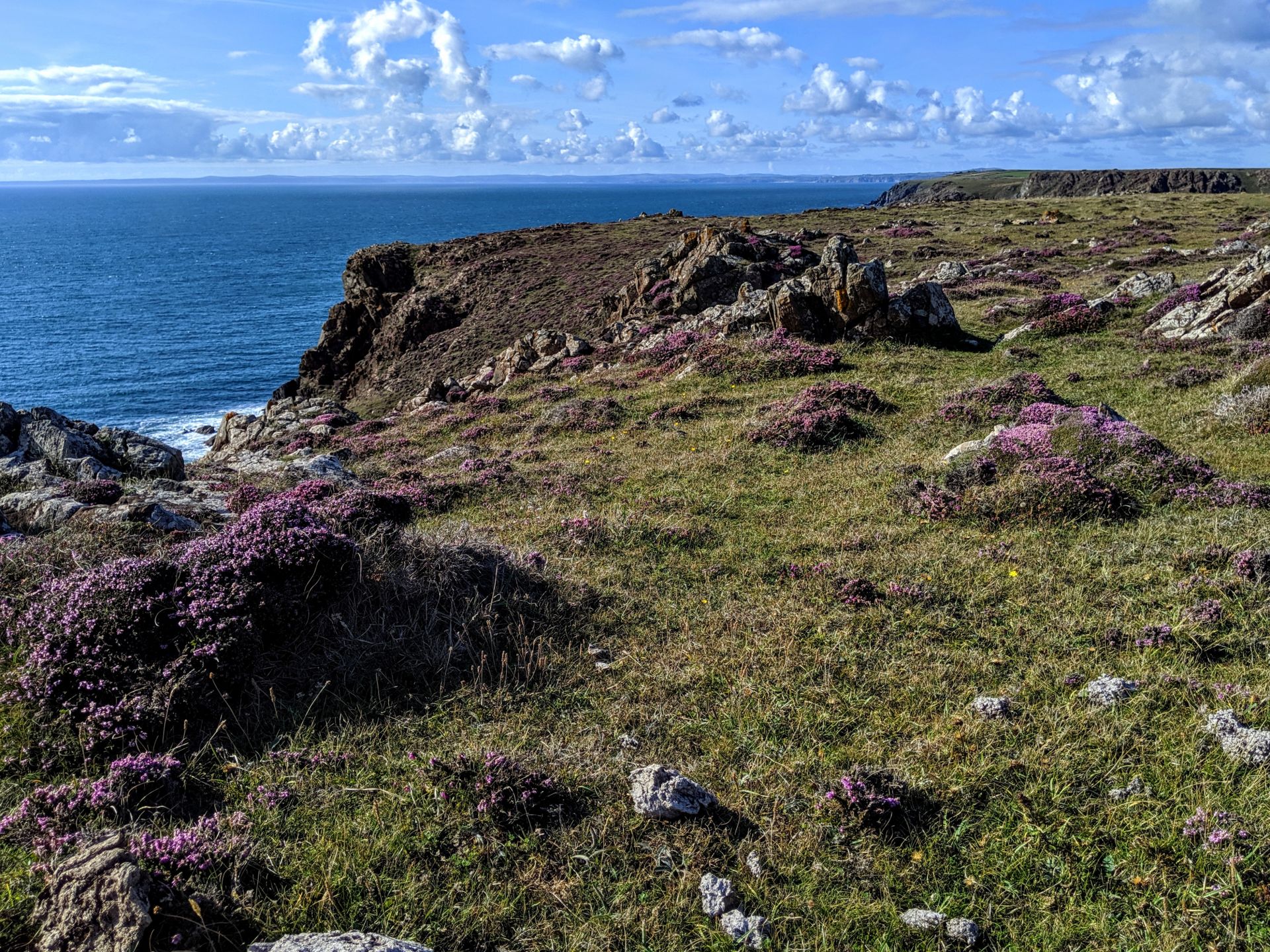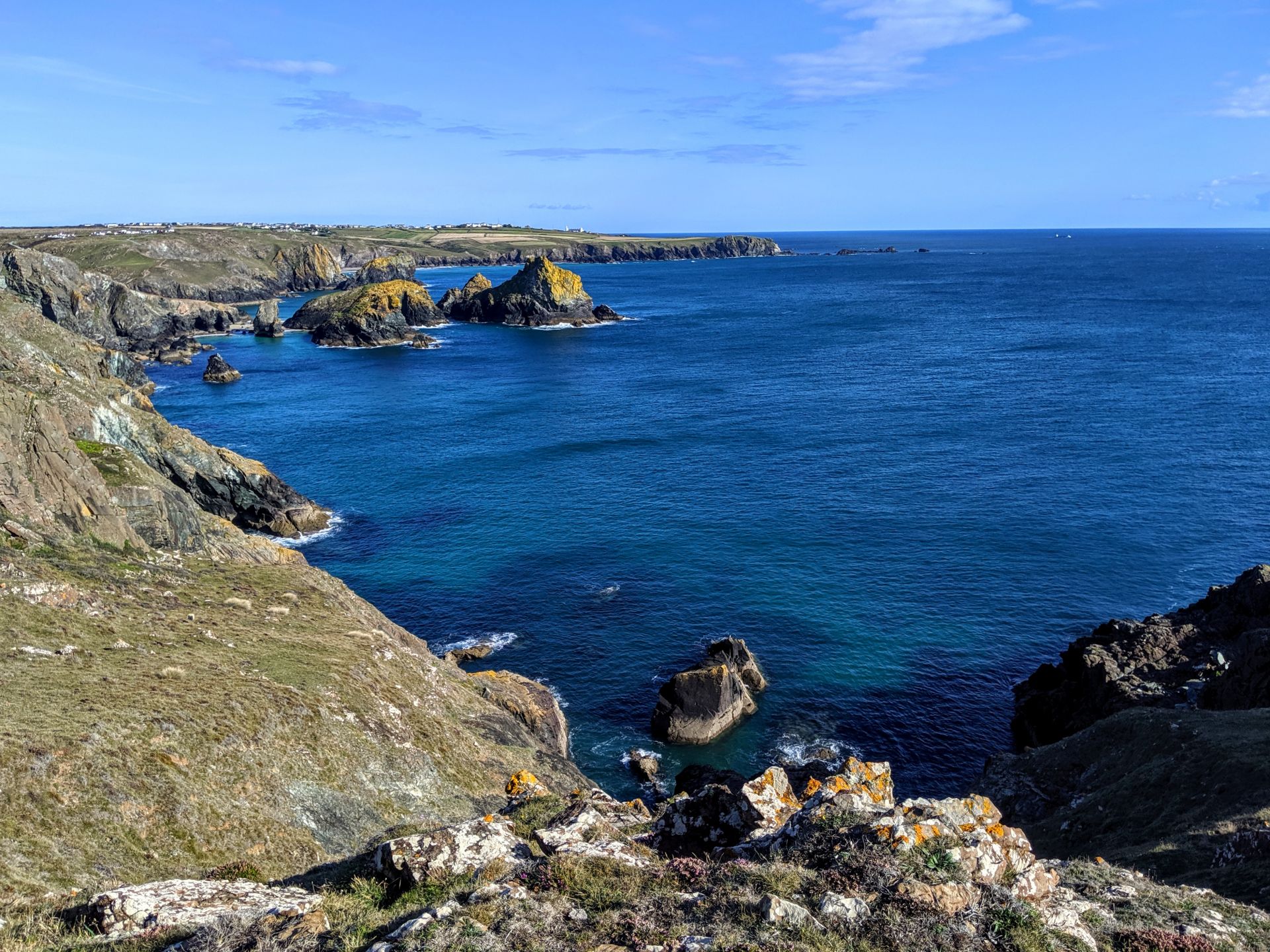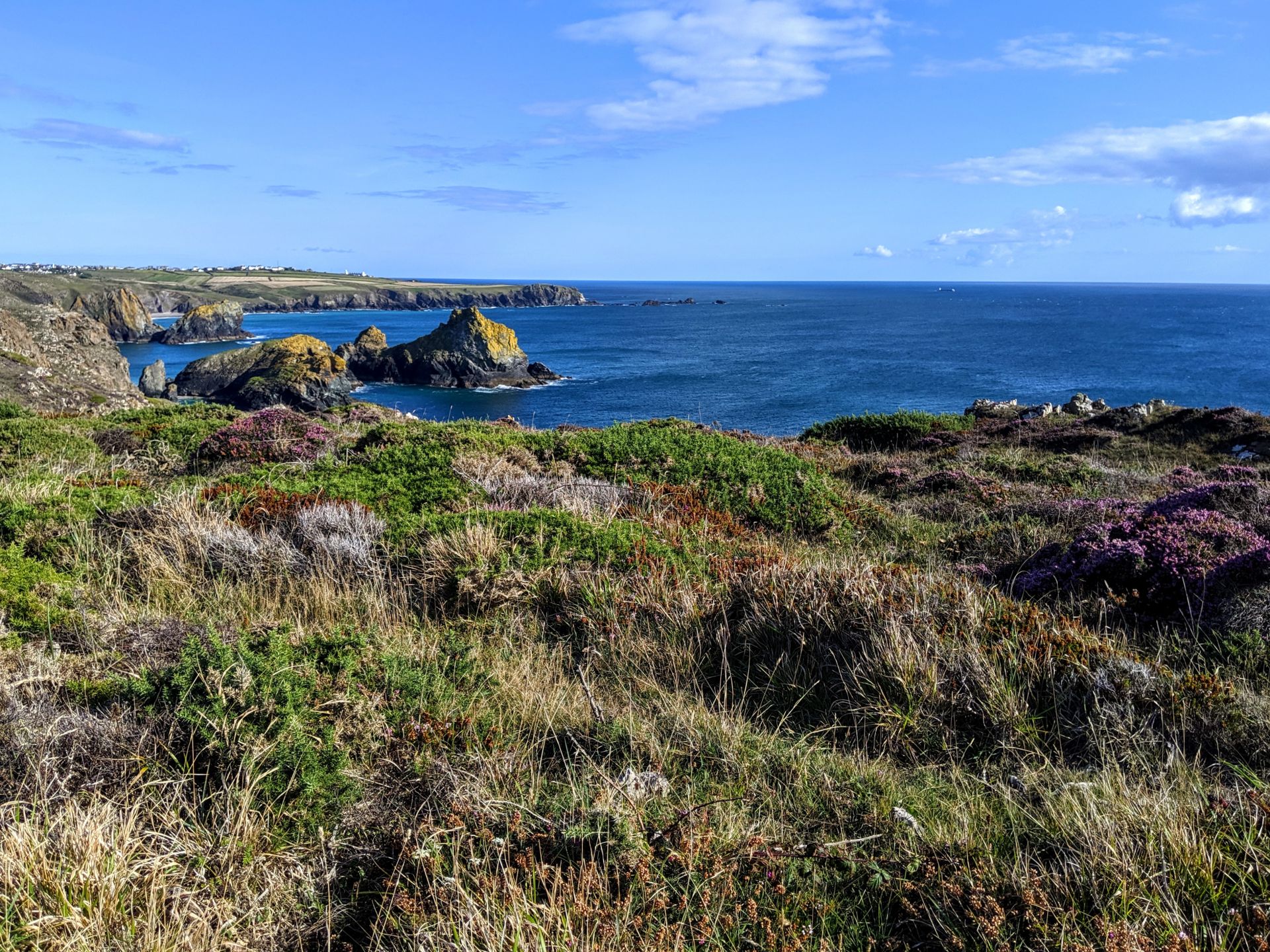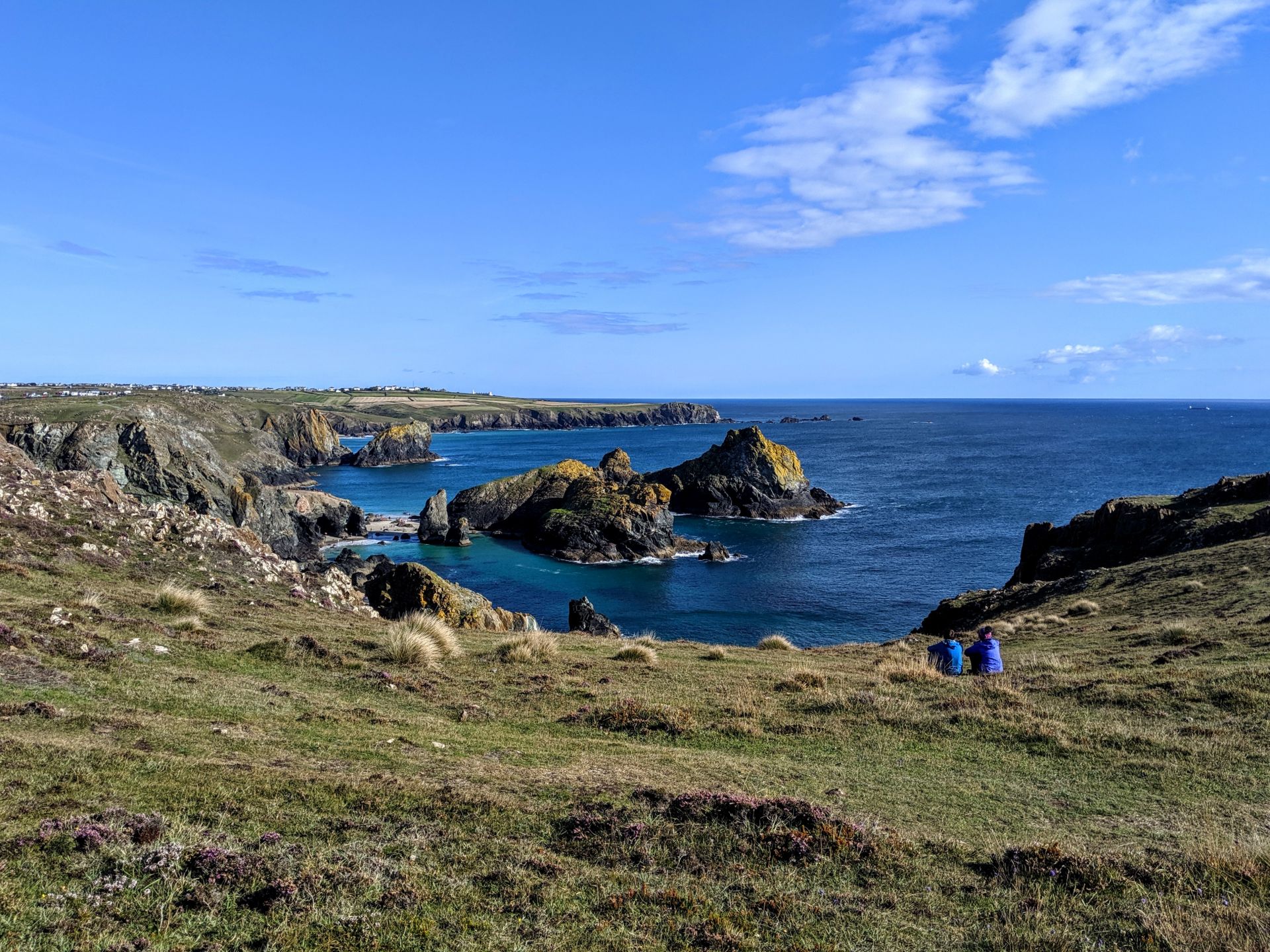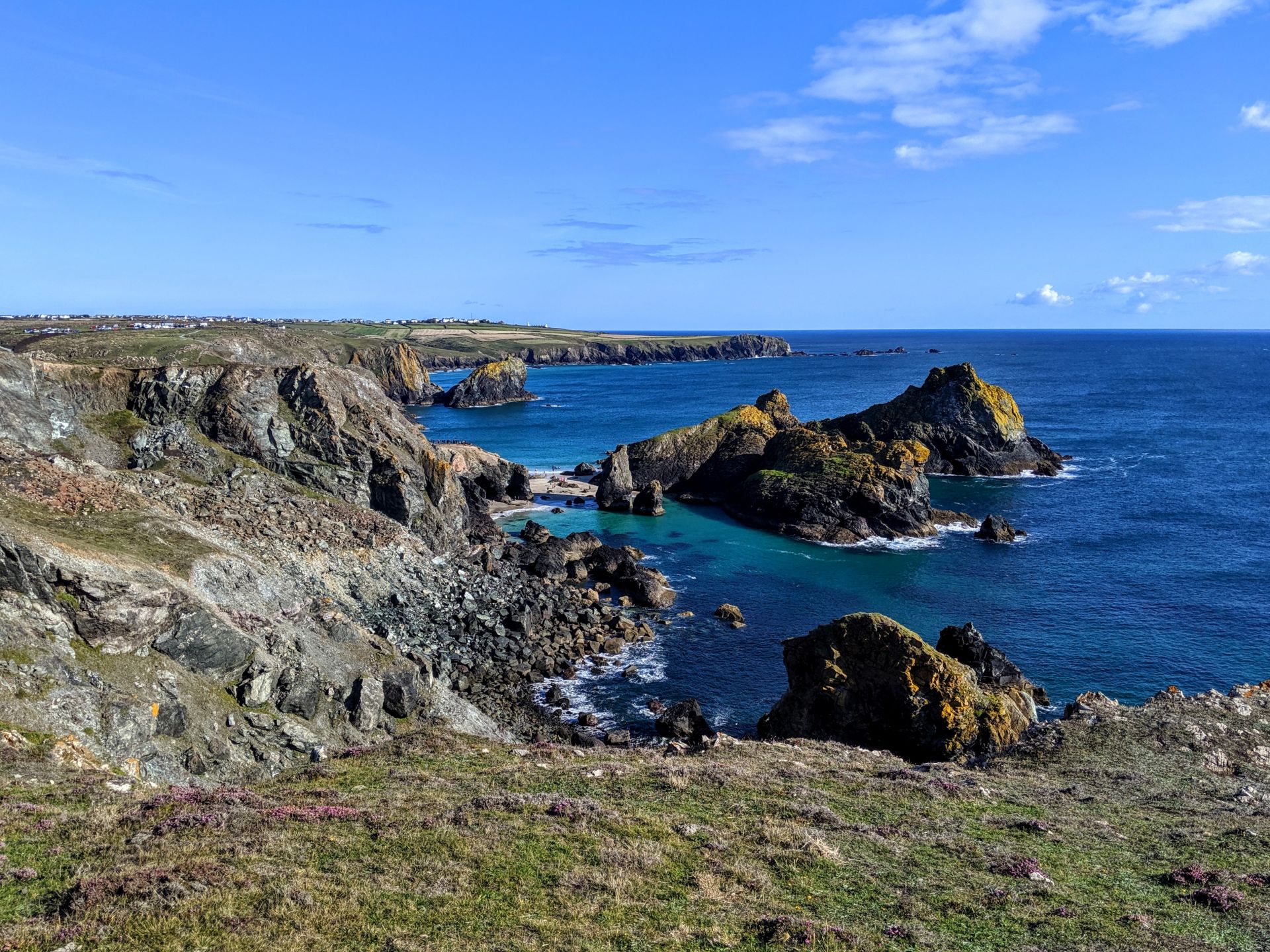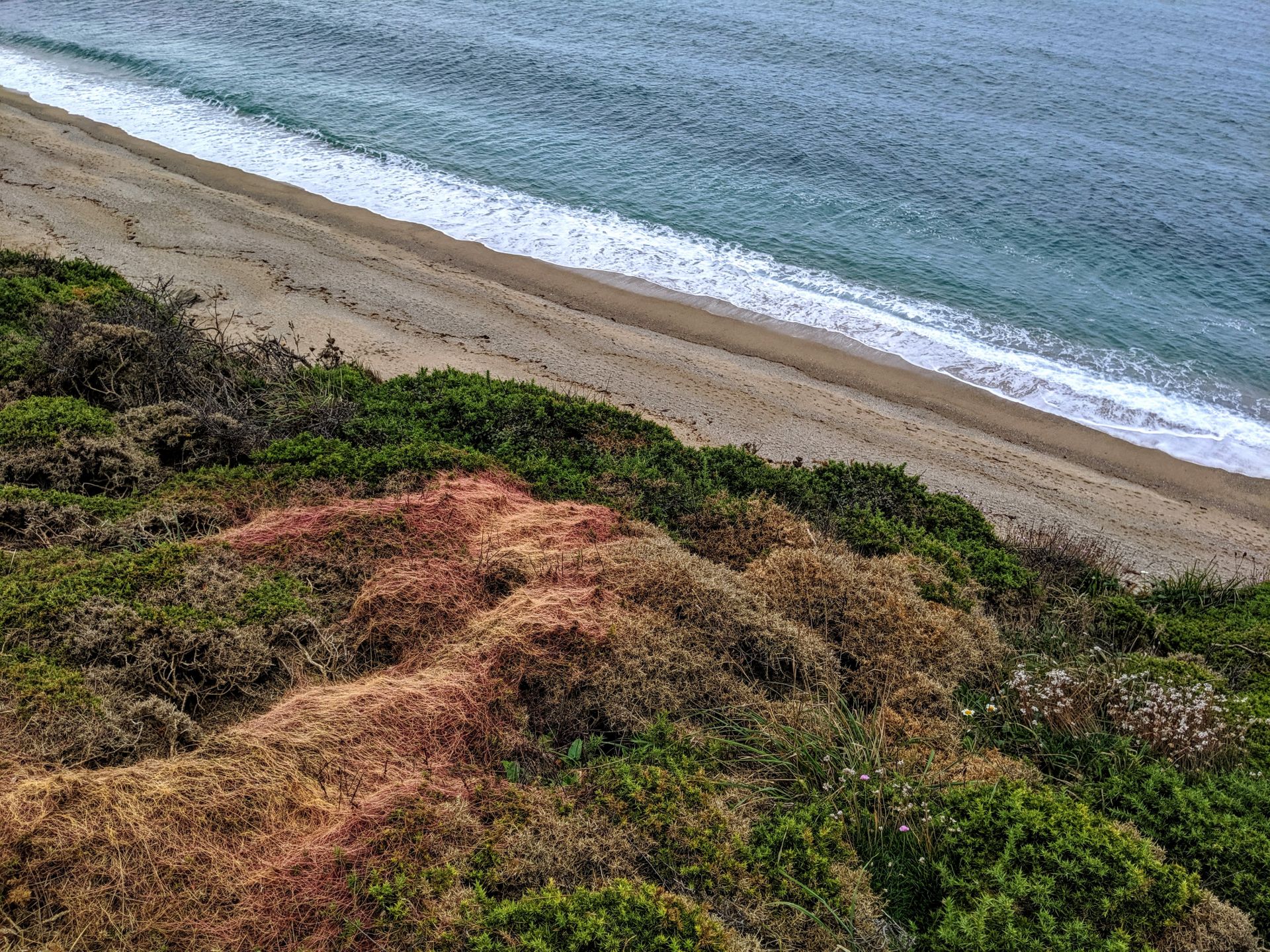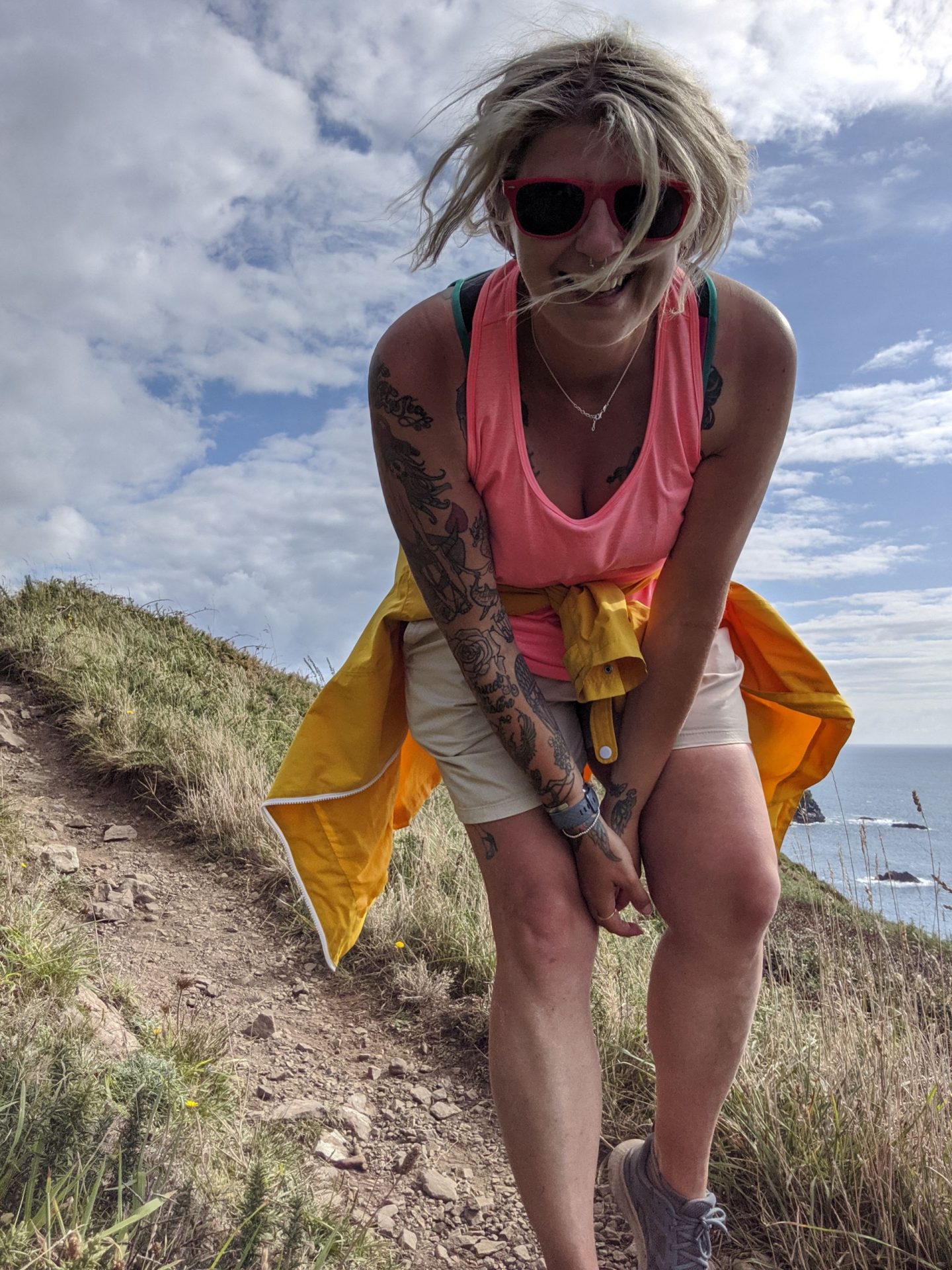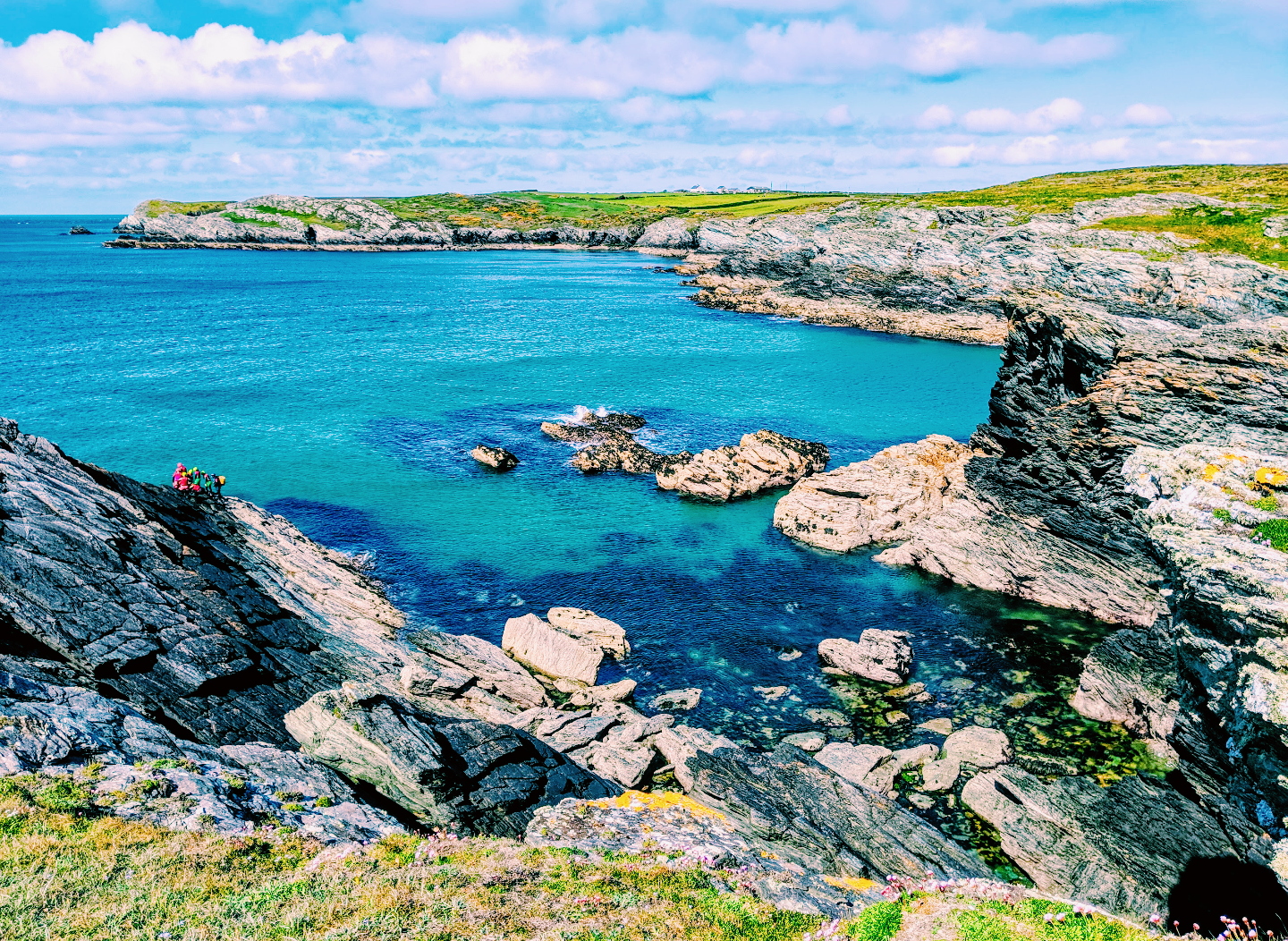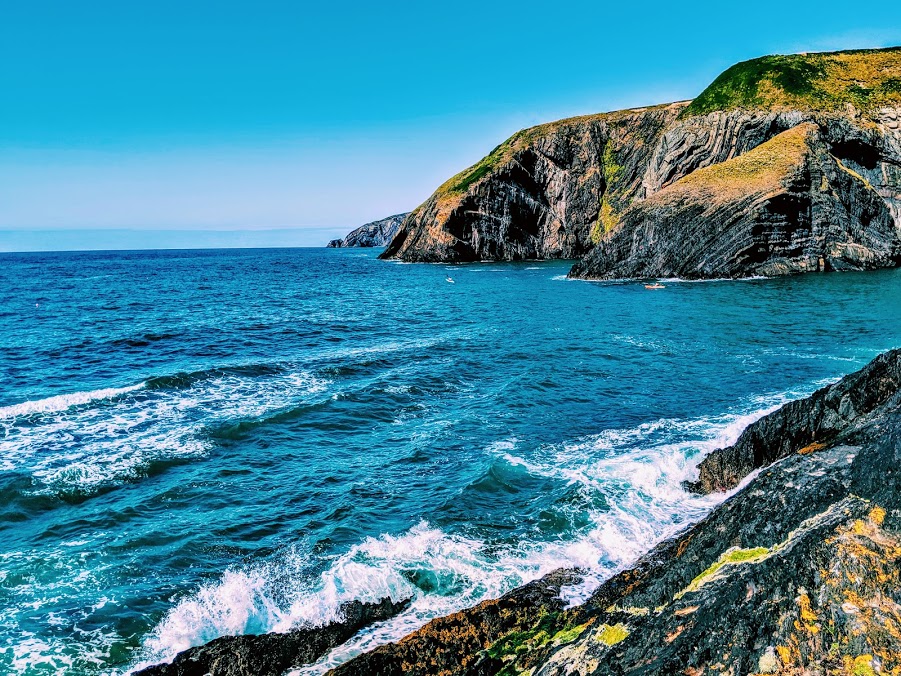“If happiness is the goal – and it should be, then adventures should be top priority.” – Richard Branson
Finally getting to the end of my Cornwall posts, in fact tomorrow is the last post. Which makes this my last day of walking, it turned into a rather emotional day but more about that tomorrow. For now lets enjoy walking along the Southwest Coast Path. The day started with an extra three miles of walking because I couldn’t be bothered to wait 45 mins for my second bus of the morning, I figured its only three miles may as well walk plus the sun was shining which I knew it wasn’t back home.
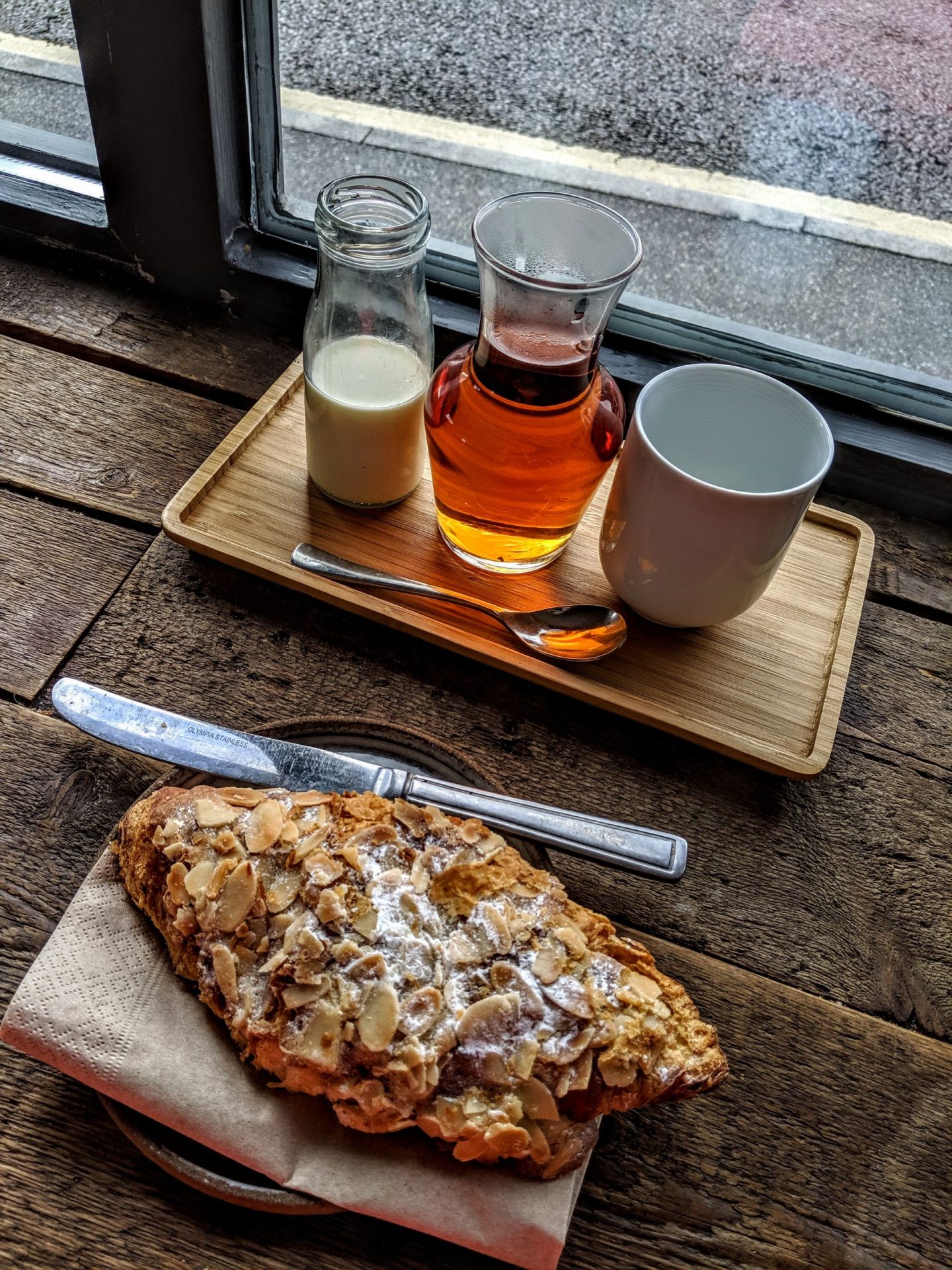
So I walked the three miles to Porthleven and decided I deserved breakfast, plus my battery pack had died a day earlier due to getting very wet in the rain so I figured I may as well charge my phone while I ate, this would end up being the most annoying thing of the day, having to keep stopping while I charged it but I was committed to photographing the whole walk and I really wanted a picture at the end!
This stretch of the South West Coast Path is, without a doubt, unique and exceptionally beautiful. The path is fairly level and easy beyond Porthleven, but then becomes narrow in places with some steep ascents and descents.
There is a special sense of wildness and isolation on the Peninsula, notably along Mullion and Predannack Cliffs which are part of the Lizard National Nature Reserve. Here rare heathers and wildflowers grow, adding to the colour and drama of the spectacular views. It is no surprise that the white sand and turquoise sea of Kynance Cove has been recognised as being part of an Area of Outstanding Natural Beauty, and the seas are particularly dramatic at high tide, and even more so on a windy day.
Loe Bar and the Loe Pool which lies behind it are unique feature in this area and have an interesting history with numerous legends associated with the Loe. Loe Pool is the largest lake in Cornwall.
Legend states that the wicked giant, Tregeagle is responsible for creating this unusual barrier. It is said that whilst running from the devil who was pursuing him, he dropped his sack of stones and here they lie today separating the Cober River and the sea. Another legend relates that Loe Pool is the resting place of King Arthur’s sword, Excalibur.
Loe Bar has been the scene of many shipwrecks, some of those recorded are as early as the 1400s. One of the most famous wrecks was that of HMS Anson in December 1807. After encountering fierce gales the Anson was run ashore on Loe Bar with the loss of over 120 lives including that of its captain, who died while trying to save a child. This tragedy inspired a local man Henry Tregrouse to invent his life saving rocket apparatus, the breeches buoy, used to throw a line to stricken vessels in order to save lives. A memorial to Henry Trengrouse can be seen in the church yard at Helston
In the past the bar was regularly broken, especially during winter months when the water level of the lake rose considerably, to let the water out from the lake and take the pressure off the mills which operated upstream. Today, a culvert allows any excess water to drain away to the sea.
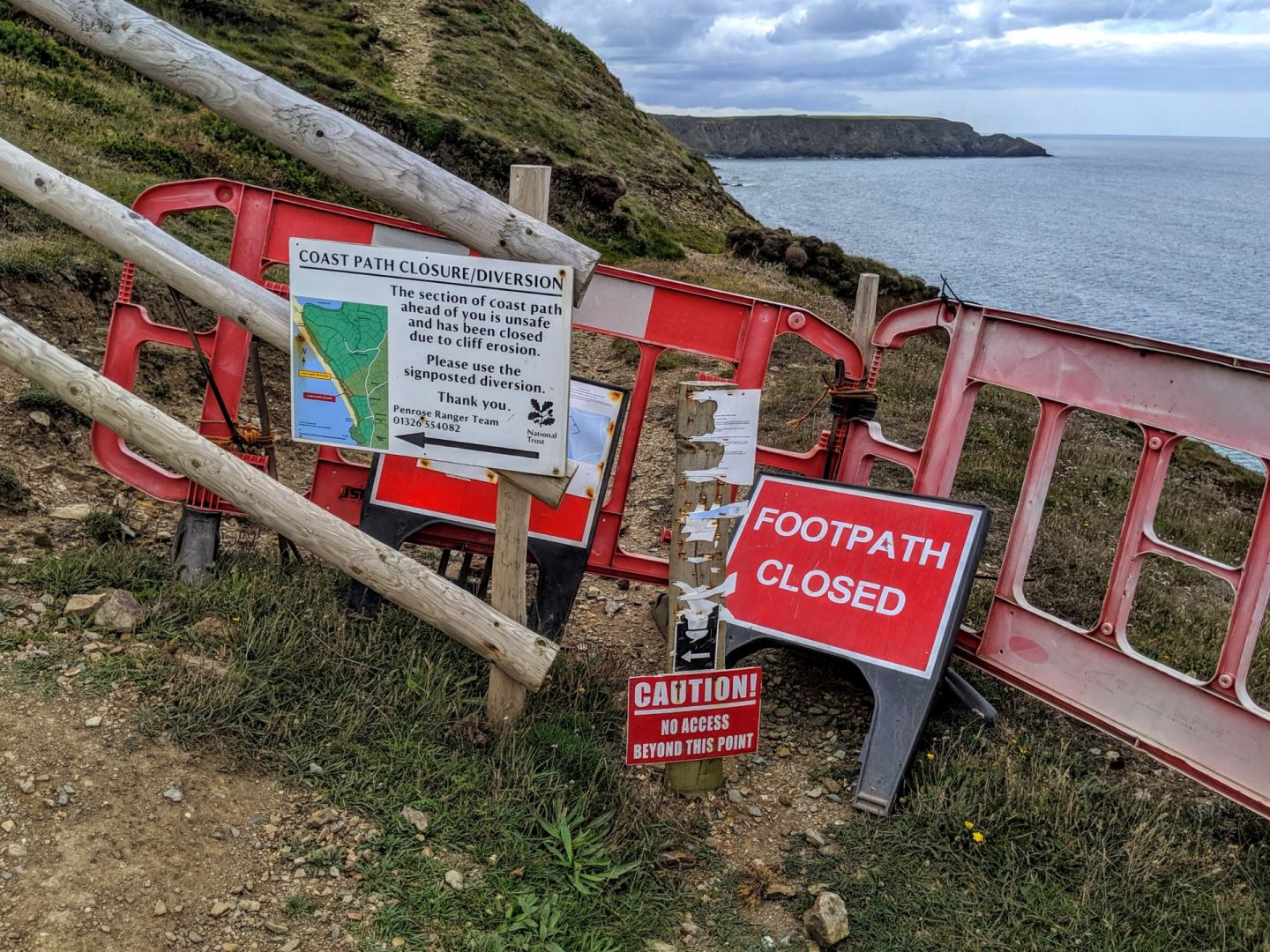
Unfortunately this was an issue in quite a few sections of the path.
I met the most wonderful lady during the morning, I mean my heart melted, she was out walking with her daughter who was about five years old and this adorable chap. She lived in the area and offered me food and tea, we spoke about making clothes and all things crafty. My heart still melts when I think of her and her generosity was just so unexpected. I met so many wonderful people along the path but this little family stole a piece of my heart.
Gunwalloe Church Cove is an unusual beach in that there is a church set below the low cliffs of Castle Mound at its northern end. The 15th Century church of St.Winwaloe with its small graveyard is in itself unusual as it has a detached bell tower.
Gunwalloe Church Cove is located on the west coast of the Lizard Peninsula roughly midway between Helston and Lizard Point. It is a popular south west facing beach of sand, rocks and pebbles. Just to the northwest lies the slightly rockier Dollar Cove or Jangye-Ryn, with lots to interest the keen geologist or explorer. The name Dollar Cove comes from the fact that a Portuguese ship carrying treasure sank here in the sixteenth century. Also in 1783 another ship carrying silver dollars was wrecked nearby. Many have searched for the treasure but as yet no-one has found anything significant.

On the main beach at Gunwalloe Church Cove, there is a large expanse of golden sand at low tide. A large car park is situated just a short stroll from the beach at Winnianton Farm. Both beaches are in the stewardship of the National Trust. There is safety/rescue equipment at Gunwalloe Church Cove and there is a Lifeguard Service during July and August. Swimming is not advised, especially at low water and bathing should only be undertaken when the beach safety flags and lifeguards indicate it is safe to do so.
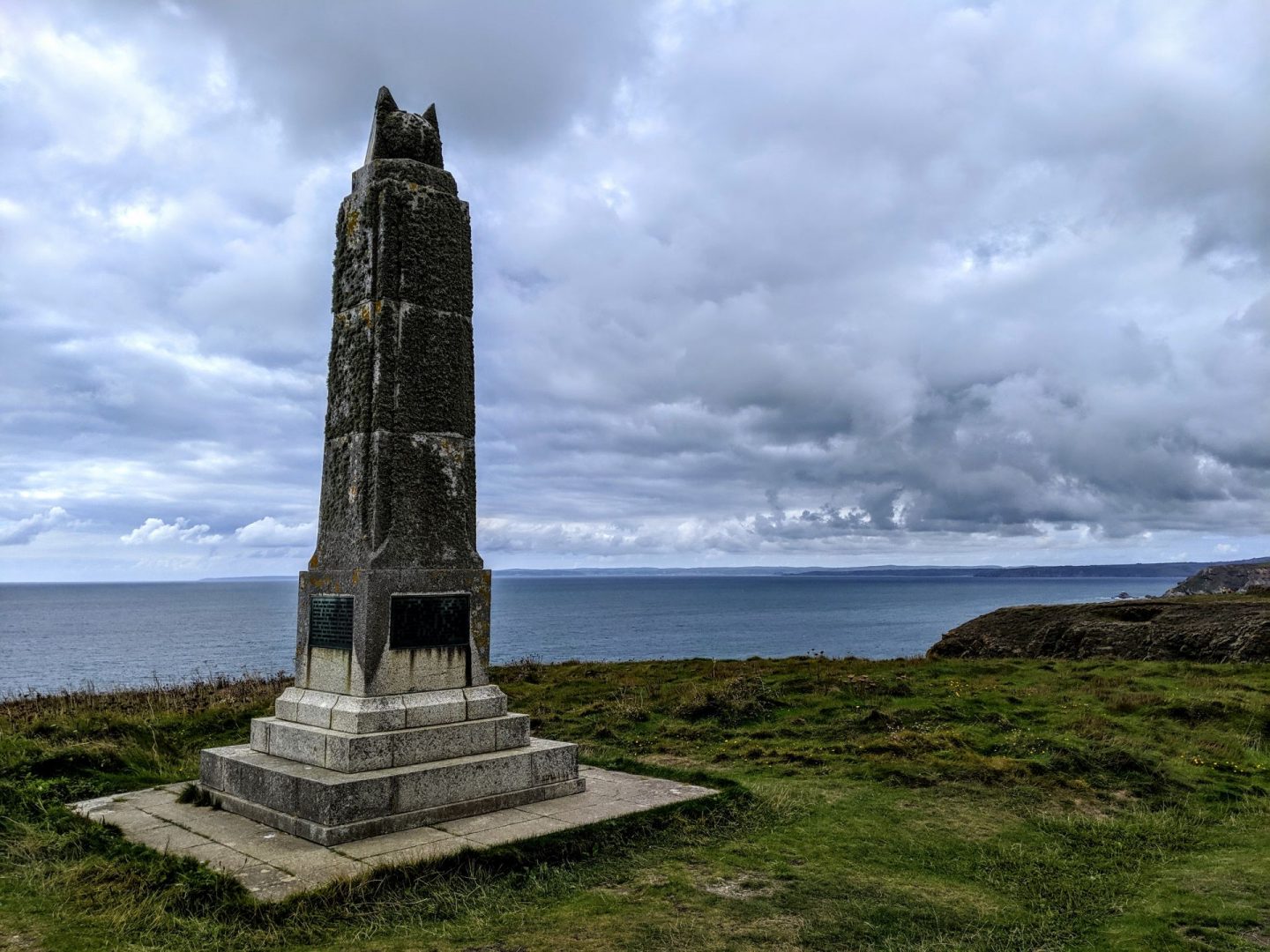
At Poldhu Point,Poldhu Cove, near Mullion, on the Lizard peninsula, is a monument on the site of Marconi’s wireless station which transmitted the first transatlantic signal at 12:30 pm on 12 December 1901. In 1901 (or 1900) Marconi had tested his ideas by successfully transmitting from the Isle of Wight to the Lizard, probably to this same station. His station here had a ring of masts 200 ft high and they were blown over in a gale.
By November 1901 this station was ready but the station at Cape Cod was blown over! Marconi then sailed for Newfoundland and established a station there at St John’s, using first a balloon to suspend the aerial, but found it too difficult to use and replaced it with a kite which adequately supported a 500 ft aerial. Rayleigh, Poincaré, Love and others were unable to explain why transatlantic radio worked. Heaviside and Kennelly suggested what is now called the Heaviside layer in the atmosphere which reflects radio signals – Appleton verified such a layer in 1924. The station was demolished in 1933.
Some highlights from the Southwest Coast Path official website!
- The Loe: the largest body of fresh water in Cornwall at the estuary of the River Cober is separated from the salty sea by the mixture of fine gravel and sand called the Loe Bar. Possibly created by storms, the Bar had formed by the 13th century and consequently cut Helston off from the sea. It is thought that Alfred Lord Tennyson was describing the Loe as the place where Sir Bedivere threw Excalibur into the water: “On one side lay the ocean, and on one lay a great water” (Idylls of the King, The Passing of Arthur).
- Gunwalloe Church of St. Winwaloe in its extraordinary setting at the foot of the dunes of Church Cove. By the porch is a figure of St. Winwaloe, there is a Norman bell tower and it is worth looking for the Celtic cross in the churchyard.
- Halzephron Cove: Halzephron is Cornish for ‘Cliff of Hell’ and on a windy day you can see why. Ships have been wrecked along this stretch of storm-battered coast and local myth warns of a freak wave which claims a life every seven years from Porthleven Sands.
- Poldhu Point and the remains of Marconi’s wireless station: on 12 December 1901 Italian Guglielmo Marconi transmitted the first transatlantic radio signals from Poldhu Head to Newfoundland. Learn more about this in The Marconi Centre which is open to visitors.
- Views of the pretty harbour of Mullion Cove and the village of Mullion above.
- Watching the breeding colonies of kittiwakes, cormorants and guillemots on Mullion Island.
- Keeping a lookout for the famous Cornish Choughs. These acrobatic birds are members of the crow family and have a red beak and red legs. They are England’s rarest breeding variety, but thanks to careful farmers and landowners who work alongside initiatives like The Cornish Chough Project these beautiful birds are gradually returning to the Cornish Coast.
- Spotting the grazing Soay sheep and Shetland ponies.
